
SEPTEMBER 2023 - VOL 84 | NO. 5 The Voice for Missouri Outdoors CONSERVATION FEDERATION SPECIAL WETLANDS EDITION
PRESERVING OUR CONSERVATION HERITAGE
For more than eighty-seven years, the Conservation Federation of Missouri (CFM) has served as “The Voice for Missouri Outdoors.” Join in our efforts to secure our stronghold as advocates for our state’s wildlife and natural resources by becoming a dedicated member of our Founders Circle.
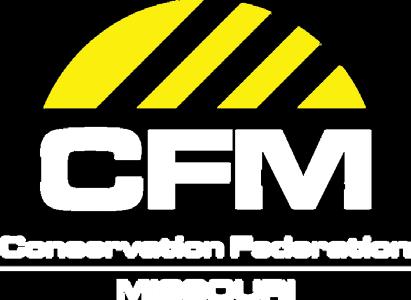
Your contribution will play an influential role in preserving Missouri’s rich outdoor heritage.

Each year, earnings from the endowment will be used to support CFM’s education and advocacy efforts. Special recognition will be given to those who reach each level of giving. Additionally, memberships will be recognized at our annual Convention.
Make your contribution today, to preserving our state’s conservation legacy.
2 CONSERVATION FEDERATION FOUNDERS CIRCLE For more information contact Michelle at 573-634-2322 Ext. 104 or mgabelsberger@confedmo.org Founders Circle Levels Bronze - $5,000 to $9,999 Silver - $10,000 to $34,999 Gold - $35,000 to $74,999 Diamond - $75,000 or More Bronze Level Zach Morris-2022 David Urich-2022 Mike Schallon-2023 Liz Cook-2023 Gene Gardner-2023
Missouri's Cherished Wetlands
Welcome to the Special Wetlands Edition of the Conservation Federation magazine. This special edition is the culmination and work of many dedicated conservationists across Missouri and beyond. I hope you take the time to read all these articles and come away with a greater appreciation of these fragile ecosystems.
This journey started in our Wetlands and Waterfowl Resource Advisory Committee several years ago. It incubated and grew into the Wetlands Summit CFM hosted in February 2023 at Lodge of the Four Seasons. The expertise of the hundreds of resource professionals attending from many aspects of conservation and natural resources was inspiring. The need to share this information and capture our thoughts from that gathering became apparent and necessary.
I hope to reflect on these three days we spent together at the Summit, which proved to be a critical turning point in the wetlands and waterfowl management practices for decades. As CFM members, we should feel good about bringing citizens together who use, enhance, and protect these cherished lands. This is at the heart and soul of our worthwhile mission.
With cutting-edge science and technology, how we manage these systems is changing more rapidly than we can comprehend or keep up with. This rings true in many aspects of our lives, especially in conservation and the outdoors. In retrospect, CFM has only been around for 88 years. What will it look like in the next 88 years and beyond?
One of the highlights of the Summit for me was to get to meet the legendary Lee Fredrickson. Check out the sidebar on Page 30, which outlines the honor we bestowed upon him. It’s truly remarkable for a person to work at over 300 national wildlife refuges and state and private wetlands in all 50 states. He mentored over 75 graduate students as well. Talk about quite the ripple effect he will have for generations to come. His dinner speech was remarkable and legendary.
I want to thank the Missouri Wetlands Summit Planning Team once again. Many of them authored articles for the edition.
This committee put hours and days into their presentations and worked through logistics, topics, tiny details, and much more. Many are unpaid volunteers for CFM, some modern-day legends in my book, mentors to many, and a few characters and jokesters mixed in for good measure! However, the thing that rings true in all of them is their passion.
So where do we go from here? There certainly is no time to rest on our laurels. We must continue to forge ahead, pivot, adapt, and change in the name of science. Otherwise, we will be left behind, and these precious resources and species will be gone forever.
It was very educational for me to put this Special Wetlands Edition together for you. I hope it remains a resource document for years to come. Please put it in your magazine rack at your waterfowl camp, give a copy to a young outdoor enthusiast, or stick it on a shelf for someone to pull out and read long after your earthly sun rises and sets in the outdoors have passed. Enjoy!
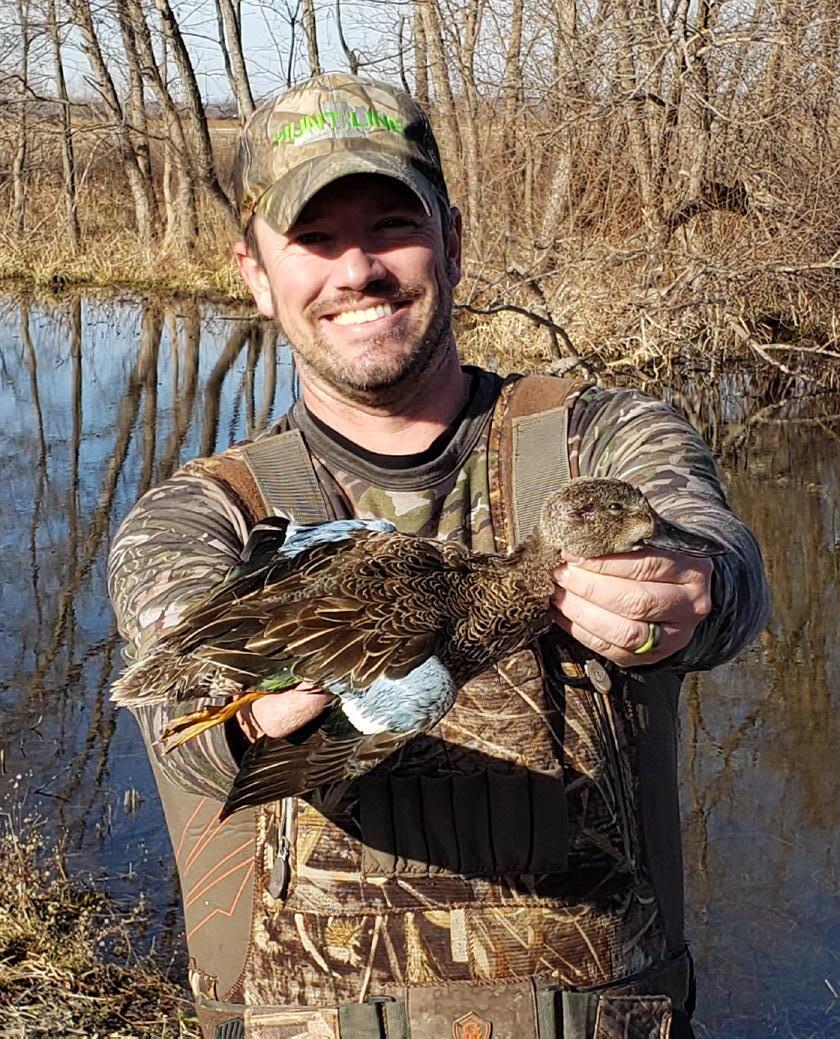
Yours in Conservation,
Tyler Schwartze CFM Executive Director, Editor
SEPTEMBER - 2023 3
Director’s Message
Waterfowl hunting is just one of the many joys that we can experience in our wetlands in Missouri –
(Photo: Zach Morris)
CONTENTS
Conservation Federation
September 2023 - V84 No. 5
OFFICERS
Zach Morris - President
Bill Kirgan - President Elect
Ginny Wallace -Vice President
Benjamin Runge - Secretary
Bill Lockwood - Treasurer
STAFF
Tyler Schwartze - Executive Director, Editor
Micaela Haymaker - Director of Operations
Michelle Gabelsberger - Membership Manager
Wetlands Need People!
Partnerships - A Necessity for Aquatic Systems Conservations
National Partnerships Help Guide a Small Shorebirds Road to Recovery
Our Beloved Brazen Beaver
Learning to "Think Like a Wetland"
Moist Soil Management: Just Say No to Corn!
Wetlands, Waterfowl, and the Missouri Model
Cultivating the Next Generation of Conservation Professionals: A Natural Connection
Wetlands Benefit Everyone
Amphibians to Waterfowl: Conserving the Spectrum of Missouri's Wetland Biodiversity

Missouri's Rivers of Grass
Digging Up the Dirt on Burrowing Crayfish
The Land Learning Foundation

Birders and Wetlands: A Data-Driven Love Story
Native Aquatic Gardening
Schedule
Rabbit Research
Nick Darling - Education and Communications Coordinator
Tricia Ely - Development & Events Coordinator
Joan VanderFeltz - Administrative Assistant
Emma Kessinger - Creative Director
ABOUT THE MAGAZINE
CFM Mission: To ensure conservation of Missouri’s wildlife and natural resources, and preservation of our state’s rich outdoor heritage through advocacy, education and partnerships.
Conservation Federation is the publication of the Conservation Federation of Missouri (ISSN 1082-8591). Conservation Federation (USPS 012868) is published bi-monthly in January, March, May, July, September and November for subscribers and members.
Of each member’s dues, $10 shall be for a year’s subscription to Conservation Federation Periodical postage paid in Jefferson City, MO and additional mailing offices.
Send address changes to:
Postmaster Conservation Federation of Missouri
728 West Main Jefferson City, MO 65101
FRONT COVER
This extremely rare sighting of a whooping crane was photographed on WRP property in north-central Missouri by Dale Humburg on November 21, 2021 using a Canon 5D camera and a Canon 100-200 mm lens
4 CONSERVATION FEDERATION
The
Food
13 21 31
Features Events
Swamp
Ripple Effect
for Thought - Millet 9
Highlights
Director's Message President's Message Life Members Affiliate Spotlight 3 8 11 14 Departments 32 6 18 22 24 28 32 35 38 42 44 46 49 52 55 60
Business Partners
Thank you to all of our Business Partners.

Platinum
Gold
Bushnell
Doolittle Trailer
Enbridge, Inc.
Silver
Custom Metal Products
Forrest Keeling Nursery
Learfield Communication, Inc.
Lilley’s Landing Resort & Marina
Bronze
Association of Missouri Electric Coop.
Black Widow Custom Bows, Inc.
Burgers’ Smokehouse
Central Electric Power Cooperative
Drury Hotels
Iron
Bass Pro Shops (Independence)

Bee Rock Outdoor Adventures
Blue Springs Park and Recreation
Brockmeier Financial Services
Brown Printing
Cap America
Central Bank
Community State Bank of Bowling Green
G3 Boats
MidwayUSA
Pure Air Natives
Redneck Blinds
Rusty Drewing Chevrolet
Roeslein Alternative Energy, LLC
Missouri Wildflowers Nursery
Mitico
Quaker Windows
Simmons Starline, Inc.
St. James Winery
Gray Manufacturing Company, Inc.
HMI Fireplace Shop
Hodgdon Powder Company, Inc.
Missouri Wine & Grape Board
NE Electric Power Cooperative, Inc.

NW Electric Power Cooperative, Inc.
Ozark Bait and Tackle

Williams-Keepers LLC
Woods Smoked Meats
Dickerson Park Zoo
Farmer’s Co-op Elevator Association
Gascosage Electric Cooperative
General Printing Service
GREDELL Engineering Resources, Inc.
Heartland Seed of Missouri LLC
Hulett Heating & Air Conditioning
Kansas City Parks and Recreation
Lewis County Rural Electric Coop.
Missouri Native Seed Association
Scobee Powerline Construction
Sprague Excavating
Tabor Plastics Company
Truman’s Bar & Grill
United Electric Cooperative, Inc.
Your business can benefit by supporting conservation. For all sponsorship opportunities, call (573) 634-2322.
SEPTEMBER - 2023 5
Wetlands Need People!
How can wetlands need people? Don’t people need wetlands? In the other articles in this issue, you will read about all of the benefits wetlands provide people ranging from cleaning water and reducing flood damages to providing places to connect with nature. But why would wetlands need people?

To answer this question, we first need to look at the processes that gave shape to Missouri’s wetlands. Most of them are connected to river systems. When we think of rivers, we often have an image of a river channel; however, a more accurate description of a river would extend from bluff to bluff, including the floodplain. In completely unaltered systems, both river channels and wetlands would be on the move, albeit in slow motion, shaped by the movement of water. Changing currents would carve out new paths for channels and abandon old ones that would then turn into wetlands. During flood pulses, water flowing across the floodplain would scour out depressions creating new wetlands and in places where the waters slowed, it would deposit sediment filling in some older wetlands. Thus, the locations of wetlands were also on the move. This movement is what created and sustained the diversity of Missouri’s riverine wetlands.
But today, river channels and wetlands are stuck in place, they can’t move! We have aggressively engineered river channels to eliminate the creation of new paths and the abandonment of old ones. In doing so, we have eliminated a key process that once created wetlands. We have constructed dams to regulate river flows and built extensive levee systems that disconnect river channels from floodplains.
Together these two activities have essentially cut most wetlands off from their life support system, the natural flood pulses that created new wetland depressions, eliminated older ones, and provided all with water. At the same time, we have developed elaborate ditch and tile systems to quickly drain water off floodplains and higher ground back into river channels. All these activities combined have resulted in the loss of nearly 90% of our wetlands and most of those remaining are cutoff from the formative processes that created them, shaped their unique characteristics, and ultimately sustained them.
In the highly altered river systems (channels and floodplains) of Missouri today, the fate of wetlands is now in the hands of people. Human activities now determine the amount, distribution, and characteristics of wetlands more so than natural river processes. With this in mind, we need to focus on wetland protection, restoration, and management. Can we protect the small fraction of wetlands that remain on Missouri’s landscape? Can we restore additional wetlands and the stream flows that sustained them? Can we better manage them to emulate natural seasonal pulses of inundation and drying or at least provide critical resources needed to support a wide range of wetland-dependent species? It’s up to us to work together and reimagine how we can contribute to healthier river systems (channel and floodplains) through the restoration and management of ecological flows, channelfloodplain connections, and wetlands.
6 CONSERVATION FEDERATION Feature Story
One way people have always influenced the fate of wetlands is through public policy. By our actions or inactions, we ultimately contribute to the policies that either enhance or diminish wetland protections and increase or decrease public funding for wetland/river management and restoration. In the early 1970’s, people across the nation rallied for greater protection of our nation's waters and this led to the passage of the Clean Water Act. This law made it illegal to drain, fill, or pollute “waters of the United States” without a permit. Up until that time, wetland drainage was rampant. This single law provided protection to millions of acres of wetlands and dramatically reduced the rate of wetland loss. People, at that time, provided an incredible victory for wetlands.
In a single day this spring, the U.S. Supreme Court erased these protections for over half of the wetlands in the United States in the Sackett v. EPA ruling. In this case, they ruled that Waters of the United States included only those wetlands that adjoin clearly defined “Waters of the United States.” This ruling more narrowly defined “Waters of the United States” than previous definitions proposed by Republican and Democrat administrations. The Southern Environmental Law Center estimates this ruling will eliminate protections for at least 45 million acres of wetlands.

To put this number in perspective, it has taken partners in Missouri an incredible amount of work and significant funding to restore about 200,000 acres of wetlands over the past 30 years. Chris Wood, president and CEO of Trout Unlimited said, “The court has severely eroded a 50-year national commitment to clean water, and misses the obvious point that wetlands are often connected to streams through subsurface flows.” Jim Murphy of the National Wildlife Federation elaborated, "I don't think it’s an overstatement to say it’s catastrophic for the Clean Water Act.”
Now that the Supreme Court has made this ruling, it will require the U.S. Congress to amend the original Clean Water Act to restore wetland protections or for state or local jurisdictions to strengthen protections within their boundaries. Before I said wetlands need people and now hopefully you can see it’s urgent!
Our generation needs to act now to ensure we do not lose the wetland protections we inherited from our predecessors in 1972. During a Senate debate about the Clean Water Act in 1972, Republican Senator Howard Baker noted, “As I have talked with thousands of Tennesseans, I have found that the kind of natural environment we bequeath to our children and grandchildren is of paramount importance,” he said. “If we cannot swim in our lakes and rivers, if we cannot breathe the air God has given us, what other comforts can life offer us?” Will thousands of Missourians let our elected officials know how important wetlands are to them?
I started this article by saying wetlands need people. Let me rephrase, wetlands need you!
They need you to consider the position of candidates on wetlands the next time you vote. They need you to let your elected officials know how important wetlands are to the quality of life for Missouri citizens. They need you to be involved in conservation organizations to amplify your voice amongst others. They need you to become wetland ambassadors letting others know the critical role wetlands play in reducing flood damages, maintaining clean water, providing places to connect to nature, and so much more. A great way to start is by bringing a friend with you the next time you visit a wetland to duck hunt, fish, bird, photograph, or simply watch wildlife. Research shows that developing personal connections to wetlands leads to greater involvement in wetland conservation. Previous generations of Missouri citizens have left us with an incredible legacy of working together to improve the fate of Missouri wetlands. It’s now our time to build upon their successes and leave an even brighter future for the next generations.
Missouri
SEPTEMBER - 2023 7
Feature Story
Andrew Raedeke, Ph.D. Migratory Game Bird Coordinator
Department of Conservation
(Left) People with personal connections to wetlands are more likely to support wetland conservation.
(Photo: MDC)
(Right) A map created by Harold Fisk showing the movement of the Mississippi River Channel in Southeast Missouri. This movement helped shape floodplain wetlands.
President’s Message Why Wetlands Matter
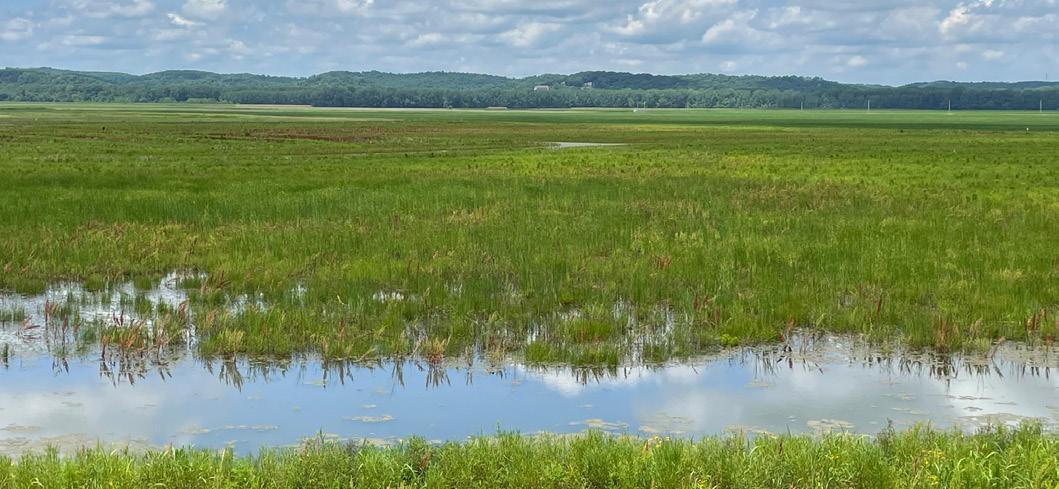
Wetlands are so important to our everyday lives. They filter the water we drink, recharge the aquifers that irrigate our crops, and help protect against flooding. Wetlands support a diverse suite of wildlife, including waterfowl and other migratory birds. The economic impact of wetlands cannot be overstated. Birders and waterfowl hunters generate tens of billions of dollars in economic activity annually, on top of the many ecosystem services wetlands provide to society.
I’d argue that everyone benefits from wetlands, but especially those of us who enjoy outdoor recreation. The sad thing is, that wetlands in the U.S. are extremely imperiled. In Missouri alone, around 90% of historic wetlands have been lost. And sadly, that number is going to increase.
Earlier this year, the U.S. Supreme Court handed down a ruling that will severely limit Clean Water Act protections for wetlands. The Court overturned decades of precedent regarding which wetlands will receive federal protections. Previously, a wetland with a “significant nexus” to a stream would be granted protection if the stream fell under the jurisdiction of the Clean Water Act. Now, two waters must have a “continuous surface water connection” and be “indistinguishable” for that protection to extend to an adjacent wetland. If you care about clean water, healthy fish and wildlife populations, or any of the myriad of services wetlands provide, this should concern you. Wetlands are an invaluable part of the ecosystem, even if they aren’t physically touching a stream. Wetlands recharge groundwater that feeds streams. They support wildlife that serve important functions in other, nonwetland habitats. To say that wetlands aren’t crucial to protected streams unless they are touching is poor policy and worse science.
So what does this ruling really mean? The legal and policy implications are still being analyzed, but we can expect that 50 to 60 percent of all wetlands in the U.S. will lose federal protection. Missouri’s long history of altering streams and floodplains to support agriculture, navigation, and development means that many of our wetland are behind levees, and therefore lack a surface connection to an adjacent stream. This means these wetlands can be filled, drained, paved, or otherwise destroyed without the requirement to replace that resource somewhere else. It means that our drinking water will be more expensive to treat. It means that flooding is going to get more severe.
And it means that many sensitive wetland species will face greater declines.
I hate to introduce the wetlands issue of our magazine on a negative note, but it’s hard to talk about wetlands without acknowledging the significance of this decision. Everyone who works in wetland conservation is facing a reality where our work just got a lot harder – but also more important than ever.
As you read through the wetlands issue, consider why wetlands are important. Think about how important it is to turn on your faucet and have affordable, clean water whenever you want it. Think about a time you went birding, or waterfowl hunting, and how important those memories are to you and your loved ones. Or consider the devastating impact flooding has had in Missouri, and those times we all wished we could do something more to help.
We can do something, and we will do whatever it takes. CFM will be right here, fighting to restore and protect our wetlands and preserve your right to recreate on them. Earlier this year, we hosted a wetlands summit, where conservationists from all over Missouri came together to plot the future trajectory of wetland science in our state and beyond. If you want to know what you can do, just stay tuned. Our members are passionate about wetland conservation, and you can be assured that when the time comes to take action, we will.
Don’t forget to get outside this fall; wetlands are a beautiful place to enjoy all Missouri has to offer. Maybe I’ll see you out there.
Zach Morris President, CFM
8 CONSERVATION FEDERATION
A wetland I helped design and build - using Clean Water Act mitigation funding, which is now in jeopardy, now supports multiple broods of ducks every spring and provides many ecosystem services. (Photo: Courtesy of Zach Morris)
missouri Native Grasslands
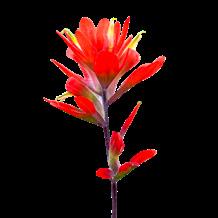

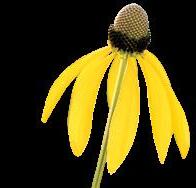


Save the Date
April 9-11, 2024


Capitol
Attendance will be limited. Early registration begins in December 2023.
Hosts/Contacts
As a result of a multi-agency and partner conversation in the summer of 2022, The Missouri Department of Conservation, Conservation Federation of Missouri, and Missouri Natural Resources Conservation Service are proud to present the 2024 Missouri Native Grasslands Summit. This all-inclusive event is designed for attendees to take a collective, deeper look into our state’s native grassland ecosystems, from remnant prairies to workings lands establishment and management, and collaborate with ideas and solutions to reverse the current trend in habitat loss. Recommendations from the Summit will be shared with the leadership of partner organizations that have an interest in Missouri’s native grasslands.
Who should attend: Anyone who has an interest in enhancing, protecting, and restoring Missouri’s prairie remnants and the expansion and management of native grass plantings.


Frank Loncarich Frank.Loncarich@mdc.mo.gov 417-451-4158
Visit confedmo.org/grasslands for more information.
Micaela Haymaker mhaymaker@confedmo.org 573-634-2322, ext. 101 Bill White William.White4@usda.gov 573-291-9224
2024
Summit
Plaza Hotel
City,
Jefferson
Missouri
Member News
Why I Became a Life Member of CFM: Laurie Wilson
Ever since I can recall, I have enjoyed the outdoors and being surrounded by nature. As a young girl, I remember playing in the woods, climbing trees, and wading in the creek with neighborhood friends. I was never concerned with getting muddy or little dirt under my nails. In adulthood, my zest for the outdoors increased, which fueled my desire for a lifetime membership with the Conservation Federation of Missouri (CFM)!
For almost two decades I had the privilege of working for CFM. Additionally, I had the pleasure of working with numerous individuals and organizations that shared my passion for the outdoors.
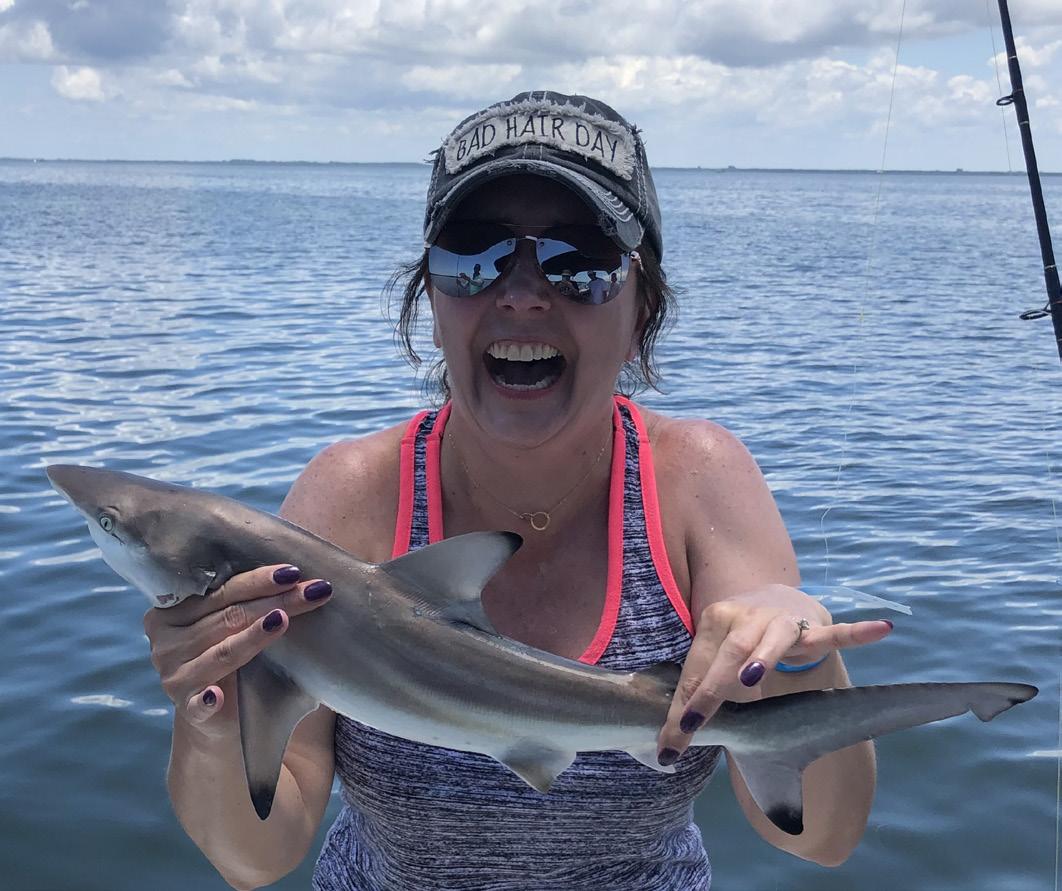
This is why I have continued to serve CFM in any capacity that I can. For nearly ninety years now, CFM has been known as “The Voice for Missouri’s Outdoors.” I believe in their mission to ensure the preservation of our great outdoor heritage, not only for you and me, and for our families, but most importantly, for future generations.
In Memory & Honor
I strongly encourage you to become a life member of CFM. Join us today to help promote and protect the natural resources of our great state!
Cheryl Tarbox
Marilyn Pohlman
Laura Richardson
Keith Hoffman
Barry Kirchhoff
Sheridan Polatis
Mr and Mrs Dennis Schrumpf
Mr and Mrs Stan Griffhorn
Dale Schrumpf

Richard Schrumpf
Barry Marquart
Mr and Mrs Jack Langley
Mary Ellen Gray & Aidan Rose Watson
Richard E Tucker
10 CONSERVATION FEDERATION
In Honor of Gary Van De Velde Paige Brockmeyer
In Honor of Lucas Wilson Mr and Ms Bill Kirgan
In Memory of Timothy Kirchhoff
LIFE MEMBERS OF CFM
Charles Abele
* R. Philip Acuff
* Duane Addleman
* Nancy Addleman
Tom Addleman
Nancy Addleman
* Michael Duane
Addleman
James Agnew
Carol Albenesius
Craig Alderman
* Allan Appell
Victor Arnold
Bernie Arnold
Richard Ash
Judy Kay Ash
Carolyn Auckley
J. Douglas Audiffred
Ken Babcock
Bernie Bahr
Michael Baker
* James Baker
Dane Balsman
Lynn Barnickol
Jamie Barton
Michael Bass
Robert Bass
Don Bedell
David F. Bender
Rodger Benson
Leonard Berkel
Barbi Berrong
Jim Blair
John Blankenbeker
Andy Blunt
Jeff Blystone
Kim Blystone
Glenn Boettcher
Arthur Booth
* Dale Linda Bourg
Stephen Bradford
Marilynn Bradford
Robin Brandenburg
Mark Brandly
Kathie Brennan
Robert Brinkmann
Robert Brundage
* Scott Brundage
Bill Bryan
Alan Buchanan
Connie Burkhardt
Dan Burkhardt
Brandon Butler
Randy Campbell
Brian Canaday
Dale Carpentier
* Glenn Chambers
Bryan Chilcutt
Ed Clausen
* Edward Clayton
* Ron Coleman
Denny Coleman
Rhonda Coleman
Liz Cook
Mark Corio
* Bill Crawford
Andy Dalton
DeeCee Darrow
Ryan Diener
Joe Dillard
Tim Donnelly
Cheryl Donnelly
Ron Douglas
Chuck Drury
* Charlie Drury
Tom Drury
Ethan Duke
Mike Dunning
William Eddleman
John Enderle
Theresa Enderle
Joe Engeln
Marlin Fiola
* Mary Louise Fisher
Howard Fisher
Andrew Fleming
Matt Fleming
Howard Fleming
Sara Fleming
Lori Fleming
Paula Fleming
* Charles Fleming
Bob Fry
Manley Fuller
David Galat
Gene Gardner
Matt Gaunt
Jason Gibbs
Timothy Gordon
Blake Gornick
David Graber
Tim Grace
Jody Graff
Richard & Sally Graham
Joseph Gray
Tyler Green
Jason Green
Gery Gremmelsbacher
Debbie Gremmelsbacher
Jason Gremmelsbacher
Bernie Grice Jr.
Mark & Kathy Haas
Tom & Margaret Hall
Christopher Hamon
* Deanna Hamon
J. Jeff Hancock
Herman Hanley
Keith Hannaman
Elizabeth Hannaman
John Harmon
* Milt Harper
Jack Harris
David Haubein
Jessica Hayes
* Susan Hazelwood
Mickey Heitmeyer
Loring Helfrich
* LeRoy Heman
* Randy Herzog
Bill Hilgeman
Jim Hill
Mike Holley
Rick Holton
CW Hook
* Allan Hoover
John Hoskins
Todd Houf
* Mike Huffman
Wilson Hughes
Larry Hummel
* Patricia Hurster
Kyna Iman
Jason Isabelle
Jim Jacobi
Aaron Jeffries
Robert Jernigan
Jerry Jerome
Roger & Debbie Johnson
* Don Johnson
* Malcolm Johnson
* Pat Jones
Steve Jones
John Karel
Thomas Karl
Jim Keeven
* Duane Kelly
Cosette Kelly
Junior Kerns
Todd Keske
Robert Kilo
* Martin King
Bill Kirgan
* Judd Kirkham
* Ed Kissinger
Sarah Knight
TJ Kohler
Jeff Kolb
Chris Kossmeyer
Chris Koster
Dan Kreher
Carl Kurz
* Ann Kutscher
Larry Lackamp
Kyle Lairmore
* Jay Law
* Gerald Lee
Debra Lee
Mark Lee
Randy Leible
* Joel LeMaster
* Norman Leppo
* John Lewis
Bill Lockwood
Leroy Logan
Christine Logan - Hollis
Bob Lorance
Ike Lovan
Wayne Lovelace
Kimberley Lovelace-
Hainsfurther
Jim Low
Mark Loyd
Emily Lute-Wilbers
Martin MacDonald
Michael Mansell
Steve Maritz
Danny Marshall
John Mauzey
Bill McCully
Chip McGeehan
Teresa McGeehan
Nathan "Shags" McLeod
Jon McRoberts
Richard Mendenhall
Tom Mendenhall
Donna Menown
Cynthia Metcalfe
Walter Metcalfe
Larry Meyer
Stephanie Michels
Mitchell Mills
Joshua Millspaugh
Davis Minton
Lowell Mohler
John Moore, Jr.
Johnny Morris
Zachary Morris
John Mort
Leanne Mosby
Steve Mowry
Diana Mulick
David Murphy
* Dean Murphy
Richard Mygatt
* Steve Nagle
Rehan Nana
J. Roger Nelson
Jeremiah (Jay) Nixon
Gary Novinger
Frank & Judy Oberle
Larry O'Reilly
Charlie & Mary O’Reilly
Beth O'Reilly
Anya O'Reilly
Jeff Owens
Austin Owens
Sara Parker Pauley
Scott Pauley
Randy Persons
Edward Petersheim
Albert Phillips
Jan Phillips
Glenn & Ilayana Pickett
Jessica Plaggenberg
Becky Plattner
Jerry Presley
Albert Price
Nick Prough
Kirk Rahm
Kurtis Reeg
John Rehagen
David & Janice Reynolds
Carey Riley
Kevin Riley
Mike Riley
Dana Ripper
John Risberg
Mary Risberg
Ann Ritter
Charles Rock
Derrick Roeslein
Rudy Roeslein
Charles Rogers
Kayla Rosen
Gerald Ross
Pete Rucker
Tyler Ruoff
Benjamin Runge
William Ruppert
Tom Russell
Jacob Sampsell
Bruce Sassmann
Jan Sassmann
Frederick Saylor
Michael Schallon
Mossie Schallon
* Evelyn Schallon
Thomas Schlafly
Pamela Schnebelen
Donald & Deb Schulte-
henrich
Tyler Schwartze
* Ronald Schwartzmeyer
Timothy Schwent
Travis W. Scott
George Seek
Arlene Segal
* E. Sy Seidler
* Sara Seidler
Anita Siegmund
Emily Sinnott
Douglas Smentkowski
Gary & Susanna Smith
Zachary Smith
* M.W. Sorenson
* Ed Stegner
Jeff Stegner
Everett Stokes
William Stork Jr.
Winifred Stribling
Norm Stucky
Mary Stuppy
* Mark Sullivan
Jacob Swafford
Jim Talbert
Norman Tanner
Travis Taylor Richard Thom
Don Thomas
Tim Thompson
* Jeff Tillman
Robert Tompson
Mike Torres
Matt Tucker
David Urich
Jennifer Urich
Alex Uskokovich
Gary Van De Velde
Barbara vanBenschoten
Lee Vogel
Albert Vogt
Frank Wagner
Ray Wagner
* Julius Wall
Ginny Wallace
Mervin Wallace
Randy Washburn
Mary Waters
Henry Waters, III.
Daniel Weinrich
Michael Weir
Robert Werges
Evelyn Werges Bennish
Tom Westhoff
Gary Wheeler
Georganne Wheeler Nixon
Mark Williams
Dennis Williams
Dr. Jane Williams
Stephen Wilson
Michael Wilson
Laurie Wilson
Jonathan Wingo
Jon R. Wingo
Michael Wiseman
Daniel Witter
Brenda Witter
* Addie Witter
Owen Witter
Dick Wood
Howard Wood
Joyce Wood
Nicole Wood
Charles M. Wormek
Brad Wright
Suzanne Wright
David Young
Judy Young
Dan Zekor
Daniel Zerr
Jim Zieger
Robert Ziehmer
Emily Ziehmer
Lauren Ziehmer
Colton Zirkle
Ethan Zuck
Guy Zuck
Mark Zurbrick
*Deceased
SEPTEMBER - 2023 11
Member News



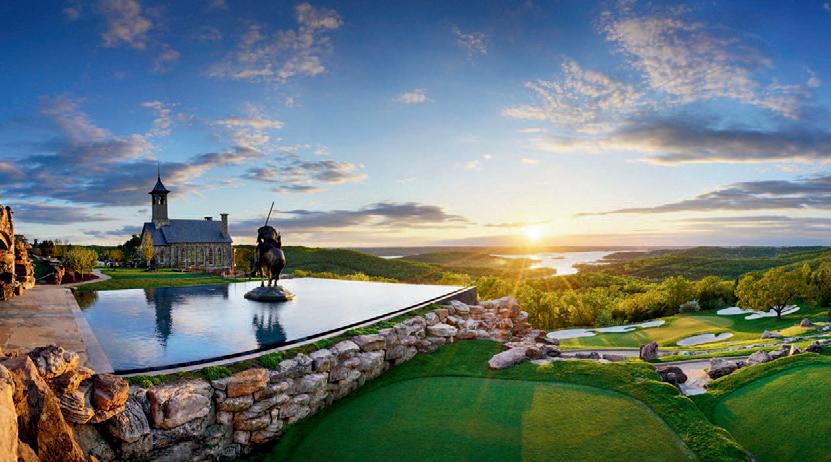
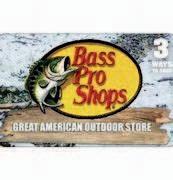

Enter for your chance to win! Mega Mega Raffle Raffle Winner drawn Friday, December 1, 2023 Mega Raffle r I B S Enjoy a case (18 slabs) of Smoked Baby Back Ribs with a cooler. These will be individually wrapped and frozen. Est. Value $500 You do not need to be present to win. Questions: info@confedmo.org 573-634-2322 $10 per chance Visit online confedmo.org/store 3 ways to purchase tickets: Send check payable to: CFM, 728 W. Main St. Jefferson City, MO 65101 Scan QR T R I P 3 Night Stay at Big Cedar Lodge, Top of the Rock Adventure Passes for Two Guests, Dogwood Canyon Nature Park Passes for Two Guests, Round of Golf for Two Guests at Buffalo Ridge, Breakfast for Two Guests at Devil's Pool Restaurant, Lunch for Two Guests at Truman Café & Custard, Dinner for Two Guests at Devil's Pool Restaurant. 4 prizes!! $1000 Bass Pro gift card b a s s p r o $1,000 $500 Bass Pro gift card b a s s p r o $500 Est. Value $2300
MDC Celebrates the Year of the (Swamp) Rabbit with Research

Happy Year of the Rabbit! According to the Chinese Zodiac, the Year of the Rabbit comes around every 12 years, and the last one was in 2011. At that time, the International Union for the Conservation of Nature and the World Lagomorph Society reminded us of the rabbit’s status as a keystone species in many ecosystems and that nearly one in four rabbits, hares and pikas are considered threatened. Unfortunately, the outlook has not improved since then. Some may be surprised to learn that, outside of ubiquitous species like the eastern cottontail (Sylvilagus floridanus) or the European rabbit (Oryctolagus cuniculus), many rabbit species are habitat specialists, and those are the ones often at risk. To better understand and conserve our local wetland specialist, the swamp rabbit (Sylvilagus aquaticus), the Missouri Department of Conservation has been monitoring the entirety of their habitat in the state since 1993.
Recently, MDC conducted a more focused survey of swamp rabbit habitat in the River Bends Priority Geography, a region bordering the Mississippi River in the southeasternmost part of Missouri that holds considerable opportunity for wetland conservation. Extreme flooding events between 2011 and 2019 completely inundated much of this region and prompted concern that swamp rabbit populations were in trouble. Swamp rabbits generally seek high ground or wait out floods in tree canopies, but prolonged flooding would inevitably impact the hardiest of the bunch. So, in the winter of 2021, survey crews meandered through suitable patches searching for swamp rabbit latrines, which are often located on downed decaying wood or other elevated surfaces. Surprisingly, latrines were found more often in habitat patches on the unprotected side of the Mississippi levee, the Batture side.
The Batture land may appear to be an unforgiving environment where wildlife is entirely displaced when the river runs high and swift. But what makes for a shortterm loss may be a longer-term gain for wildlife. Flood risk prevents development, so the habitat patches in the Batture land are generally larger and closer together than the small, scattered ones on the protected side of the levee.
Since swamp rabbits are able swimmers, reaching new habitat patches across a small stretch of water may be easier than crossing an open expanse of row crops. At the patch scale, the pulse of nutrients, scouring, and silt deposition may promote understory plant growth. One study found an uptick in the body condition of whitetailed deer 1-2 years following a major flood. It may be that swamp rabbits recolonized the Batture land quickly and, given plentiful resources, did what rabbits do best. Thus, the survey may have caught the population at its greatest abundance following the major floods.
Though managers may be able to provide upland refugia or improve wetland habitat on the levee side of the River Bends, the mighty river and its floods will continue to shape habitat on the Batture side of the Mississippi, potentially to the benefit of swamp rabbits and other wildlife. Meanwhile, MDC’s monitoring of the swamp rabbit across its range in the state has continued through 2023, coincidentally promoting and advancing knowledge for this unique species in this celebratory year. Next year will be the year of the Dragon…flies.
Leah Berkman
SEPTEMBER - 2023 13 Member News
A swamp rabbit spotted during the 2023 survey of their entire range in Missouri. Seeing a swamp rabbit is rare so surveyors instead look for latrines on downed logs to confirm their presence in a habitat patch. (Photo: Kylie Bosch)
Missouri Ducks Unlimited
Established in 1937, Ducks Unlimited (DU) is the world’s largest nonprofit organization dedicated to conserving wetland habitat in North America. DU has protected nearly 120,000 acres for waterfowl in Missouri over the last 30 years, investing $22.4 million. DU is able to deliver this work by partnering with private individuals, landowners, state and federal agencies, scientific communities and other conservation organizations.
Wetlands improve the overall health of our environment by recharging and purifying groundwater, moderating floods, and reducing soil erosion. They are the most productive ecosystems, providing critical habitat to more than 900 wildlife species and invaluable recreation opportunities for people to enjoy.
“If you spend time outdoors in the state of Missouri, there’s a good chance that Ducks Unlimited has had a hand in creating or keeping that opportunity in place,” said DU state chairman, Renee Hahne. “We are waterfowl conservationists, but also know that our work is beneficial to a wide range of wildlife species. More wetlands on the landscape creates clean drinking water as well, keeping toxins out of our streams and rivers.”
Currently, DU is working on several project across the state. At Loess Bluff National Wildlife Refuge (Forest City), engineers have completed designs for a low 6,000-foot-long levee to improve water management between the Eagle Pool and Long Slough unit, the largest tract of wet prairie remaining in Missouri.
“There are a tremendous numbers of snow geese, trumpeter swans, king rails, and bald eagles that use Eagle Pool throughout the year,” said Casey Bergthold, Missouri Conservation Program Coordinator for DU. “Our work will create critical habitat these species need to thrive during the migration and breeding season.”
Farmers also play an important role for the future of wetland conservation in Missouri. In the Bootheel, Rice Specialists Dave Wissehr and Tony Jaco are administering a program funded by USA Rice, Walmart, and other partners.
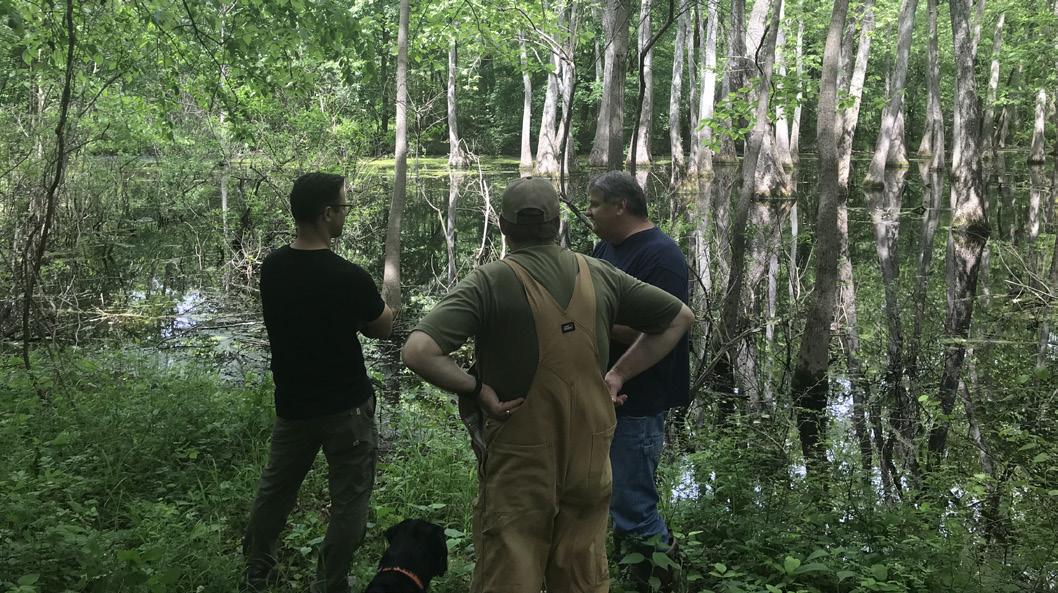
It provides incentive payments to farmers for keeping their rice fields flooded longer into the winter and spring so that migrating waterfowl can feed and rest there. In 2022, 16 contracts were signed, impacting over 4,150 acres.

“My family has been farming in Missouri for generations, so I know first-hand the impact we as producers can have on the environment,” said Mark Flaspohler, DU’s Director of Agriculture Programs. “Every year we are seeing more farmers invest in sustainable agriculture, and we are doing our best to support those efforts.”
For more information on Missouri Ducks Unlimited visit www.ducks.org/missouri or find them on Facebook.
14 CONSERVATION
FEDERATION
Affiliate Highlights
(Top) Waterfowl utilizing a flooded, southeast Missouri field in January. The Rice Stewardship Program, a partnership between USA Rice, NRCS and Ducks Unlimited, promotes winter re-flooding on cropland acres to benefit migratory bird species. (Photo: Tony Jaco)
(Bottom) Tony Jaco, Missouri DU Consultant, visiting a private land wetland in southeast Missouri. The expansion of the DU Ag Program means more support for wetland management on working lands in Missouri. (Photo: Brad Pobst)
Affiliate Organizations
Anglers of Missouri
Association of Missouri
Electric Cooperatives
Bass Slammer Tackle
Burroughs Audubon
Society of Greater Kansas City
Capital City Fly Fishers
Chesterfield Citizens
Committee for the Environment
Columbia Audubon Society
Conservation Foundation of Missouri Charitable Trust
Deer Creek Sportsman Club
Duckhorn Outdoors Adventures
Festus-Crystal City Conservation Club
Forest and Woodland
Association of Missouri
Forest Releaf of Missouri
Friends of Rock Bridge Memorial State Park
Gateway Chapter Trout Unlimited
Greater Ozarks Audubon Society
Greenbelt Land Trust of Mid-Missouri
Greenway Network, Inc.
James River Basin Partnership
L-A-D Foundation
Lake of the Ozarks Watershed Alliance
Land Learning Foundation
Legends of Conservation
Little Blue River Watershed Coalition
Magnificent Missouri
Mid-Missouri Outdoor Dream
Mid-Missouri Trout Unlimited
Midwest Diving Council
Mississippi Valley Duck Hunters Association
Missouri Association of Meat Processors
Missouri Atlatl Association
Missouri B.A.S.S. Nation
Missouri Bird Conservation Initiative
Missouri Birding Society
Missouri Bow Hunters Association
Missouri Caves & Karst Conservancy
Missouri Chapter of the American Fisheries Society
Missouri Chapter of the Wildlife Society
Missouri Coalition for the Environment
Missouri Conservation Agents Association
Missouri Conservation Heritage Foundation
Missouri Conservation Pioneers
Missouri Consulting Foresters Association
Missouri Disabled Sportsmen
Missouri Ducks Unlimited- State Council
Missouri Environmental Education Association
Missouri Forest Products Association
Missouri Grouse Chapter of QUWF
Missouri Hunting Heritage Federation
Missouri Master NaturalistBoone's Lick Chapter
Missouri Master NaturalistGreat Rivers Chapter
Missouri Master NaturalistHi Lonesome Chapter
Missouri Master NaturalistMiramiguoa Chapter
Missouri Master NaturalistOsage Trails Chapter
Missouri Master NaturalistSpringfield Plateau Chapter
Missouri National Wild Turkey Federation
Missouri Native Seed Association
Missouri Outdoor Communicators
Missouri Park & Recreation Association
Missouri Parks Association
Missouri Prairie Foundation
Missouri River Bird Observatory
Missouri River Relief
Missouri Rock Island Trail, Inc.
Missouri Rural Water Association
Missouri Smallmouth Alliance
Missouri Society of American Foresters
Missouri Soil & Water Conservation
Society-Show-Me Chapter
Missouri Sport Shooting Association
Missouri State Campers Association
Missouri State Parks Foundation
Missouri Taxidermist Association
Missouri Trappers Association
Missouri Trout Fishermen's Association
MU Wildlife & Fisheries Science
Graduate Student Organization
Northside Conservation Federation
Open Space Council of the St. Louis Region
Outdoor Skills of America, Inc.
Ozark Chinquapin Foundation
Ozark Fly Fishers, Inc.
Ozark Land Trust
Ozark Riverways Foundation
Ozark Trail Association
Ozark Wilderness Waterways Club
Perry County Sportsman Club
Pomme De Terre Chapter Muskies
Quail & Upland Wildlife Federation, Inc.
Quail Forever & Pheasants Forever
River Bluffs Audubon Society
Rocky Mountain Elk Foundation
South Side Division CFM
Southwest Missouri Fly Fishers
St. Louis Audubon Society
Stream Teams United
Student Air Rifle Program
Tipton Farmers & Sportsman's Club
Tri-Lakes Fly Fishers
Troutbusters of Missouri
United Bow Hunters of Missouri
Watershed Conservation Corps
Wild Bird Rehabilitation
Wild Souls Wildlife Rescue Rehabilitation
Wonders of Wildlife
World Bird Sanctuary
Young Outdoorsmen United
SEPTEMBER - 2023 15 Affiliate Highlights
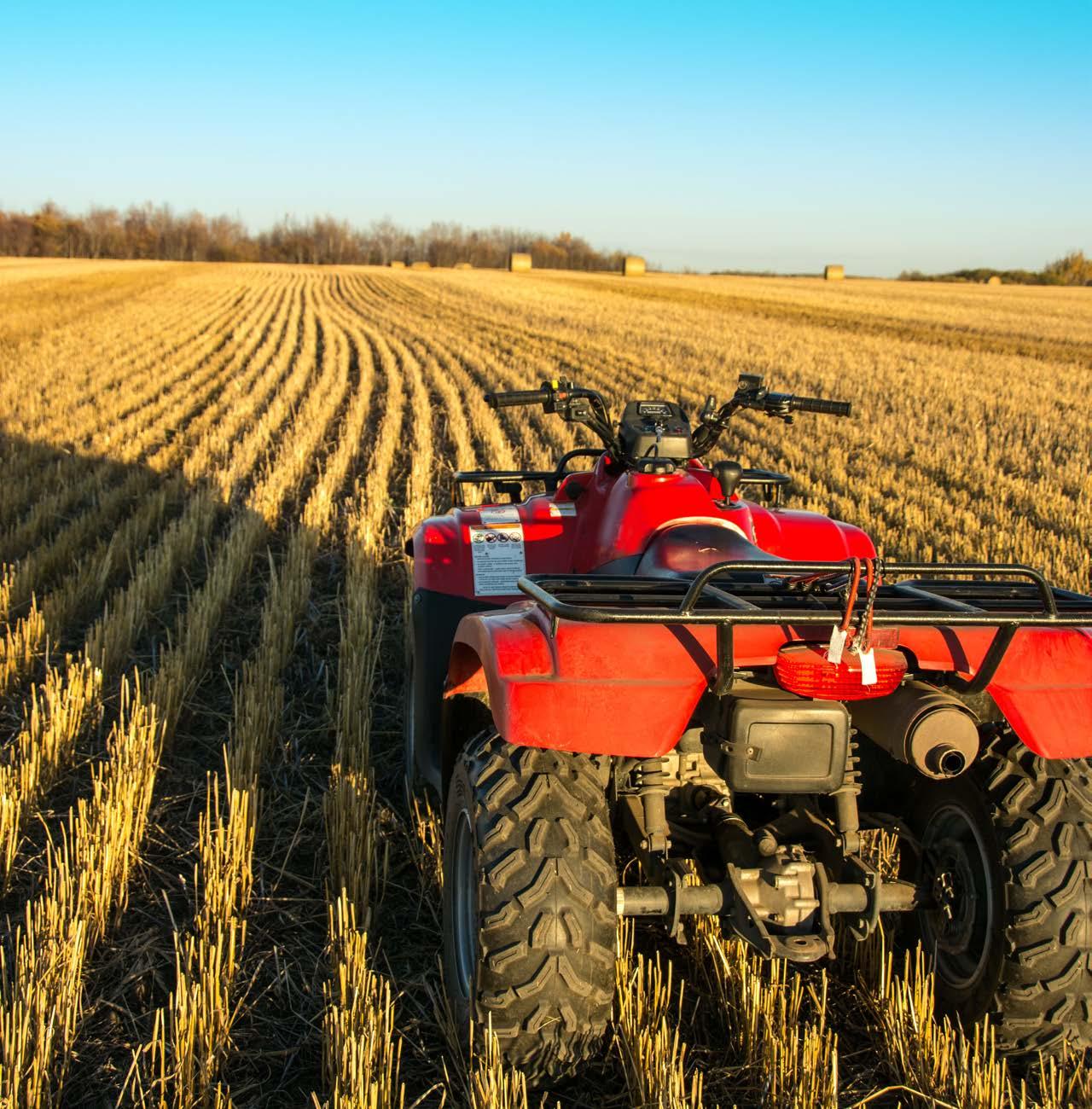
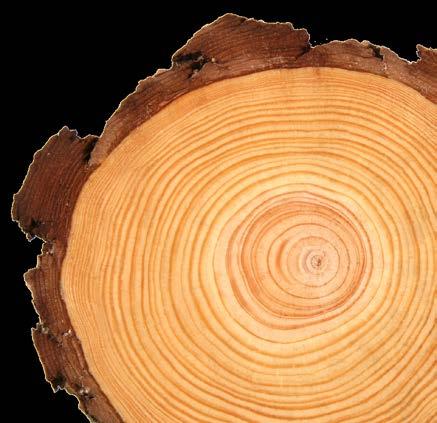

Contact your local Shelter agent to insure your auto, home, life, farming, hunting & fishing gear. Find an agent near you at ShelterInsurance.com. Shelter Insurance® is a proud sponsor of Share the Harvest & the Conservation Federation. SEASON It’s Your
Committed to Community & Conservation







Owned by the members they serve, Missouri’s electric cooperatives do more than provide reliable and affordable electricity. They are active in their communities, concerned for the wellbeing of their neighbors and devoted to the rural way of life that makes the Show-Me State a special place to live, work and play. Missouri’s electric cooperatives are dedicated to protecting the land, air and water resources important to you and your quality of life. Learn more at www.amec.coop.
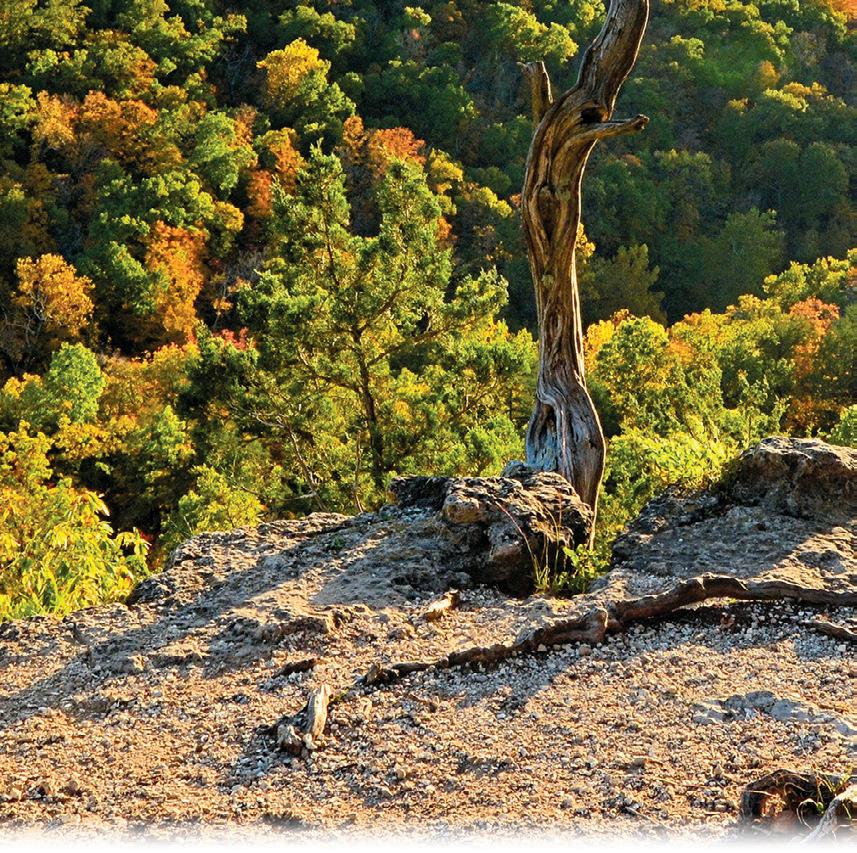
Partnerships – A Necessity for Aquatic Systems Conservation
Missourians place great value on the state’s fish, forests, and wildlife. Citizen-led efforts incorporated those values into the state constitution in the 1930s and placed responsibility for protecting and managing these natural resources in the hands of the Missouri Conservation Commission. However, the missions of other state and federal agencies, along with non-government organizations, impact these resources, making it vital that partnerships (either formal or informal) be developed to address common interests or potential conflicts. Because water is a part of every phase of human life, these partnerships are particularly important to ensure the protection and conservation of wetlands and other aquatic systems.
Since more than ninety percent of Missouri is privately owned, it is crucial that private landowners be involved in partnerships designed to enhance wetlands conservation in the state.

A review of the history of the conservation movement in Missouri reveals that private wetlands owners were at the forefront of many of these efforts. The significance of privately owned wetlands is more critical now than ever before, and will only increase in the future. Therefore, they must have a seat at the table as future plans for aquatic systems conservation are crafted.
Wetlands and associated aquatic systems are important to every citizen or visitor to the state. The importance of water quantity and quality is obvious, but recreation, including hunting, fishing, wildlife viewing, nature study, and just having places to “get away” are all important contributors to the quality of life in Missouri. These elements must be included in all partnerships guiding wetlands and aquatic conservation as we move forward.
18 CONSERVATION FEDERATION Feature Story
Agriculture is the state’s number-one industry and wetlands and other aquatic systems are impacted by these operations in many regions of the state. Mutual understanding and respect, along with a willingness to compromise, must be incorporated into partnerships between agriculture and conservation interests.
Following is a list of agencies/organizations, summaries of their respective missions, and brief discussions of how wetlands and associated fish, forests, and wildlife resources might be impacted. The list is by no means complete, but it demonstrates the importance of partnerships that incorporate the values Missouri citizens place on wetlands and aquatic resources. The list also illustrates the diversity of priorities and the need for cooperation among all stakeholders.
Missouri Department of Natural Resources (DNR): A key focus of the Missouri Department of Natural Resources is to ensure the health and quality of life for the more than 6 million people living in Missouri, based upon the recognition that this goal is closely tied to the health and quality of the state’s air, land, and water resources. The agency’s very existence depends on enriching Missouri’s natural resources and the state's environmental and economic vitality. With its system of parks and historic sites, this agency contributes directly to wetlands and aquatic system conservation and associated outdoor recreation. In addition, through its Clean Water Commission. Soil and Water Programs and other programmatic areas, DNR establishes networks vital to partnerships among agencies and landowners.
U. S. Fish and Wildlife Service (USFWS): The mission of the USFWS is to work with others to conserve, protect, and enhance fish, wildlife, plants, and their habitats for the continuing benefit of the American people. Much of the work of this agency involves wetlands and other aquatic systems. Through international treaties and federal law, this agency is also responsible for migratory bird conservation and overseeing provisions of the Endangered Species Act. Many species of migratory birds are wetlands dependent and because of wetlands losses across the nation, including Missouri, a high percentage of plant and animal species on the threatened and endangered list are associated with wetlands.
The USFWS manages a series of nine national wildlife refuges in Missouri, which combined, protect and conserve thousands of acres of wetlands and associated habitats for many plants and animals.
Two of these refuges are managed specifically for endangered species. These refuges also provide recreational opportunities covering a wide range of interests.
The USFWS delivers the Partners for Fish and Wildlife Program in Missouri, providing technical and financial assistance to private landowners interested in improving habitats for wildlife. This program includes a substantial focus on wetlands and is coordinated with similar efforts of other agencies and organizations; an excellent example of such coordination involves ways that Partners staff work with staff delivering MDC’s Landowner Assistance Program to ensure optimal outcomes for fish, wildlife, and private landowners.
U. S. Geological Survey (USGS): The mission of USGS is to provide a science foundation to help America achieve sustainable management and conservation of biological resources in wild and urban spaces, and places in between. The Missouri Cooperative Fish and Wildlife Research Unit located at the University of Missouri in Columbia (MU) carries out the mission of USGS in our state. The Unit has existed since 1937 when the newly formed Missouri Conservation Commission, as one of its first acts, approved a partnership with the federal government and MU to establish this research arm. It was a recognition by the Commission that conservation decisions should be science-based following the results of research carried out by qualified scientists. That guidance continues today and no aspect of conservation has benefitted more than wetlands and other aquatic systems.
Natural Resources Conservation Service (NRCS): The mission of NRCS is to deliver voluntary conservation solutions that allow agricultural communities to feed a growing nation blessed with clean and abundant water, healthy soils, and resilient landscapes while protecting and enhancing these natural resources. NRCS serves as the interface between production agriculture and natural resource conservation among landowners who raise crops or livestock for a living.
In addition to assisting on “working lands”, NRCS holds easements on 66,700 acres (88% are permanent) under the Wetland Reserve Program (WRP) in Missouri. These easements cover marginal farmlands that were historically wetlands. NRCS provides funding for restoring wetlands and assistance is provided for longterm management.
SEPTEMBER - 2023 19 Feature Story
WRP is a prime example of how privately owned lands become part of the formula for successful wetlands and other aquatic systems conservation and management efforts in Missouri.
U.S. Army Corps of Engineers (USACE): The mission of the Civil Works Division of the USACE is to develop and manage the nation’s water resources; support commercial navigation; restore, protect, and manage aquatic systems and manage flood risks, all in an environmentally sustainable, economic, and sound manner. The USACE plays a key role in the protection, restoration, and management of wetlands and other aquatic systems. Because of the breadth of its mission, its efforts can present challenges in the natural resources conservation arena.
One area of direct impact regarding USACE’s involvement in wetlands conservation is the agency's role in enforcing regulations of Section 404 of The Clean Water Act which prohibits dredging or depositing fill in wetlands without the required permits and/or mitigation. These activities generally are related to either development or agriculture.
Ducks Unlimited, Inc. (DU): The mission of DU is to conserve, restore and manage wetlands and associated habitats for North America’s waterfowl. These habitats also benefit other wildlife and people. United States membership totals 700,000, with 19,000 of those members in Missouri. Since its beginning in 1937, DU has conserved approximately 15 million acres in Canada, the United States, and Mexico. DU has partnered with conservation agencies in Missouri to acquire, restore and manage several thousand acres of wetlands in the state. In addition, DU has secured perpetual conservation easements on approximately 10,000 acres of wetlands and associated habitats in the state.
DU also places a high priority on public policies that benefit wetlands conservation nationally and in individual states, including Missouri. The organization is highly respected among policymakers across the nation.

Conservation Federation of Missouri (CFM): The CFM began in 1935 when conservationists throughout Missouri came together with the mission of eliminating political involvement from fish, forest, and wildlife conservation decisions.
Their efforts led to amending the state’s constitution in 1936, creating the Missouri Conservation Commission and ultimately the Department of Conservation.
CFM has more than 100 affiliates and is a forum to consolidate views from a broad spectrum of conservation interests. For more than 88 years, CFM has worked to ensure the integrity of the state’s conservation on every front, including wetlands. They are a very effective voice of the citizenry when it comes to natural resource issues.
Conservation successes in Missouri over the past nearly nine decades have been well chronicled. The value Missouri citizens place on the state’s natural resources and their willingness to provide finances to cover the costs of protecting and managing them, including those dependent on wetlands and aquatic systems, are the primary keys to these successes. In addition, leadership provided by Conservation Commissioners, MDC directors, and the heads of other state and federal agencies and conservation organizations have been key components.
The “secret sauce” making all of this work has been the willingness of all with a stake in or responsibility for wetlands and aquatic systems conservation to understand and respect their differing priorities and be willing to work together to craft solutions accepted by all. Many outside the state have referred to this approach as the “Missouri Model” of conservation, particularly as it applies to wetlands. The partnerships developed over the years must be continued and strengthened to ensure future successes in these vital arenas.
Sara Parker Pauley & Ken Babcock
20 CONSERVATION
FEDERATION Feature Story
Photos: Courtesy of MDC
The Ripple Effect of the Wetland Summit

In February, the 2023 Missouri Wetland Summit was co-hosted by the Conservation Federation of Missouri (CFM) and the Missouri Department of Conservation (MDC). Despite tempting Old Man Winter, the road conditions in Missouri were serviceable and icy circumstances only impacted the attendance of a few planning to travel from out of state. Overall, 330 people from 15 states attended this first-time event to listen and discuss the history, merits, and trajectories of wetland conservation in the Show-Me state.
Coming off the tail of the global pandemic, it was enjoyable to see people face-to-face, catch up with old friends, and make new acquaintances. The planning committee prepared for the event by sending out a survey prior to the gathering to see what was on participants’ minds and help presenters frame the discussions. During the Summit, a full slate of presentations took attendees on a journey of where Missouri wetland conservation has been, what have been the bright points in our collaborative history, and what challenges and opportunities are headed our way. No doubt, it was an ambitious endeavor and in no way were we going to be able to cover all topics of interest in great detail. However, this was never actually the goal. The Missouri Wetland Summit was to re-engage, share ideas, and serve as a new starting point for the future.
We asked for input, suggestions, and questions during and after the Summit. We wanted to know what people thought and why they cared about wetland conservation. Again, the passion and commitment were palpable as over 170 people provided their thoughts and ideas. Thank you. Your voices were heard. Some great points were offered as to what are fundamental aspects of a successful wetland program, what areas we need to do a better job in coordinating, how can we attempt to increase agency capacity, as well as how we grow public support and action for wetland conservation. As I have worked on the summary report and had various followup discussions, I am beginning to see ripple effects.
Ideas expressed at one time or another during this threeday event are radiating outward. For example, people are discussing the potential to organize strike teams for invasive species.
Others are calling up neighboring agencies and asking what their needs might be in the coming year so they can help each other out. I’ve had the pleasure to brainstorm and consider what a “Birding Classic” in Missouri might look like in the future. MDC staff and partners have also revisited our tiered approach to Conservation Opportunity Areas and identified potential locations in southeast Missouri that currently fall in the “white space” and should be incorporated as locations eligible and worth conserving within the future. I know that many more ideas and discussions are swirling around the eddies and sub-surface currents that will continue to mature and begin to make waves in the days, months, and years to come. I look forward to seeing how far they radiate.
I’ll admit that I’ve already gone back, rummaged through some of the presentation slides found on CFM’s website, confedmo.org/wetlands/ and pulled several useful nuggets out for handy talking points. I hope you too benefited from the presentations and interaction with others provided at this event. We merely scraped the surface and know a wide range of topics, issues, and opportunities for wetland conservation must be addressed in greater depth as we move forward. The best way to do that is together, across disciplines, listening to each other’s perspectives to find common ground and tangible solutions. I invite you to reach out to me and connect to find ways to build off our past and tread into new waters to pursue different opportunities. Wetlands are variable and so are the solutions. We need to keep the ripple effect going, and I look forward to wading in to advance these efforts and making waves for wetland conservation in Missouri.
Frank Nelson Wetland Systems Manager, MDC
SEPTEMBER - 2023 21
Member News
A King Rail. (Photo: Courtesy of MDCi)
National Partnerships Help Guide a Small Shorebird’s Road to Recovery

The majority of 51 regularly occurring shorebird species in North America use wetlands habitats which are vital to their survival. But shorebird populations are decreasing at alarming rates, down 33% over the last 40 years, and 16 species have declined over 50%. The 2022 State of the Birds Report (https://www.stateofthebirds.org/2022/) made clear that it is critical that conservation action be taken to reverse long-term downward trends for 269 bird species including several shorebirds. One bird, the Lesser Yellowlegs, is at the forefront, requiring action due to a 70% loss in abundance.
This is the story of a recent national partnership called the Road to Recovery Initiative (https://r2rbirds.org/), that was formed as a result of the 2019 three billion birds lost paper published in Science. To begin, four species ambassadors were chosen as pilot species to move forward.
Lesser Yellowlegs was chosen due to precipitous declines and a group of dedicated researchers who had identified threats and mapped migratory routes. This species will be a model engaging social and ecological scientists, educators, habitat delivery professionals, conservationists, communications specialists, industry, private landowners and public land managers to work together to build a strategy that will help lead the way for this wetland bird and many other similar species at the tipping point. Species that, without a conservation strategy, may not recover.
Of many national conservation partnerships, Road to Recovery is innovative because it brings together a broad community of biological and social scientists to meet conservation challenges head on. This approach requires efficiency and problem-solving throughout the migratory pathways of birds, addressing knowledge gaps, building relationships and finding resources to address issues for the health of the land, its people and wildlife.
22 CONSERVATION FEDERATION Feature Story
The Lesser Yellowlegs is helping frame this kind of collaboration first and foremost with scientific research to help define strategies. Biologists’ knowledge of life history together with learning their movements (where they winter, how they migrate and where they breed) (Fig. 1) and the threats they face throughout the migratory pathway will pave the way to help them. These are small 8-inch-high shorebirds, which weigh no more than a tangerine, and fly 20,000 miles annually round-trip. They occur throughout the western hemisphere, nesting in Canada and Alaska and wintering in South America. There are three major threats facing the species: 1) loss of shallow wetland habitats with exposed mudflats, 2) lack of wetland management across the migratory pathway during critical life stages, and 3) nonsustainable hunting in the Caribbean and South America. Extreme weather events and a variety of other threats may also impact this species. So, addressing these primary threats, among others, requires consideration of biological, and ecological needs balanced within social, cultural and economic spectrums throughout the hemisphere, a long road to be sure.
Along the road to recovery for Lesser Yellowlegs, partnership building is just beginning and a Lesser Yellowlegs Working group is starting to pinpoint where priority regions and habitats are so they can strategically determine where effective conservation partnership development should be to maximize success. Engaging all stakeholders is critical. Strong communication and listening will help guide solutions and having conservation dollars through state, federal, local and private sources to help public and private land managers with habitat work and management will be necessary as will voluntary collaboration with landowners.
Missouri happens to be on the road to recovery for this shorebird and the Bootheel, as part of the lower Mississippi Alluvial Valley (MAV), is an important priority region during migration. In spring, the birds funnel up through the MAV, stopping along the way to consume freshwater wetland invertebrates in very shallow wetland habitats. Freshwater invertebrates are critical to body condition and health and also aid in successful nesting. So, in response to the threats to survival the continuing restoration, enhancement and protection of shallow wetland habitat as well as improving wetland management at appropriate times of year statewide, including fall migration are important strategies to help these birds and similar species rest and refuel on their migratory journey. Just as Missouri is important for migrating waterfowl, for the same reasons, restoring, enhancing and managing quality shallow wetland habitat is critical for ensuring these shorebirds arrive on the breeding grounds in prime body condition to lay eggs and raise young and have the resources they need to arrive on the wintering grounds.
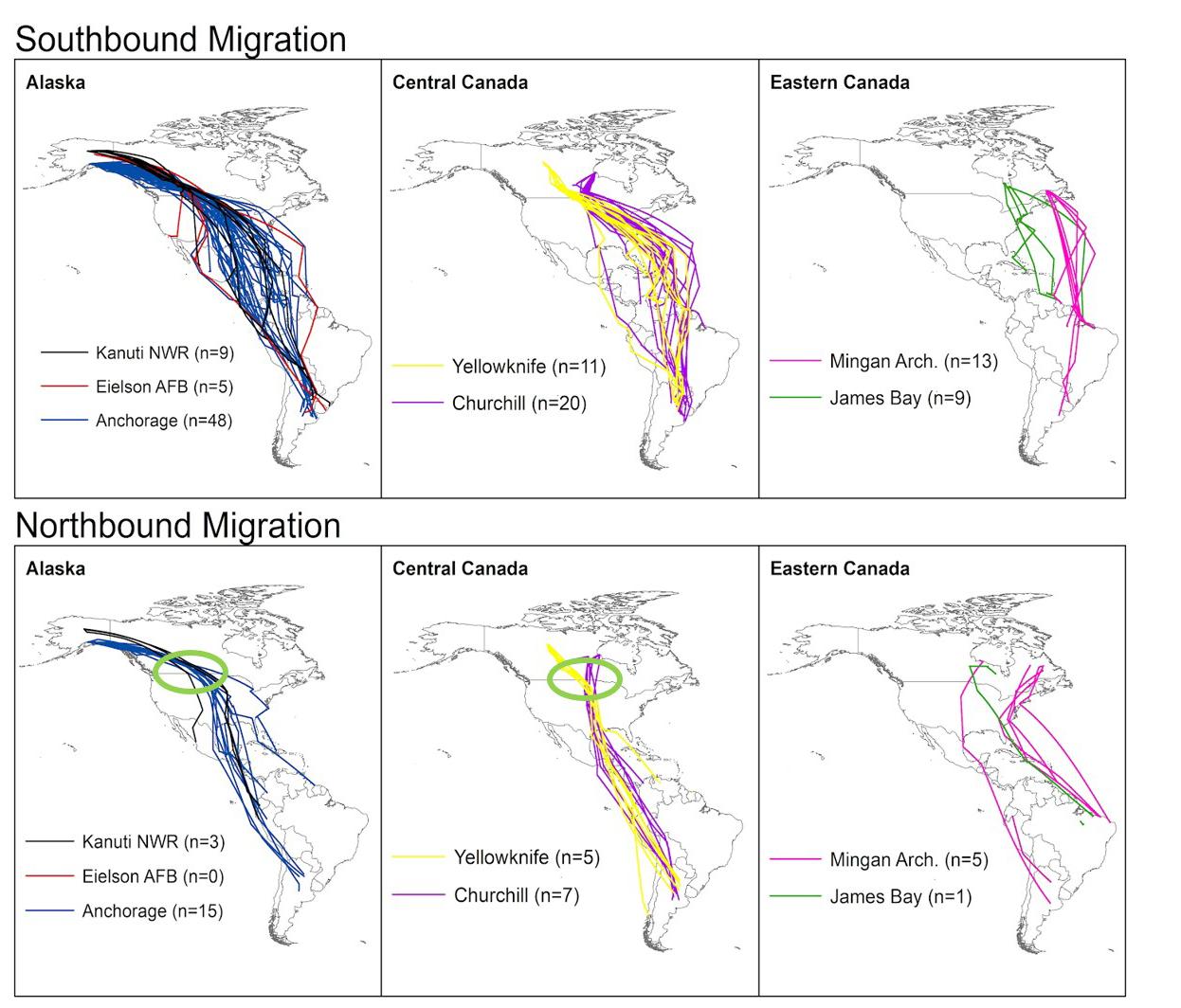
The national Road to Recovery Initiative is working closely with federal agencies, like the U.S. Fish and Wildlife Service and Natural Resources Conservation Service, the North American Bird Conservation Initiative, 50 state agencies (including the Missouri Department of Conservation), multiple universities, non-government organizations and international agencies and organizations to bring awareness about the major declines of birds and developing tools to implement recovery actions.
As is evident from the 1930s formation of the Conservation Federation and Conservation Commission, Missouri is one of the best to take part in national partnerships like this and has become a leader working internationally too. The work is just beginning because the 269 species mentioned earlier will need similar focus and strategic partnering as much as the Lesser Yellowlegs. Just as important, however, the partnership needs people, including Missourians, to champion and make a difference for wetland conservation, not only for birds and other wetland dependent species but for the health of people who depend on the land for clean, plentiful water.
Kelly Srigley Werner
SEPTEMBER - 2023 23
Feature Story
(Left) A banded Lesser Yellowlegs bird in its preferred shallow wetland habitat with sparse low growing vegetation. Bird height 8 inches, vegetation ~4 inches. (Photo: Carrie Olson)
(Top) Lesser Yellowlegs tracking: migration pathways and connectivity. Birds track through Missouri mostly on the Alaska and Central Canada routes. The Prairie Pothole region (circled) is a 'rest stop' for north and south migration. (Citation: McDuffie, L.A., etal. 2022. Flyway-scale GPS tracking reveals migratory routes and key stopover and non-breeding locations of Lesser Yellowlegs. Ecology and Evolution 12: e9495.)
Our Beloved Brazen Beavers
Many Missourians do not have a fondness or respect for “brazen beavers” and their behaviors. The bad reputation of beavers stems from their tireless efforts to chew down trees, dam streams, and burrow into streambanks. Often these activities cause unwanted issues like road and field flooding, culvert plugging, burrowing, or tree damage.
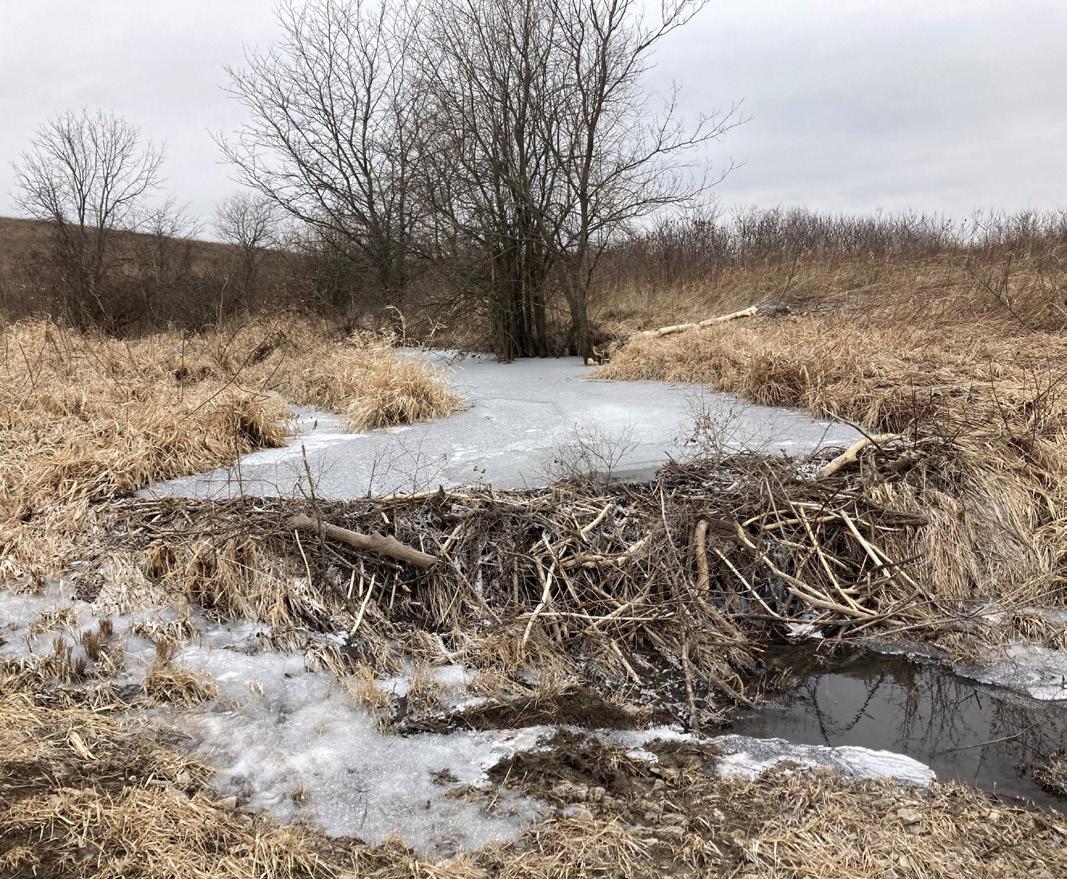
Nevertheless, those same unwanted activities can enhance headwater streams, streamside wetlands, and their local aquifers, thereby benefiting the overall floral and faunal diversity. The changes beavers make on the landscape can also buffer natural disasters. During drought, beaver complexes provide wildfire resilience, refuge, and water storage. This localized availability of water can benefit farmers and animals alike in certain areas by keeping the water table high, grasses green and extending the growing season. On the flip side, beavers and their battery of woody stream bumps help slow down and spread-out fast-moving water during floods.
This rodent’s knack for extending the water cycle and interaction of plants within aquatic and terrestrial environments also helps cycle nutrients on an annual basis and store carbon long-term. If everyone recognized that beavers could be a low-cost or free means to restore ecosystem health, perhaps they would become known as “beloved beavers.”
It is hard to imagine how different our streamside landscapes must have looked before European settlement in North America when beaver population estimations were 60-400 million beavers! Many streams were hardly recognizable compared to how they look today. Instead of single-threaded channels, which often have tall, eroded, and barren streambanks, beaver-laden streams were transformed by transitory dams that created multithreaded channels, deep wetland and stream pools and interconnected floodplains. These systems were messy, complex, and diverse in all the right ways, allowing for massive amounts of habitat and species diversity and very high-functioning ecosystems.

24 CONSERVATION FEDERATION Feature Story
In the 1500’s through 1800’s, beaver pelts were highly sought after across the globe for making warm, waterrepellant, attractive hats. The fur trade was already devastating beaver populations in North America by the 1600’s. Beaver would likely have become extinct were it not for the discovery of silk, which was easy to mass produce, cheaper, and had similar desirable qualities to beaver fur. As beavers were disappearing from the landscape and waterways, their former habitats held some of the deepest and finest soils known, with accounts of some yielding four tons of hay per acre. Early settlers benefited from this topsoil but likely did not understand the role of beavers in creating and maintaining soil fertility.
Without beaver to rebuild and maintain stream and wetland dams, the complex beaver-controlled stream systems began to unravel and become simplified, looking more like streams we see today that are typically single channeled, incised, eroded, and lacking connection with the adjacent floodplain and/or wetlands. Adding insult to injury, colonization and land clearing caused increased watershed run-off, which eroded stream channels to straighter, larger, and even more simplified channels. Many were also channelized for navigation and farming, which further degraded the formerly very complex, messy, and diverse stream systems. This legacy of cascading changes has resulted in an ecological amnesia of the contributions that beavers once made to Missouri.
So where does that leave us? We can’t completely ignore that beavers cause problems for human structures and activities, but we also can’t ignore the degraded stream conditions we now face. In certain locations, beavers could offer low or no-cost solutions to some of our stream problems and be a welcome part of the system again.
Recent experiments in the Western US have been successful in encouraging beavers to re-colonize headwater streams. Studies have shown that beaver activity creates deeper pools in streams, adds sinuosity and complexity, stabilizes streambanks, elevates water tables, and reconnects floodplains and wetland systems to the stream. These studies have also revealed that beaver activity contributes to denitrification and flood attenuation, among many other things.
In areas without readily available beavers, beaver activity can be encouraged or even mimicked by creating Beaver Dam Analogues (BDA’s) and/or Post Assisted Log Structures (PALS). These structures are human-built beaver dams and log jams used in places where beaver may be lacking to create the habitats that beaver would have otherwise created. Utah State University has a plethora of research and step-by-step guides on what these structures do, where to locate them, and how to build them. The Missouri Department of Conservation has a research project starting this year on MDC and The Nature Conservancy land to test these structures and their effects.
Encouraging beaver activity may seem like risky business, but restoration work on the West and East coasts have come up with remarkable solutions that emphasize coexistence between man and beast. Beaver Deceivers, for example, are flow devices that keep beavers and their dams in place while allowing water to move through. They can be used around road culverts and water control structures as pond leveling devices to keep water levels below a certain elevation. There are also techniques to fence off and prevent unwanted tree damage.
In times where it seems like everyone is being asked to “do more with less”, perhaps we could re-adjust our attitudes and consider the benefits of beaver’s work and their engineering solutions that are free of charge! There is a balancing act between brazen unwanted activity and the benefits to streams and wetlands that beavers provide and finding where their activities are acceptable amid public interests. Acknowledging the history of beavers in Missouri and overcoming our ecological amnesia might allow us to lean into new opportunities for conservation success.
For more resources feel free to check out:
• https://www.fws.gov/media/beaver-restorationguidebook
• https://www.fws.gov/sites/default/files/documents/TheBeaver-Restoration-Guidebook-v2.02_0.pdf
Ange Corson
SEPTEMBER - 2023 25
Left - Unhealthy and disconnected headwater stream system. (Photo: Jerry Wiechman)
Feature Story
Right - Functioning and connected headwater stream system. (Photo: Jerry Wiechman)
GOOD FOR LAND. GOOD FOR LIFE.

Prairie Prophets is a new media platform created by Roeslein Alternative Energy. We will be showcasing the stories and objectives of the recently awarded USDA Climate Smart Commidities grant through the Prairie Prophets podcast, video series, and website.
Everything prophits from prairie. Soil, air, water - and all kinds of life! Learn how you can make the most of your land with prairie restoration, cover cropping, and prairie strips. Visit prairieprophets.com.


26 CONSERVATION FEDERATION
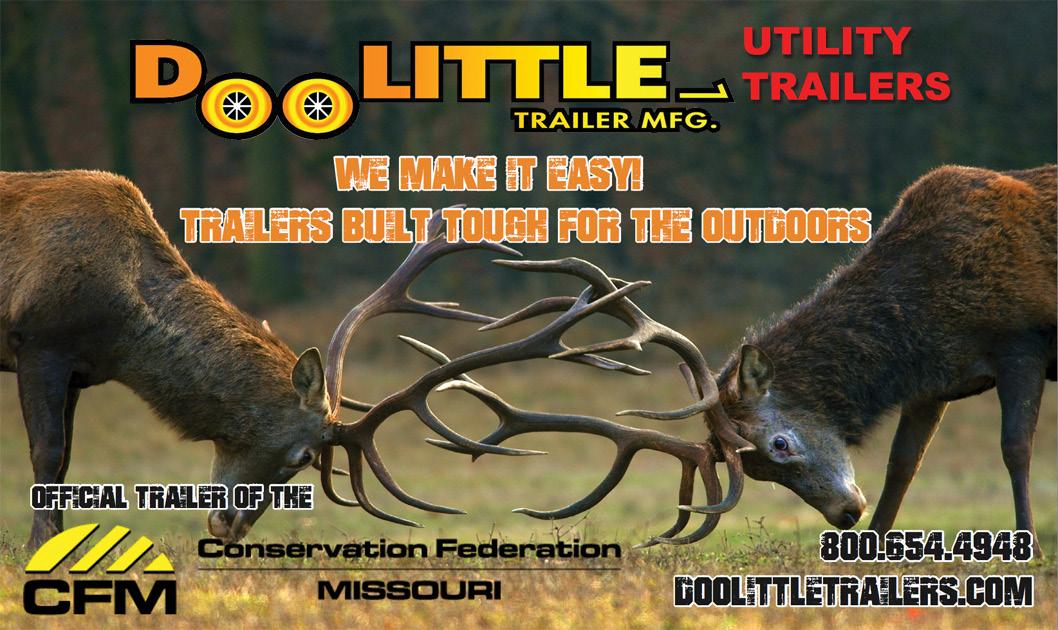

SEPTEMBER - 2023 27
Learning to “Think Like a Wetland”
The Evolution of Wetland Restoration and Management in Missouri.
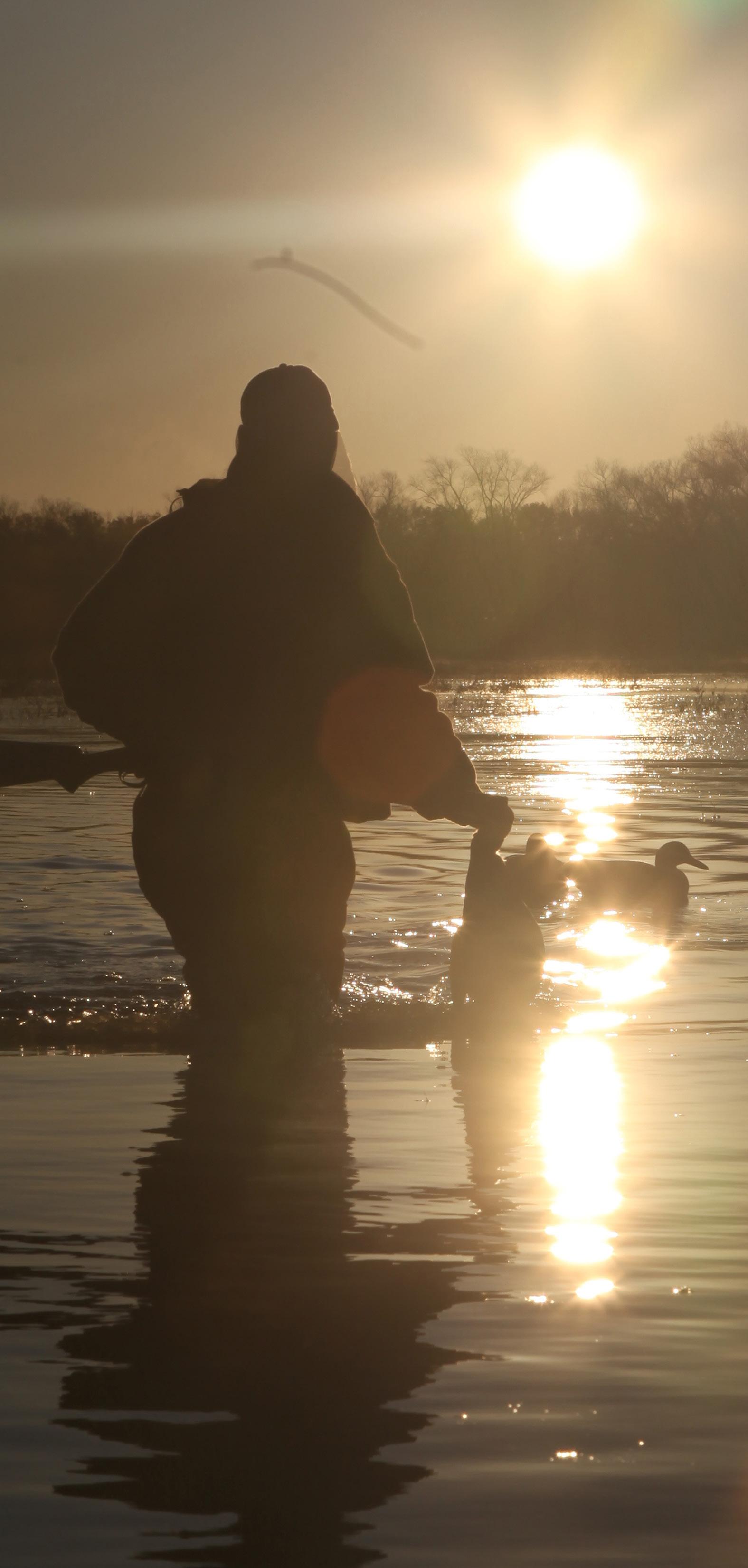
Acentral theme of the 2023 Missouri Wetland Summit was that wetland conservation and management in Missouri has, and is continuing to, evolve and move toward more complete “holistic” ecosystem-based approaches. The history of this evolution from 1.) “buyand-protect” acquisition of core lands in the 1940s and 50s based on authorizing purposes mainly for migratory waterfowl to 2.) current protection and restoration mainly from easements on private lands, and 3.) enhancement and restoration of both old and new wetland areas and sites using hydrogeomorphic understanding and principles is fascinating and truly represents inclusive ecologically based management and strategic purpose.
As Ken Babcock stated in his Summit remarks, this remarkable evolution in wetland conservation in Missouri has been possible because of the amazing focus, science, and leadership of those conservation “giants” that came before us and that we stand on the shoulders of. One such “giant” has been Dr. Leigh Fredrickson, who received a Lifetime Achievement Award from CFM at the Wetland Summit (see sidebar below).
28 CONSERVATION FEDERATION
Feature Story
We in Missouri are blessed to have had those prior “giants” and now the future cadre of new conservation leaders from the “Missouri Mafia” lineage.
I am sure that many of the Summit attendees could not help but think about their own conservation “lineage” and how they came to be seated at the meeting. I was no exception.

Like many who have chosen a career in natural resource conservation, I wanted to be a wildlife biologist because I liked, and loved to hunt animals, especially bobwhite quail and ducks. Being a farm kid from rural North Missouri, I naturally related animals and their needs to the land, but honestly, my primary interest was the animal. My entry to formal education in the conservation field began at Moberly Area Junior College, where I took basic college classes and met Wilbur Gunier, professor of zoology and botany. Wilbur loved bats, and after me pestering him enough, he took me on his many forays to band bats, where I then met his batbanding buddy Dr. William Elder, Professor at the University of Missouri-Columbia (MU). Then, in a natural sequence, “Doc” Elder became my undergraduate advisor when I continued my education at MU following Junior College.
I guess I did good enough in class that Doc hired me as a Teaching Assistant for his ornithology class – and he and wife Glennis took me, Bill Eddleman (his M.S. student working on Swainson’s warblers), and Rick Schwartz (a student friend that was a mammal “nut”) on numerous trips to crawl around in Missouri caves and band more bats. What a rag-tag crew, but we loved and were entertained by Doc’s many eccentric stories of research literally around the world. Elder’s first wife, Nina, was the daughter of Aldo Leopold, and Doc often repeated a question his ex-fatherin-law asked him. Aldo would ask: “Bill do you love caves because they have bats, or do you love bats because they live in caves?” With my twist, this simple question has stayed with me for life: "do I love wetlands because they have ducks, or do I love ducks because they live in wetlands?”
Because of my interest in ducks, Elder encouraged me to take a Waterfowl Ecology class at MU taught by Dr. Leigh Fredrickson, who was also the Director of the Gaylord Memorial Laboratory located at Duck Creek CA in southeast Missouri. The connections continued - Leigh had been a Ph.D. student under Milt Weller, who was Elder’s first Ph.D. student.
Leigh’s waterfowl class was a life-changing event for me –and began a life and career journey working on waterfowl and wetlands. Leigh taught his students that understanding waterfowl first required an understanding of the place they lived and were evolutionarily adapted to – wetlands across the globe. After Mizzou, my education took me to Oklahoma State University, where I studied waterfowl and wetlands across Oklahoma for a Master’s Degree– and, then subsequently a return to MU to work on a Ph.D. with Leigh on wintering mallards and bottomland hardwood wetlands. In both research ventures, my theses were as much about the wetland ecology the ducks used as they were about the ducks themselves.
In a wonderful “never know where I will be guided next” career path, I was blessed to work on waterfowl and wetlands at the University of California-Davis, California Waterfowl Association, and Ducks Unlimited. At DU, I became the head of conservation programs across North America – and, Leigh’s admonishment to learn how wetlands worked crossed my desk, and guided our work daily. In the next serendipitous twist of my life, I returned to MU in 1998 to work at the Gaylord Lab as Leigh retired. Leigh loved field trips to look at wetlands, and one day, Phil Covington, our old friend that was a previous MDC wetland manager at Ted Shanks CA and that then was with DU in Arkansas, called and said, “You all have got to come to Arkansas to see what this kid is doing with wetland restoration.
So, Leigh and I headed south to Possum Grape, AR, where we met Phil, Tom Foti – an ecologist with the Arkansas Natural Heritage Commission – and the kid “Jody Pagan.” Tom had helped train Jody, and together with Chuck Klimas of the U.S. Army Corps of Engineers in Vicksburg, they were advancing a new way of understanding, restoring and managing wetlands – something called a “Hydrogeomorphic Method” or “HGM” for short.
SEPTEMBER - 2023 29
Left - Sunrise Retrieve. (Photo: Dale Humburg)
Feature Story
Right - Aerial shot of Ted Shanks. (Photo: MDC)
Feature Story
To no surprise, Chuck was another one of Leigh’s former Ph.D. students. Leigh and I quickly embraced HGM and began promoting and using the process to evaluate, recommend, and guide wetland conservation programs eventually on over 500 sites in 32 states. The HGM methodology uses five basic questions to understand wetlands within natural landscapes to develop fundamental goals for restoration and ecology. The questions are:
1. What was the historical (Presettlement) condition and type of wetlands in an area?
2. What is the current condition?
3. Can the historical condition be restored, and if not, what is the new “desired state” given the reality of the contemporary landscape?
4. What will it take (landform, water, communities) to achieve the desired state?
5. What management will it take to sustain the desired state?
The HGM process involves assembling the connected layers of:1) geological history and local geomorphology, 2) soils, 3) topography formed by the geology history, and 4) hydrological regimes and dynamics. Using these data, a matrix of understanding can be constructed to determine which wetland types historically were present on a site and how they operated. It also enables understanding of change and degradation – and then what needs to be restored/ managed for. For example, oak-dominated bottomland hardwood forests in Missouri occur on backswamp and floodplain terrace geomorphic surfaces, on clay-based soils, and at elevations where 2–5-year occurrence seasonal flooding occurs.
HGM has now become a critical foundation for Missouri’s current wetland programs. By using its principles, wetland conservation programs of all types and sponsors throughout the state can determine the “what”, “where”, “how” and “when” of protection, enhancement, restoration, and management. The 2023 Missouri Wetland Summit showed the amazing HGM-based transition of actions, practices, achievements and challenges for wetland conservation –and a new strategic vision for Missouri and beyond. It is amazing how interconnected the career paths of wetland and waterfowl folks are and the “ripple effect” of their lives. Leopold to Elder to Weller to Fredrickson to the wide web of Leigh’s students and now their students, many of whom currently guide Missouri’s wetland conservation programs. As the strands of people and ecosystems become effectively intertwined and understood, we now can fully embrace the guiding words of Aldo Leopold to understand and manage ecosystems as a whole - to “Think like a Mountain” – in this case to “Think Like a Wetland.”
Dr. Mickey E. Heitmeyer
Dr. Leigh Fredrickson was honored with a Lifetime Achievement award at the February 2023 Missouri Wetland Summit.
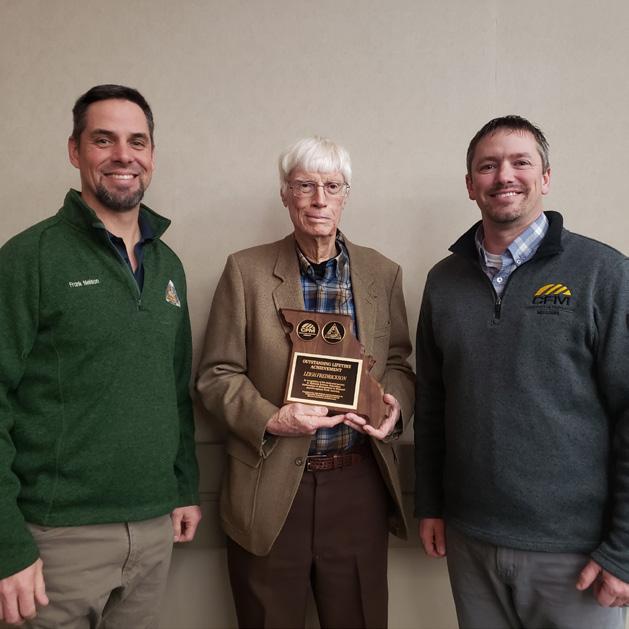
Leigh has influenced and impacted many of those attending this year’s Summit and many others across the nation. His career, which has spanned over 50 years, in which he has contributed greatly to our knowledge about wetland management and conservation. For the bulk of his career, this was as the Director of the Gaylord Laboratory from 1967 to 2002, a cooperative agreement between the University of Missouri and the Missouri Department of Conservation. During this time, he mentored 79 graduate students in wildlife sciences. Teaching waterfowl ecology and wetlands, Leigh took his students across the country to expose them to diverse landscapes, meet passionate professionals, and wrestle with wetland management issues that span across regions.
Throughout his tenure, he was able to work with wetland professionals at over 300 national wildlife refuges as well as state and private wetlands in all 50 states. Leigh’s tutelage also occurred through wetland workshops, which enabled him to mentor other segments of the natural resource workforce and influence wetland management of countless more acres. In reflection on his career, Leigh has said that he’s learned that every person matters.
During this years’ Missouri Wetland Summit, his colleagues, collaborators, coeds, and co-conspirators were able to return the favor and share their respect and admiration for him. In classic “Fredrickson” style, Leigh accepted the award and treated Wetland Summit banquet attendees to a 45-minute “lecture” about his personal career path, the history of wetland and waterfowl research in Missouri, and thoughts for the future. It was a great evening honoring a great career, and a wonderful human being.
Frank Nelson
30 CONSERVATION FEDERATION
Food For Thought: Millet
Varying water levels within and among years is one aspect of wetland management. Wetland biologists will seasonally draw down or lower water levels in wetland impoundments to expose moist soil conditions as spring moves into summer. Not only does this provide mudflats for migratory shorebirds, but the right soil conditions can germinate annual plants, like millet, which is also referred to as barnyard grass or Echninocloa crus-galli. As the summer progresses, this grass will grow and produce a rank stand of leaves and seed prior to fall migration. As the summer progresses this grass will grow and produce a rank stand of leaves and seed prior to fall migration.
September rains from late-season hurricanes or water pumped from adjacent rivers are how wetland managers will reflood the plants that grew during the summer drought. As migratory birds move back through Missouri during the fall, these flooded millet seeds and the bugs associated with breaking down the leaves provide key nutrients, minerals, and energy as they stop over Missouri’s wetlands. The value of millet is often seen primarily as waterfowl food, however, there is a much deeper and richer history here than one might imagine.
The Food and Agricultural Organization of the United Nations, FAO for short, designated 2023 to be the International Year of the Millets (https://www.fao.org/ millets-2023/en). Millets include a range of cereals across the world that were among the first plants to be domesticated. This includes several different genera, including Echinocloa, Panicum, and Sertaria, which have wetland species that are native or naturalized in Missouri. These C4 grasses have a range of advantages that make them attractive not only for wildlife, but also for sustainable agriculture because of their benefits to the planet, farmer, and human health. They grow fast, can withstand harsh environments, are resistant to pests, provide high yields, and can be used for multiple purposes, such as food, feed, fodder, brewing, biofuel, and medicine.
Despite all of these advantages - many overlapping with benefits to wildlife - crops like millet do not enjoy as much widespread use as they once did and are often considered neglected or lost crops. Surprisingly, several species of barnyard grass, E. crus-galli var. esculenta and E. colona var. frumentacea, have a long history of cultivation for human consumption and not just for wildlife. These plants were cultivated for 5,000 years in Asia wetlands, and this production has only seen declines in the last 100 years. While documentation of Indigenous tribes in North America using these species specifically is less prevalent, evidence of using grasses in different regions does exist.

Often times today we see a large divide between agriculture and wetland conservation. However, if we look a little closer at our own natural resource management and cultural histories around the world, we might find that there is actually more overlap than a drastic gap. As we focus on wetlands in this issue and celebrate the International Year of the Millet, the need to feed both people and wildlife can stimulate some food for thought on possible options for taking advantage of overlapping opportunities, evaluating neglected crops, and how the health of our wetlands can be directly linked to our own health.
Frank Nelson
SEPTEMBER - 2023 31
Member News
Millet, or barnyard grass, seedlings that have germinated across a moist soil mudflat during a summer drawdown on a managed wetland in Missouri. (Photo: MDC)
Moist Soil Management: Just Say No to Corn!
For the past 23 years, I’ve had the good fortune to be a duck club member and general manager of a 240acre Wetland Reserve Program (WRP) tract known as Massasauga Flats. Yes, the namesake is a rare rattlesnake that resides on the wet prairie of Pershing State Park as well as on our adjoining wetland, which speaks to the diversity of wetland communities.
Our 10 members, many of whom were former wetland biologists, decided early on that we wanted our wetland to be a shining example of how to restore and manage WRP tracts in Missouri. Our objective year in and year out is to not only “set the table” to attract ducks and have a successful hunting season, but to also provide for the full spectrum of wildlife that need and require diverse wetlands to complete their life cycle.
During the recent wetland summit, co-sponsored by CFM and MDC, one of the presentations focused on the success of the Natural Resource Conservation Service (NRCS) Wetland Reserve Program in Missouri. To date in Missouri, there are over 1,100 individual easements totaling over 161,000 acres. What an accomplishment! But with that success comes the challenge of helping more than 1,000 new managers (landowners) get the most out of their WRP wetlands.
With this challenge, I thought it might be useful to provide our CFM readers, some of whom may own, manage or know someone with a WRP easement, with an article regarding a wetland strategy we have used on our WRP tract for 23 years. It’s known as “moist soil management.”

32 CONSERVATION FEDERATION Feature Story
One of the most highly respected wetland biologist I know came up with a saying that should be the motto of every wetland manager, “You can’t manage a wetland out of a corn seed sack!” Many landowners think you have to plant corn or other “food plots” to attract ducks to their wetland. You absolutely do not!!
To drawdown (drain) a wetland just to plant the NRCS allotted 5 percent of your tract to corn or any other “food plot” crop is not wetland management. It’s antiwetland management. In doing so you virtually negate 90 percent of the function and ecological value of your restored wetland.
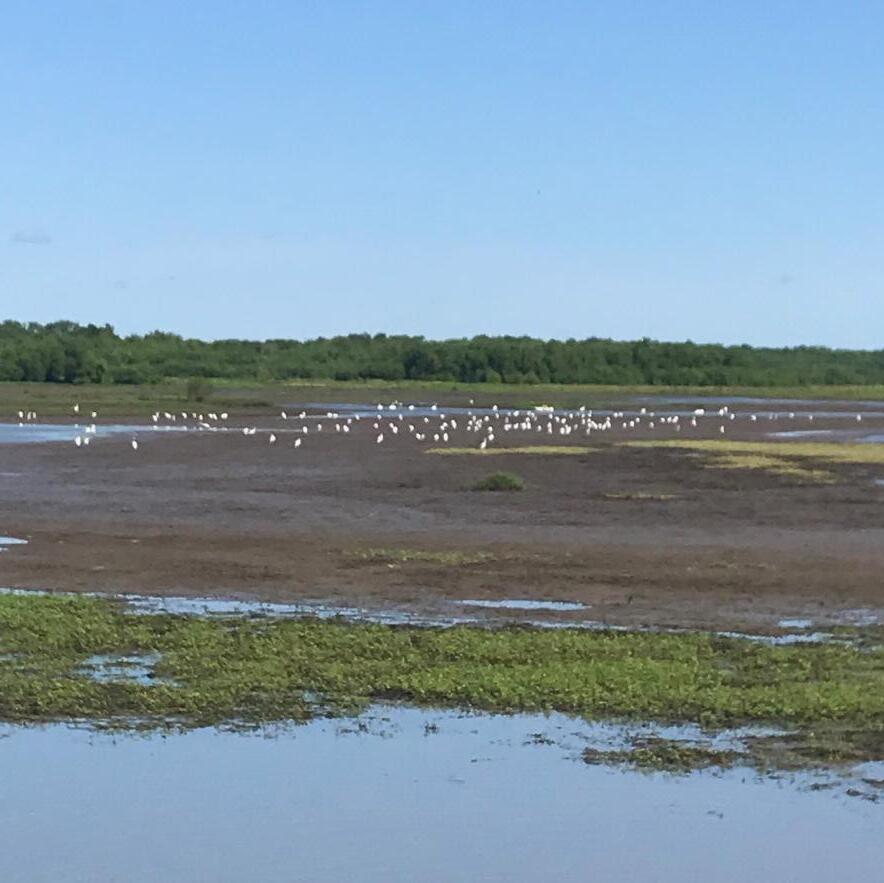
The duck season in Missouri is about two months long. That leaves 10 months, the majority of the year, to manage and enjoy something other than decoys, dogs and hunting. On our wetland, we enjoy year-round birding and frogging while providing habitat for a host of resident wetland wildlife, brood habitat for geese and wood ducks and foraging habitat for a host of wading birds. As a bonus we have two eagle families that nest in close proximity and hunt the property.
Without getting too far down in the weeds (pun intended), moist-soil management encourages the growth of seed-producing native wetland plants by mimicking the seasonal wet and dry cycles of natural wetlands. Moist-soil habitats are typically wet in spring, semi-wet to drying out in summer, and wet again in fall and winter. Well-managed moist-soil wetlands can produce up to 2,000 pounds of seed per acre. That means a single acre of moist-soil habitat can meet the daily energy demands of 1,000 ducks.
The main idea behind moist-soil management is to let water do the work. This requires some infrastructure— dikes, levees, water-control structures and a water supply (either through wells or pumping out of a river or streams) to regulate the timing and amount of water in managed units. That’s why moist-soil management in the past was mainly conducted on federal and state lands. Today, with the significant progress made in restoring wetlands on private lands, growing numbers of landowners are flocking to moist-soil management because it provides wetland habitat year-round.
For waterfowl, moist-soil wetlands are the perfect onestop-shop during spring and fall migration. Compared to agricultural crops moist-soil habitats provide more nutrition, offer better cover, and support a greater abundance and diversity of species. Seeds of moist-soil plants also resist deterioration longer than grain, and the plants themselves harbor a smorgasbord of proteinrich invertebrates, which provide important nutrients for water birds preparing for the rigors of nesting, egg-laying and molting.
For private landowners, moist-soil management is a more cost-effective way to provide food and cover for waterfowl and other wetland wildlife than planting and flooding agricultural crops. The cost of planting a single acre of corn can easily exceed $400. In addition, another function of restored wetlands is to help filter out nitrogen and phosphate from our watersheds. Planting corn which requires fertilizers diminishes this important function even further.
Moist-soil management is also relatively easy for many landowners to conduct themselves, with one important caveat: Wetlands are highly dynamic environments that can change dramatically from year to year, so managers must be willing to work with, rather than against, natural processes to keep habitat productive and attractive for wildlife. Having been a wetland manager for over 40 years, I’ve made every mistake possible when it comes to moist-soil management. The beauty of wetlands is that they’re resilient, and even if you make mistakes, nature has a way of fixing them.
SEPTEMBER - 2023 33
Feature Story
Left - Re-flooding a disked area in September is attractive to shorebirds and blue-wing teal. (Photo: Dale Humburg)
Right - Early summer drawdown providing foraging area for shorebirds and egrets. (Photo: Dale Humburg)
Here are the three basic steps required to manage moistsoil wetlands for waterfowl and other wildlife:
1. Begin a slow drawdown: Drawdown timing is usually described as early, mid-season or late. Early drawdowns start within the first 45 days of the growing season, while mid and late-season drawdowns take place during the middle and at the end of the growing season. As a general rule, the longer you can wait to draw water off, the better. The duration of a drawdown is equally important. Long, slow drawdowns are usually better than short, fast ones.
2. Evaluate and set back succession in late summer: After drawdown, pay attention to the plant response. Left unchecked seed-bearing annual plants such as smartweed, millet, and panic grasses are quickly replaced by less desirable perennials like bulrush, cattails, or even woody shrubs. Although perennials are important components of diverse and healthy wetlands, most moist-soil managers prefer to maintain 50 to 70 percent of wetlands in the early, annual-plant stage of succession.
To set back succession, disking, mowing, burning and spraying should be conducted to eliminate undesirable vegetation. These management practices also help encourage waterfowl use by creating open areas for landing zones and decoys within stands of dense vegetation.
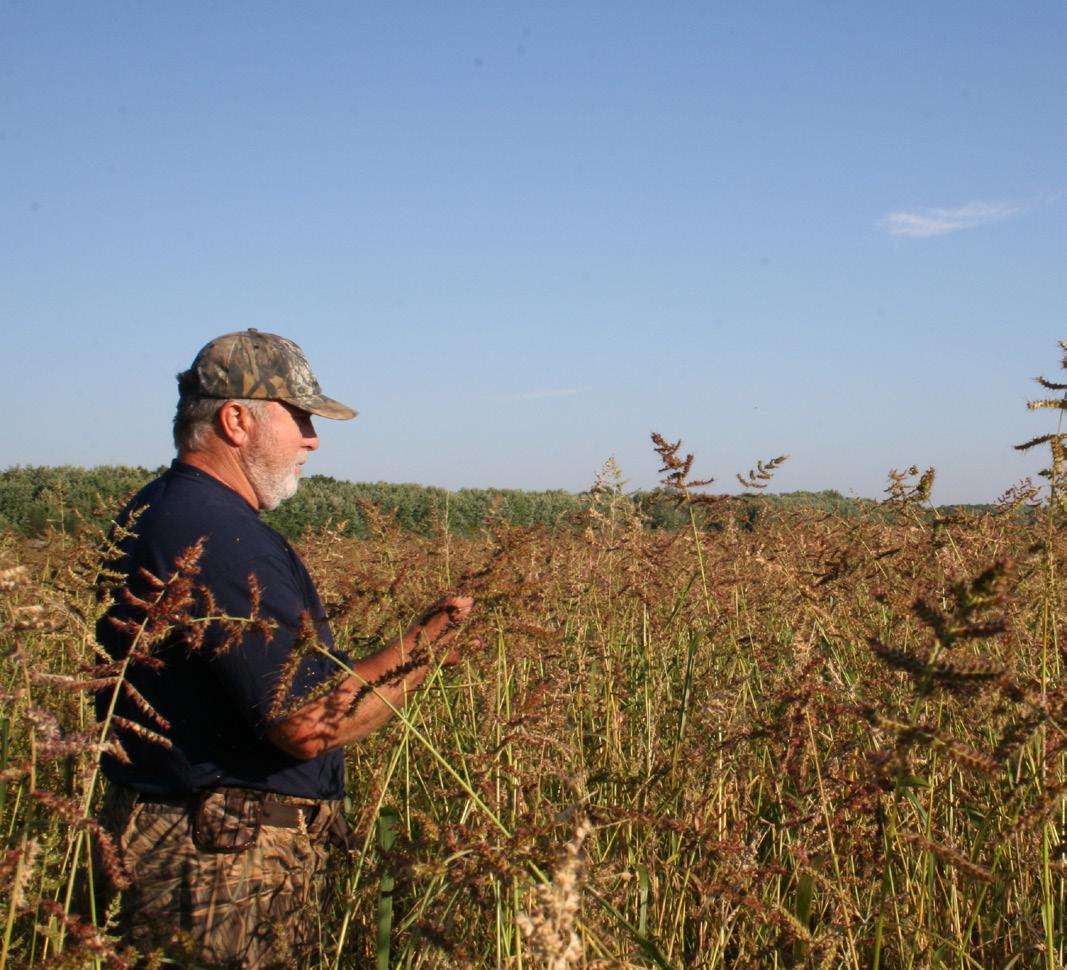
3. Slowly flood in the fall: For those with a reliable water source, flooding a moist-soil wetland is just like drawing it down, except in reverse—it’s best to add water over a long period of time. Gradual flooding will boost seed production in water-loving plants such as smartweeds and millet, and create shallow mudflats that are highly attractive to shorebirds, wading birds, and bluewings. Making food available by gradual flooding extends the season for both ducks and duck hunters.
If possible, increase the water level throughout the fall migration. Research shows that water depths ranging from an inch to 18 inches will support the greatest diversity of waterfowl and other wildlife. However, every site is unique, so it may take some experimentation to determine the optimal timing and depth of flooding in a particular moist-soil management area. In this regard, wetland management invites close observation and management response.
No two years are the same; so, don’t get in a rut of doing the same thing at the same time every year. Keep records -- wetland management is a learning process, and good records are better than an unreliable memory.
That’s all there is to it. Draw water off slowly in spring/ summer; if required, do a little disturbance in the summer to reset plant succession; and put water back on again slowly in the fall. And to reiterate a key point: Remember that wetlands change constantly, so moistsoil management is not a recipe that’s the same every year.
For me, the best part of moist-soil management is that I get to enjoy wetlands year-round (not to mention that hunting in a natural marsh is something special). Without a doubt, this has made me a better conservationist by giving me a better understanding of the dynamic interactions of water, plants, and animals. As wetland managers, we too often focus on what we can do to improve waterfowl hunting in the fall rather than thinking about how we can meet all the lifecycle requirements of all wetland wildlife. Fortunately, moistsoil management provides us the opportunity to do both.
George Seek
34 CONSERVATION FEDERATION
Story
Feature
Portions of this article are reprinted from the May/June 2013 DU Magazine.
Wild millet can produce over a thousand pounds of waterfowl food per acre at no cost. (Photo: Dale Humburg)
Wetlands, Waterfowl, and the Missouri Model
Statistician George Box was referencing scientific models; however, the same conclusion is relevant for the Missouri Model of Wildlife Conservation.

Most aspects of the Missouri Model have not been static as social, ecological, and environmental elements have changed over the decades. Wildlife populations increase and decrease, habitat conditions vary year to year and from decade to decade, and public attitudes – perhaps more variable than wildlife population dynamics –change with societal trajectories.
Arguably, two fundamental elements of the Missouri Model are not wrong. Amendment 4, proposed by the newly formed Conservation Federation of Missouri, was approved by Missouri voters in 1936. This amendment established an apolitical Missouri Conservation Commission with broad authority over the state’s fish, forest, and wildlife resources along with control of revenues for those purposes. Forty years later, Missouri citizens passed an unprecedented tax to support conservation in Missouri. The “Design for Conservation” provided 1/8 of a cent sales tax to directly support forest, fish, and wildlife management. These foundational elements have assured leadership and sufficient funding to deliver on Missouri’s conservation mission.
SEPTEMBER - 2023 35
Feature Story
“All models are wrong…but some are useful.”
Conservation professionals from decades ago set the stage and also the expectation for constant improvement in wetlands management. (Photo: MDC)
Feature Story
The Missouri Model also has constantly evolved in professional staff, land management, conservation partnerships, science in support, and social connections. These model elements have changed as new information is acquired, ecological conditions change, and the social landscape shifts. This article provides a few examples from experience in wetlands and waterfowl management that reflect a dynamic Missouri Model.
Objectives change.
In 1948, the Missouri Conservation Commission approved an objective for Fountain Grove Wildlife Management Area to “…be operated primarily as a public shooting ground for waterfowl.” In 1963 priorities changed and “…management now is to provide goose habitat,” acknowledging the responsibility Missouri shared with other Mississippi Flyway states and provinces for managing the Eastern Prairie Population of Canada geese. Twenty years later… “The primary area purpose is to provide quality wetland habitat to fulfill the needs of migratory and resident wetland wildlife resources and to provide wetland-related recreation to the general public.” By the late 1990s …“Protect, restore, and manage a dynamic and diverse wetland complex.”
Over 50 years, area management goals were adapted in response to changes in both the ecological and social landscape. A single-species approach with an emphasis on waterfowl hunting was relatively easy to achieve decades ago. Adding objectives required more diverse partnerships, more inclusive management strategies, a balance among the public’s desires, and professional staff willing to keep up with everchanging demands.
Public support is essential.
Often (almost always), there is no single “right” answer. A proposal in the early 1970s for a Missouri state duck stamp certainly met with both support and opposition. The initial objectives were to expand funding support for waterfowl habitat and to create a survey database of hunter names and addresses. Despite considerable public support, legitimate concern related to the emerging initiative petition for Design for Conservation, precluded further progress at that time. Public support for “Design” was more important than a duck stamp. Following the passage of the 1/8 cent sales tax; however, the stamp proposal again was advanced. Opinion surveys of hunters and input from the general public all showed 60-75% in favor of the stamp. Ultimately, the Conservation Commission supported creation of the state duck stamp. Proceeds provided support for waterfowl habitat until the point-of-sale licensing system was established in the mid-1990s.

Science can trump public opposition.
Field research over decades showed significant waterfowl losses to lead poisoning across the U.S. In Missouri, an examination of more than 18,000 duck gizzards revealed potentially lethal ingestion rates of lead pellets in 5 to 25 percent depending on species, wetland area, and season. Late-season lead poisoning die-offs were a common occurrence. A suit by the National Wildlife Federation, based on concern for lead poisoning in bald eagles led to a phasedin implementation of nontoxic shot regulations for waterfowl hunting beginning in the mid-1980s. Despite the biological evidence, considerable concern about a ballistically effective alternative to lead ammunition presented significant headwinds to hunter acceptance. Again, rigorous science rather than opinion led to a path forward. A shooting experiment at Schell-Osage Wildlife Area involving both lead and nontoxic steel shot revealed no significant difference in hunter performance with lead versus nontoxic steel shotshells. Further advancement in shotshell alternatives (and perhaps reluctant acceptance) has since eliminated the balancing act between rigorous science and hunter opinion.

36 CONSERVATION
FEDERATION
Public/private partnerships are essential.
The 1989 Missouri Department of Conservation Wetland Management Plan included what at the time was an ambitious objective of developing an additional 12,500 wetland acres on private land as well as management assistance on the existing 38,000 acres of private wetlands. A new wetland management specialist was proposed to support public and private wetland managers. Fast forward 30 years. An additional 160,000 acres of privately-owned lands have been enrolled in the Wetland Reserve and related programs. Complexes of private wetlands are associated with a dozen state and federal areas established in recent decades. Wetland biologists in each of the four NRCS area offices are part of the NRCS Wetland Emphasis Teams and assist with wetland restoration, enhancement, design, and management of more than 1,100 Wetland Reserve Easements. Collaboration across state and federal agencies and with private landowners reflect the conservation partnerships that benefit wetland habitat, wildlife, and public interests.

It's a culture not a recipe.
A common misperception is that natural resource management in Missouri is successful solely because of the funding provided through 1/8 cent sales tax. Yet citizen support for an apolitical conservation agency was in place four decades before the infusion of funding through Design for Conservation. The culture that gave rise to the Missouri Model also led to adequate funding. Public engagement, professional staff, science in support, and sound resource management remain as key ingredients that yield the Missouri conservation culture.
SEPTEMBER - 2023 37
Feature Story
Dale D. Humburg, Kenneth M. Babcock, and David A. Graber
Left lower - Charlie Schwartz designed the first Missouri waterfowl stamp in 1979. (Photo: Dale Humburg) Left middle - Biologists examined duck gizzards to assess lead shot ingestion rates. (Photo: Dale Humburg)
Top - Missouri's conservation culture must keep pace with resource and social changes. (Photo: Dale Humburg)
Cultivating the Next Generation of Conservation Professionals: A Natural Connection

From lakes and rivers to springs and wetlands, Missouri is fortunate to house an abundant supply of freshwater resources. However, this is not to be taken for granted. Water affects us all and the sustainable use of aquatic resources is a statewide, national and global issue.
The matter of clean and sustainable water is becoming more critical as habitats and wetlands are destroyed, droughts and flooding occur, and the human population expands, resulting in more consumption and pollution of our water. Balancing the need for preserving water quality and wetland ecosystems requires a fundamental understanding of these resources gained through proper education, training, staff, research, partnerships and public policy.
This is why the Institute of Fisheries, Wetlands and Aquatic Systems held at the University of Missouri’s (MU) College of Agriculture, Food and Natural Resources (CAFNR) was established in March 2023 in partnership with the Missouri Department of Conservation and the Missouri Conservation Heritage Foundation (MCHF).
“Clean water and healthy aquatic systems are vital for our global future,” said Mun Choi, MU president. “This Institute will be a crucial resource for citizens, government entities and private industries committed to this mission in the years to come, and MU is proud to be a driving force in that mission moving forward.”
38 CONSERVATION FEDERATION Feature Story
The Institute provides an opportunity to build partnerships to expand the capacity to train the next generation of conservation professionals and conduct collaborative, whole system-based research that has the potential to inform policy and management decisions at the state, regional, national and international level. Plus, having well-trained professionals making effective and informed decisions will benefit wetlands and aquatic resources.
“This new Institute is a national model for how we positively leverage the power of partnerships to bring together fisheries, wetlands and other aquatic systems into an integrated area of study to not only further science, but also develop future talent in the conservation field,” said Sara Parker Pauley, MDC director.
Missouri is proudly known to have one of the nation’s top conservation programs. This reputation further pushes the state’s conservation leaders to continue to protect and manage the fish, forest and wildlife resources in Missouri providing opportunities for everyone to use, enjoy and learn about these resources.

The Institute is the next extension to continue this work and it all starts with training students passionate about conservation and the outdoors, preparing them to take on Missouri’s conservation challenges. In fact, many MU graduates already go to work for MDC and other state conservation and natural resource partners. The Institute will build a strong and consistent program that is resilient, whether in changes of conservation or faculty.
“MDC has a long and strong connection to MU along with our other state partners including one of the best U.S. Geological Survey Cooperative Fish and Wildlife Research Units in the nation,” said Jason Sumners, MDC deputy director resource management and cochair of the Institute Advisory Board. “If an Institute of this nature is going to be successful, it’s right here in Missouri. I’m confident we can create that same level of national reputation with management of our fisheries, wetlands and aquatic systems.”
The Institute will be an immersive experience that introduces students to the broad multidisciplinary conservation work that is carried out by state and federal agencies, non-governmental organizations, and the public sector.
The connection between course work and day-to-day experience with diverse organizations will help students fully connect the technical and education knowledge with real-world work.
In addition to the essential workforce development that will enable MDC to continue supporting the state’s aquatic systems to the highest standards, the partnerships will provide valuable education opportunities for students including internships, cooperative education training and graduate assistantships.
“Our vision is a direct pathway and natural transition from the college experience into the workforce,” said Sumners. “While we are still in the development phases of internships and co-op programs, we envision a broad array of opportunities to work alongside professionals responsible for management of habitats and species ranging from our big rivers and wetlands to small Ozark streams and fens, and ducks to darters.”
Missouri is home to the nation’s great rivers, some of the most incredible reservoirs and important wetlands resources. Clean and healthy freshwater ecosystems have never been more important to our health, safety and future. Inspired, educated and trained conservation stewards are needed to bring innovative expertise and research used to work toward a sustainable planet.
To date, MCHF has raised more than $12 million toward the goal of funding a $30 million endowment held by MCHF. MCHF and their partners and donors are committed to building the endowment over the next 10 years for the continued support of staffing and programs at the Institute.
To learn more about the Institute, contact MCHF Executive Director Tricia Burkhardt, tricia.burkhardt@ mochf.org or visit us online, mochf.org/aquatic-institute, or fwas.missouri.edu/
SEPTEMBER - 2023 39
Feature Story
Youth enjoying water and fishing. (Photo: MDC)
Missouri Conservation Heritage Foundation



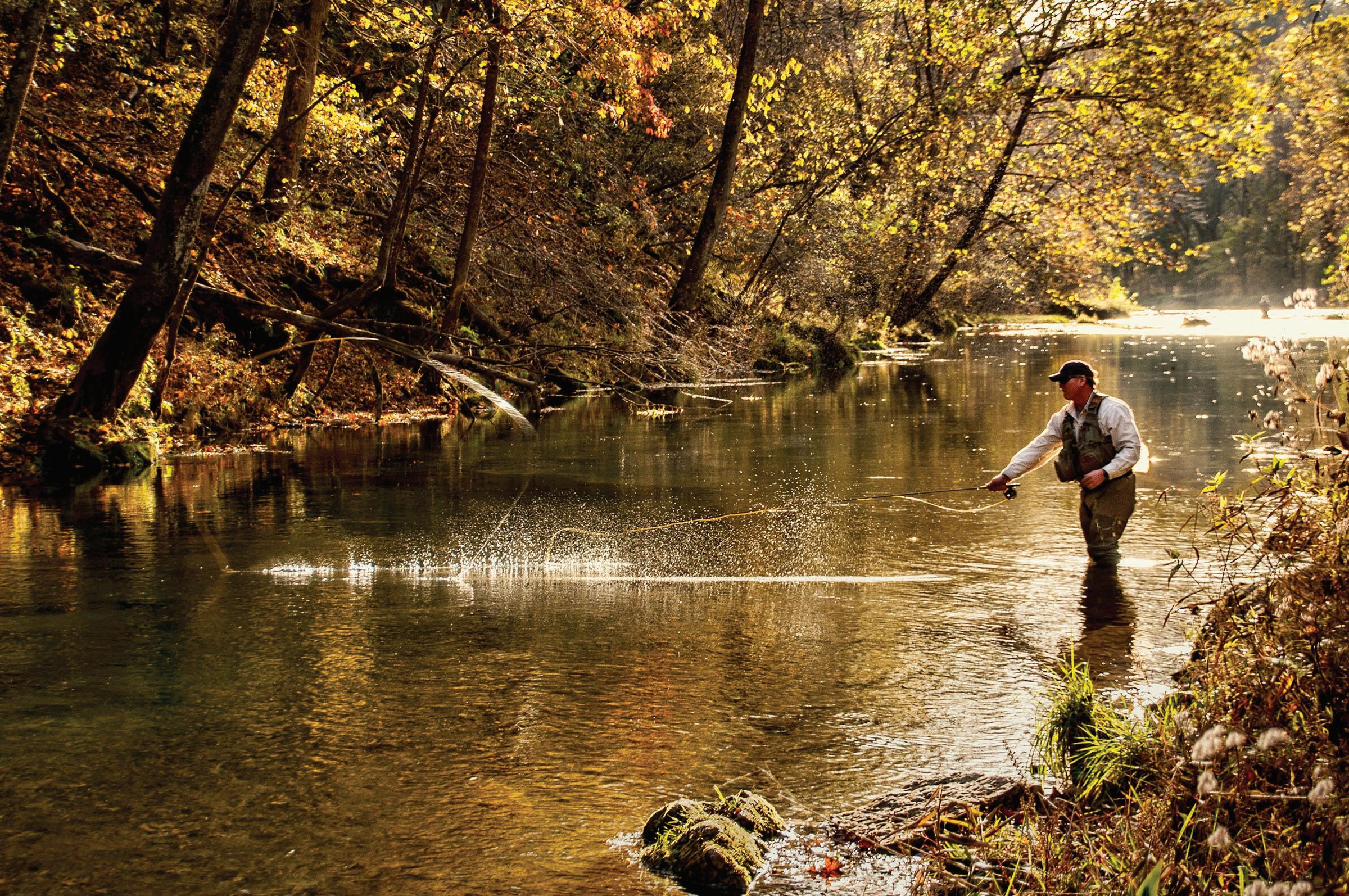
40 CONSERVATION FEDERATION Get healthy in nature this year. mdc.mo.gov/places–go Healthy is NATURE
BNL6276_Engage_Clarity_Digital_7.25x4.35.indd







CLARITY EQUALS CONFIDENCE
Engage, the newest line of optics from Bushnell, gives you optimized clarity on the hunt or on the range. Best-in-class glass with Bushnell’s EXOTM Barrier offers unmatched performance in any situation, and toolless locking turrets secure your zero at any distance so you have the advantage no matter the target.


















Don’t just look; engage with the best name in optics. GET BEHIND THE GLASS AT BUSHNELL.COM/ENGAGE





Available

SEPTEMBER - 2023 41
in 9 configurations in exposed or capped turrets.
1 8/4/17 4:28
PM
Wetlands Benefit Everyone
What good are they? That is a question that is sometimes asked when the topic of wetlands comes up. The answer is not always obvious, and the topic can be polarizing. However, the benefits that wetlands provide to society are many and varied. Here are just a few:
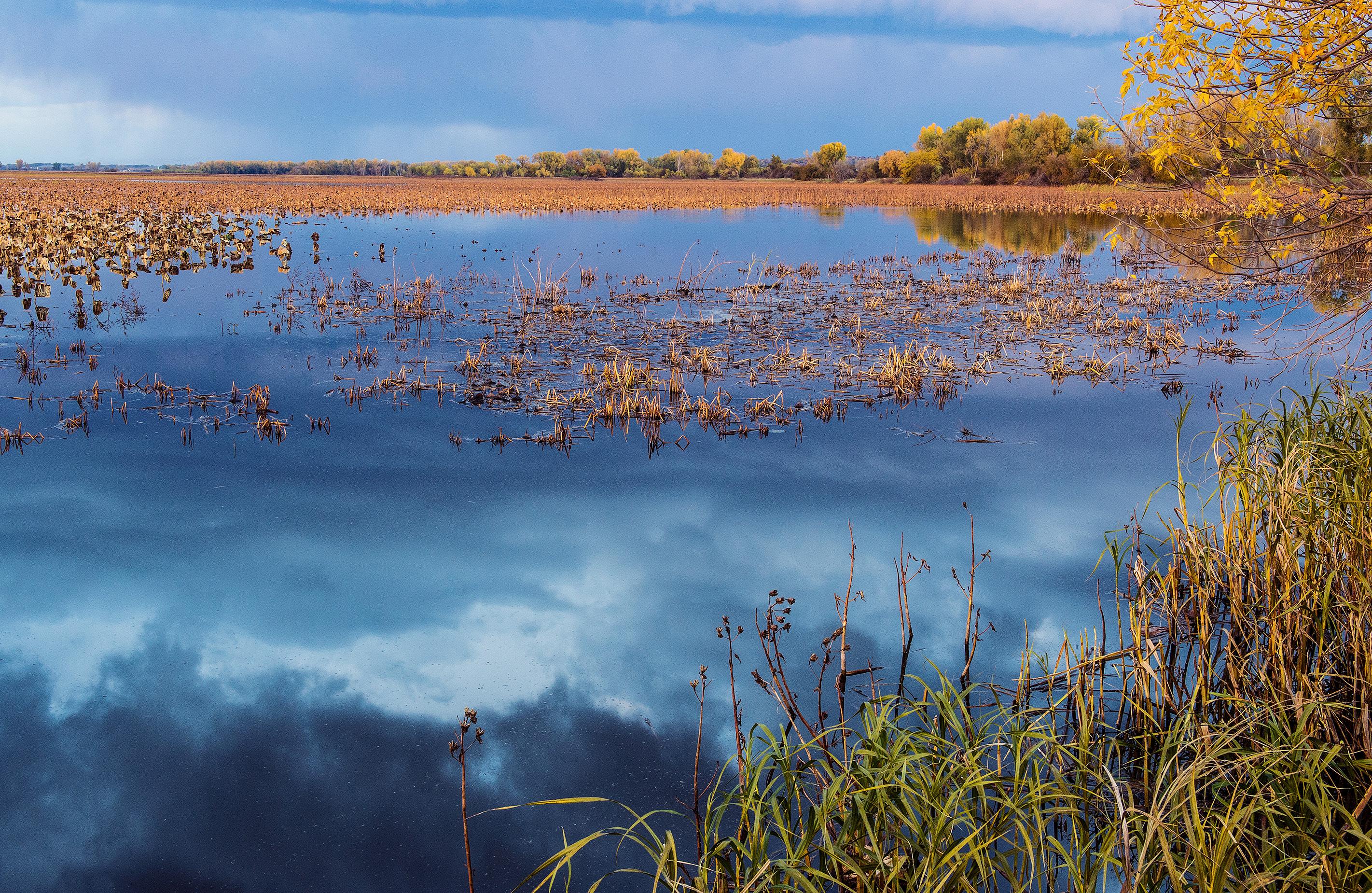
• Wetlands benefit communities tremendously by improving water quality, which reduces the cost of water treatment processes.
• The soils and vegetation in a wetland help trap sediments suspended in water, filtering and cleaning them.
• Wetlands absorb nutrients such as nitrogen and phosphorus. Excessive nitrogen and phosphorus cause algae blooms and can reduce the amount of oxygen aquatic organisms need.
• Wetlands also facilitate groundwater recharge. Many communities get their drinking water from rivers or from groundwater. Water captured in wetlands is available to seep and filter into groundwater aquifers.
• Wetlands reduce flood peaks by storing water during high water events and slowly releasing it later to help stabilize stream flows during dry periods.
Floods have become more frequent and severe in recent years, costing lives and millions of dollars to reconstruct infrastructure. Building levees higher only results in higher flood peaks. Expanding the floodplain with the use of setback levees helps lower flood peaks by giving floodwaters somewhere to go.
42 CONSERVATION FEDERATION Feature Story
The area between the river and the setback levee can then be allowed to revert to native vegetation including wetland and forested habitats. Maintaining just 15% of the land area of a watershed in wetlands can reduce flooding peaks by as much as 60%.
A recent example of levee setback in Northwest Missouri was in response to frequent flooding along the Missouri River during 2019 that resulted in millions of dollars of damage to levees and farm crops. The landowners and the local community became convinced that setting the levee back would be the best long-term solution to this repeated problem. The Atchison County Levee District along with The Nature Conservancy, the U.S. Army Corps of Engineers, the Missouri Department of Conservation, the Missouri Department of Natural Resources, the Northwest Missouri Regional Council of Governments and others, worked with private landowners to complete a highly complex levee setback project to reconnect 1,000 acres of the historic floodplain. That project is designed to reduce flood stage and velocities significantly and will also increase the number of wetlands that have been lost.
But what is a wetland? Wetlands are transitional habitats between open water and uplands. They may be connected to adjacent open water on the surface, or through subsurface soils. Their soils can be dry much of the time but are often at least saturated and support emergent vegetation. Wetlands are scientifically identified by the type of soil and plants that they support. In Missouri, wetlands are most often found in riparian areas near large rivers and streams and are driven by overland flooding. For this reason, we often find our largest wetlands near large rivers and broad floodplains.
Even small wetlands can be beneficial by storing carbon below ground and be important for unique plants and wildlife, like insects and amphibians, that can be easily overlooked, but contribute significantly to local and regional biodiversity. Fens are a unique wetland type that fall into this latter category. They can be found where groundwater seeps through the soil making the ground saturated throughout most years. These wetlands often occur along slopes where the local groundwater table intersects with the change in slope, geology and soils between uplands and floodplains. These can occur deep in the Ozarks as well as the hills of Northern Missouri.
The interaction of water and nutrients makes wetlands one of the most productive habitats on our planet, supporting a vast array of plant and wildlife species including birds, mammals, reptiles, amphibians, insects, and fish. Many species of birds and mammals rely on wetlands for food, water, and shelter, especially during migration and breeding. Although wetlands make up only about 5 percent of the land area of the lower 48 states, more than one-third of threatened and endangered species live only in wetlands. An additional 20% of the country’s threatened and endangered species use or inhabit wetlands at some time during their life cycle. Half of all North American bird species nest or feed in wetlands (Source: U.S. Fish and Wildlife Service); thus, wetlands are popular for the many recreational opportunities they provide. Federal and state wetland areas are among Missouri's most popular birding locations (See Sarah Kendrick’s article beginning on page 55). Wetland areas are prime locations for waterfowl hunting. Waterfowl hunting on Missouri Department of Conservation intensively managed wetlands areas is in high demand with hunters throughout the state. Many private wetland owners also manage their property for hunting and a wide variety of wetland-associated wildlife.
Wetlands are incredibly productive, which is partially why they have been lost at such a high rate. Floodplains and associated wetlands have been converted to valuable farmland, and urban development is another threat contributing to wetland loss. An estimated 90% of Missouri’s pre-settlement wetlands have been lost through drainage and conversion to other uses. This overwhelming amount of loss underscores the importance, contributions, and benefits that existing wetlands and those that can be restored can provide to society.
Next time you visit or drive by a wetland, enjoy the incredible diversity of migratory birds and other wildlife you see. But also take a moment to think about the good that wetlands do that you can’t see directly, the good working in the background within the plants or under the soil, which benefits us all!
David Graber
Wetlands can be beautiful and beneficial in many ways.
SEPTEMBER - 2023 43
(Photo: William D. Blackledge)
Feature Story
Amphibians to Waterfowl: Conserving the Spectrum of Missouri’s Wetland Biodiversity








What do you think of when you hear the word “wetland?” A cypress swamp? A floodplain full of emergent plants? An open oxbow lake? An ephemeral pool in the forest? Or maybe your backyard pond? These and many other areas with permanently or periodically saturated soils are considered wetland ecosystems. No two wetlands in Missouri are exactly alike, and even a single wetland can look remarkably different between seasons and years due to local hydrology, weather, plant growth, and management.

Scientists and natural resource managers have come a long way in appreciating and understanding the diversity of wetland conditions that naturally occur across landscapes and through time. Differences, like how often and when wetlands dry, proximity to other habitat types, water quality, and the presence and structure of vegetation, contribute to supporting a diverse array of wildlife with distinct habitat requirements. To effectively conserve and manage the incredible biodiversity that results from great wetland variability, it’s crucial to identify what habitat conditions are required by a broad suite of wetland-dependent species, as well as where and when these habitat conditions occur across Missouri. Importantly, the necessary habitat conditions must be present during key windows of a species’ life cycle for that species to persist. For example, breeding habitat must be available and accessible during the species’ breeding season to enable reproductive success and the continuation of the population.
Assessing habitat availability and conditions for Missouri’s wetland biodiversity is challenging for several reasons. First, there are so many unique wetland-dependent species that it’s impossible to investigate them all at once. Second, we don’t know the habitat requirements of every species, nor do we have detailed information characterizing conditions for every Missouri wetland. And third, the very dynamics that foster productive, diverse wetland communities make it difficult to know how an individual wetland, and complexes of multiple wetlands, will change through time. These sources of uncertainty are all important to consider when choosing wetland management actions and prioritizing future conservation and restoration efforts.
44 CONSERVATION FEDERATION
Feature Story
Top - A bird’s-eye view of a complex and ever-changing emergent marsh, one of Missouri’s many wetland habitat types. (Photo: David Stonner, MDC)
Figure 1 - The timeframe during which each surrogate species completes its life history event in Missouri wetlands.
Researchers at the Missouri Cooperative Fish and Wildlife Research Unit at the University of Missouri (MU) and Missouri Department of Conservation (MDC) initiated a project in 2018 to meet these challenges, better understand habitat needs and availability for the diversity of wildlife that rely on Missouri wetlands, and identify important sources of uncertainty. This team, led by Dr. Lisa Webb and Doreen Mengel, began by broadly categorizing Missouri’s wetlands based on how often wetlands are flooded, how long they are flooded, and their major vegetation types.

They then systematically reviewed Missouri’s wetlanddependent wildlife alongside taxonomic experts to identify eight species that represented distinct combinations of flooding and land cover categories. Additionally, each selected species uses Missouri’s wetlands during unique life history events (i.e., migration stopover, breeding, or growth and survival of young) and at different times of year. These eight surrogate species collectively represent the broad diversity of life histories and habitat needs that characterize Missouri’s wetland biota (Table 1 and Figure 1).



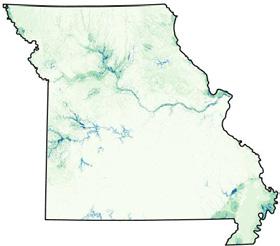
The team then worked to build state-wide Bayesian network (BN) models of specific habitat requirements for each surrogate species. The BN approach was key to fully incorporating and assessing the effects of multiple sources of uncertainty on model predictions. This approach also allowed the team to represent and analyze the importance of biological processes that occur at both the level of a single wetland (site scale) and across complexes of nearby wetlands (landscape scale). The team reviewed the available research to develop these models and conducted structured interviews with species experts. This process revealed environmental characteristics that are indicative of habitat quality for each species, and connections between these variables and habitat suitability for the species given life history requirements. These characteristics and connections defined the structure of each model. The team then interviewed the same experts again to inform the strength and directionality of relationships between environmental characteristics and habitat suitability. Where available, the team populated each model with spatial data indicating site- and landscape-scale conditions across Missouri during each species’ wetlanddependent life history event.
Each completed model now predicts where we expect to find the eight surrogate species—and the other wetlanddependent wildlife that they represent—given the habitat conditions required by the species and found at a particular location at a specific time of year. However, these predictions are only as reliable as the data used to build the models.






This project has revealed key sources of uncertainty that limit model accuracy and suggest important next steps for research and monitoring. For example, much spatial data currently provide very coarse information, such that we know little about habitat conditions at the site scale. Fortunately, these data are advancing rapidly, and ongoing initiatives by MDC, MU, and other state and federal partners will provide improved spatial data for use in the eight surrogate species models.
This type of iterative framework will serve as the basis for managing highly variable and ephemeral wetlands to support Missouri’s biodiversity under changing future conditions. The results of the eight surrogate species models will help MDC and conservation partners to prioritize and address identified knowledge gaps, while also incorporating the best-available information to guide management decisions. As new information becomes available, the models can be updated, producing more reliable predictions, and allowing for management plans to be reassessed. In other words, this adaptive management approach enables us to act despite uncertainty and update conservation strategies as we learn more. As such, the eight surrogate species models provide a springboard for managing and restoring wetland habitats that meet the broad range of life history needs for Missouri’s wetland-dependent wildlife.
Arianne Messerman



SEPTEMBER - 2023 45 Feature Story
Table 1 Left - The eight surrogate species chosen to represent the broad diversity of Missouri’s wetland-dependent fauna, and the life history events and habitat characteristics associated with each species during wetland use.
Top - Maps produced from the Bayesian network modeling process for the Least Bittern. Similar maps were produced for each of the eight surrogate species during their wetland-dependent life history event.
Missouri’s Rivers of Grass Prairie Swales and Bottomlands
The grand wetlands of Florida’s Everglades are nationally known as “rivers of grass.” Missouri has its own examples of prairie wetlands that fit this description. While prairie wetlands may not come immediately to mind when thinking of examples of Missouri’s native grasslands or wetlands, they are nonetheless integral parts of our prairie and wetland heritage. All prairie wetland types are rare in Missouri and must be protected for the benefit of future generations.
Plunging In
Prairie wetlands are wetlands dominated by perennial herbaceous plant species that are adapted to both flooding and or saturated soils and fire. They include prairie swale and wet-mesic and wet bottomland prairies. Grasses, sedges (Carex spp.), rushes (Juncus spp.), and spike-rushes (Eleocharis spp.) form the “matrix” of prairie wetland vegetation. Periodically wet soils and recurring fires are the defining ecological processes of prairie wetlands. Prairie cord grass (Spartina pectinata) is the signature species of prairie wetlands.
A good way to envision and discuss prairie wetlands is by following the course of water across the landscape. Precipitation in the uplands collects in upland drainage ways, which coalesce into headwater streams. These upland drainages and headwater streams support prairie swale natural communities. Moving farther down slope, larger order streams begin to form with larger floodplains. Wet-mesic bottomland prairies typically develop on streams with wider floodplains than headwaters – streams with a stream order greater than three. Large complexes of wet-mesic and wet bottomland prairie along with freshwater marsh develop in broader river valleys with rivers that are usually stream order six or more.
Prairie Swale
This community type develops as linear features along upland drainage ways. Flooding is variable including rare, occasional, and frequent flooding regimes. The duration and depth of flooding is short and shallow, respectively. Swales typically hold water in the winter and spring, but can carry water any time of the year depending on rainstorm events. Prairie swales typically grade into upland prairie community types on upper drainages and broad ridges and grade into wet-mesic bottomland prairie on lower slopes. In the Mississippi Lowlands ecoregion there are some extremely rare prairie swales associated with sand prairies. These are so different in their constituent plant and animal species than prairie swales found throughout the rest of the state that these sand prairie swales deserve a separate treatment and are not described here.
Because prairie swales are often embedded within dry and rocky upland prairies, this prairie wetland has fared better than the others in terms of avoiding conversion to row crops. However, high-quality prairie swales are rare because most have been taken over by woody species including the exotics Japanese honeysuckle, Osage orange, and multiflora rose, along with several natives: rough dogwood, slippery elm, hackberry, black cherry, blackberries, and permission. After fire suppression began, upland prairies were maintained primarily by haying, but typically the haying equipment avoided upland drainages to avoid equipment damage or getting stuck. This land use legacy preserved the upland prairies, but often resulted in rapid woody encroachment and degradation of prairie swales.
Prairie swales add greatly to the diversity of an upland prairie landscape. More than 60 plant species, including many sedges, can occur in good quality prairie swales. Structurally healthy prairie swales support luxuriant vegetation, often the tallest and most robust vegetation on many remnant prairies of the Osage Plains and Springfield Plain ecoregions.
46 CONSERVATION FEDERATION Feature Story
For example, at the Missouri Prairie Foundation’s Golden Prairie in Barton County, the grasses and forbs on the rocky slopes (i.e., dry-mesic chert and sandstone/shale prairie) may reach only three to four feet tall by late summer, whereas in the nearby swales the vegetation often exceeds five feet.
Wet-Mesic Bottomland Prairie
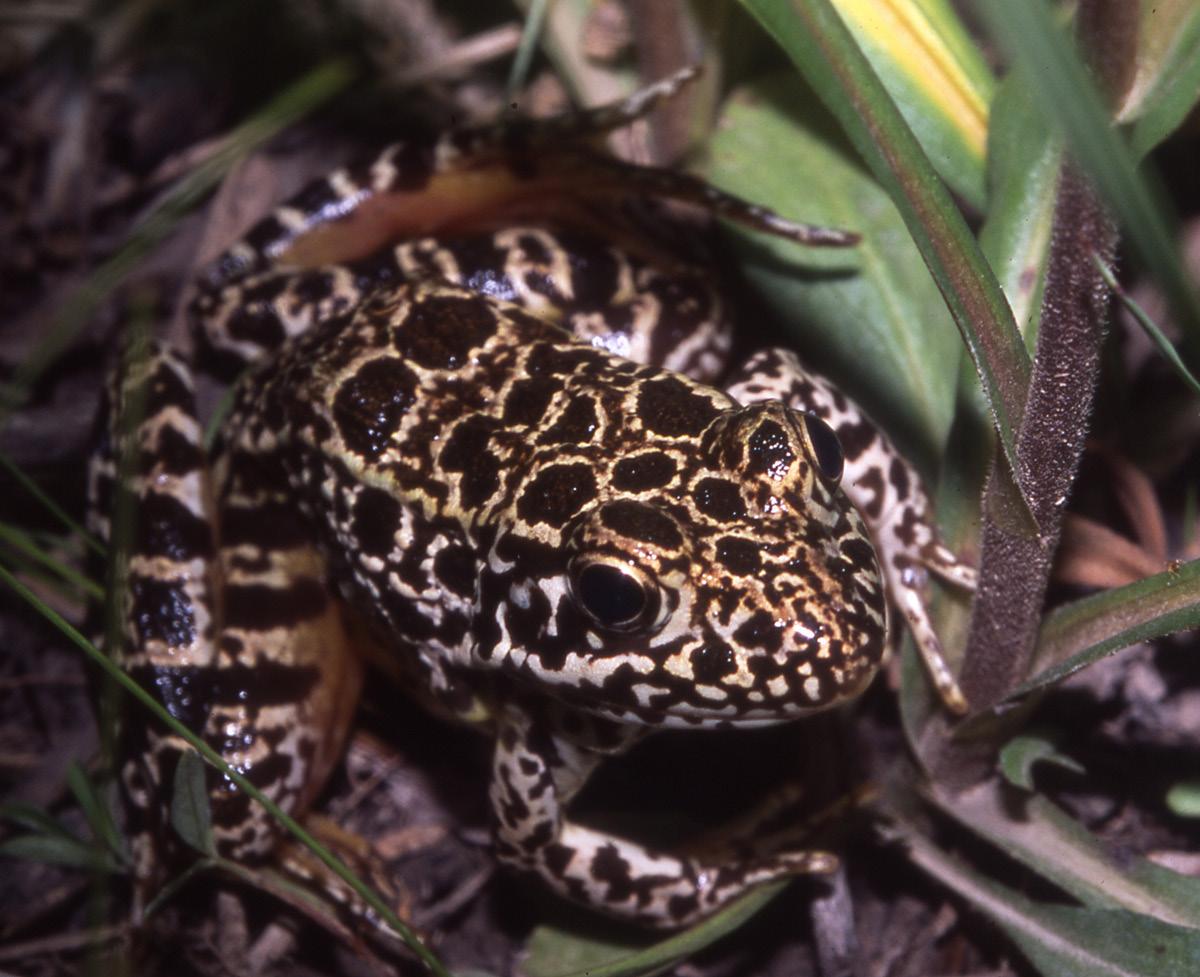
This community type often occurs on terraces along streams and at the base of foot slopes where floodplains merge into uplands. Slopes are low, 0–3 percent. Flooding is variable, ranging from rare to frequent, but is usually of fairly short duration and depth. Soils are frequently saturated within one to three feet of the surface during January to May in most years.
Wet-mesic bottomland prairies grade into mesic or drymesic prairie communities upslope and wet bottomland prairies downslope.
This community type has been nearly obliterated from Missouri because of its high agricultural productivity when drained and protected from flooding. There are fewer than 500 acres of good quality wet-mesic bottomland prairie left in Missouri. This helps to explain the rarity of the federally listed eastern and western prairie fringed orchids, which historically utilized this and mesic prairie communities.
Readily recognizable prairie swale plants include indigo bush, bluejoint grass (in northern Missouri), water hemlock, tall tickseed, common boneset, cord grass (pictured here), switchgrass, sawtooth sunflower, seedbox, fringed loosestrife, winged loosestrife, bunch flower, false dragonhead, willow aster, prairie ironweed, and Culver’s root. Characteristic animals utilizing prairie swales for part of their life cycles include the grassland crayfish, northern crawfish frog (pictured here), eastern tiger salamander, sedge grasshopper, sedge wren, and swamp sparrow. Some of these animals have neat life histories. For example, the northern crawfish frog utilizes burrows constructed by the grassland crayfish. These large frogs are seldom seen outside the early spring breeding season, hunkered down as they are in their burrows. The sedge wren often pulls off a second brood in Missouri prairie wetlands in late summer after nesting first in the upper midwest.

SEPTEMBER - 2023 47
Feature Story
Left - Cord grass. (Photo: MDC)
Right - Northern crawfish frog. (Photo: Bruce Schuette)
Feature Story
Wet Bottomland Prairie
This community type develops best on wide floodplains of small rivers such as the Marmaton River to the great rivers of the Missouri and Mississippi. Landforms include broad terraces, depressions, and backswamps—places where floodwaters tend to be of low velocity (backwater or slackwater flooding). Flooding is variable, ranging from rare to frequent, and of variable duration and depth. Soils are frequently saturated either to the soil surface or within a half foot to two feet of the surface during the period January to May in most years. Wet bottomland prairies grade into wet-mesic bottomland prairies upslope and into marshes and shrub swamps downslope.
This community type has been nearly obliterated from Missouri because of its high agricultural productivity when drained and protected from flooding. There are fewer than 2,500 acres of good quality wet bottomland prairie left in Missouri.
Wet bottomland prairies are typified by a dominance of prairie cord grass (bluejoint grass can be a co-dominant in northern Missouri) with an admixture of sedges, rushes, bulrushes, spike-rushes, smartweeds, swamp milkweed, sawtooth sunflower, rice cutgrass, willow aster, stiff bedstraw, and beggar’s ticks. Productivity is high with vegetation reaching over six feet tall by late summer.
Mike is the natural community ecologist for the Missouri Department of Conservation and is a technical advisor to the Missouri Prairie Foundation. This article has been adapted from his "Rivers of Grass" article that appeared in the Spring 2012 issue of the Missouri Prairie Journal.
Left - Typical plant species of wet-mesic bottomland prairie include big bluestem, eastern gama grass, bluejoint grass (in northern Missouri), prairie cord grass, Sullivant’s milkweed, bunch flower (pictured here), Michigan lily, rattlesnake master, prairie blazing star, sweet coneflower, Culver’s root, compass plant, white wild indigo, false dragonhead, purple meadow rue, a number of sedges and rushes, willow aster, common boneset, closed gentian and New England aster. Productivity is high with grasses and forbs often over five feet tall by late summer. Characteristic animal species are basically the same as for prairie swales.

Right - Characteristic herptiles of wet bottomland prairies include the western fox snake (northern Missouri), Graham’s crayfish snake (pictured here), Massasauga rattlesnake (northern Missouri), western chorus frog, plains leopard frog, and southern leopard frog. The sedge wren, marsh wren, swamp sparrow, common yellowthroat, northern harrier, American bittern, least bittern, king rail, Virginia rail, and sora all use wet bottomland prairies for migratory and or breeding habitat.
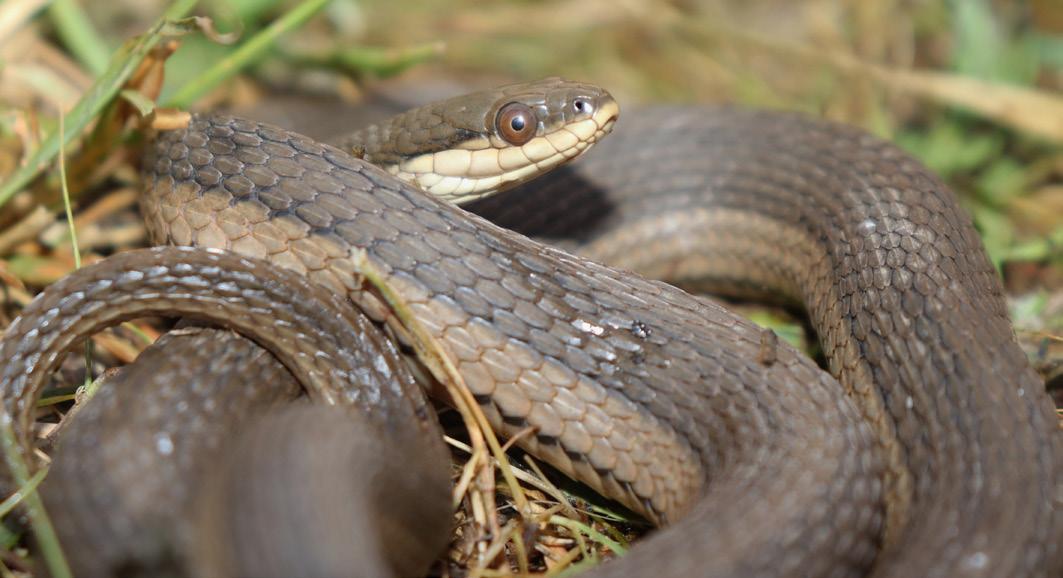
48 CONSERVATION FEDERATION
(Photo: Bruce Schuette)
(Photo: Bruce Schuette)
Mike Leahy
Digging up the Dirt on Burrowing Crayfish
Have you ever wondered how those mysterious mounds of soil keep cropping up in your yard? Or maybe you’ve spotted unusual dirt piles while walking in your local conservation area? Those ‘chimneys’ are a sign that you have discovered the home of an elusive, subterranean organism—the burrowing crayfish! You may be familiar with crayfish found in streams and ponds or you may be better acquainted with a good old-fashioned crayfish boil. Burrowing crayfish are a subset of these organisms that, it’s right there in the name, create burrows! These species will excavate deep burrows to the water table where they rely on groundwater for moisture. Their burrowing behavior has allowed them to inhabit many habitats including roadside ditches, prairies, savannas, and wetlands. Missouri is home to ten species of burrowing crayfish that thrive off the variety of ecoregions and diverse habitats available.
Although you may not notice them, burrowing crayfish are busy providing a variety of ecosystem services and benefits. Some researchers have dubbed them ‘keystone species’ and ‘ecosystem engineers’ because of the huge impacts they can have on their environment. Their excavation of burrows promotes soil mixing, pulling leached nutrients from deeper soil layers, aerating the soil and improving subsurface water flow. This can improve the growing conditions for all kinds of native plants and fungi. Crayfish burrows can extend as far as 15 feet into the ground. One study on these skilled architects estimated they can move up to 62 metric tons of soil per hectare in just one year—that’s a lot of work for little, 2-inch mudbugs!
Crayfish aren’t the only creatures to inhabit their burrows. These underground complexes host amphibians, reptiles, and many macroinvertebrates. Two federally protected species, the Hine’s Emerald Dragonfly and Eastern Massassauga Rattlesnake, rely on crayfish burrows during droughts and Winter. These organisms, however, do not peacefully co-exist. Reptiles, mammals, and birds have all been documented feeding on burrowing crayfish. In fact, snakes in the Regina genus are commonly known as ‘crayfish snakes’ due to their reliance on burrowing crayfish as a food source. As the adage goes, ‘everything eats crayfish!’ Just because these burrowers have better hiding spots doesn’t make them any different.
So, with all these benefits, why aren’t you hearing more about these mysterious mudbugs? Getting your hands on a burrowing crayfish is tough work. Despite testing many other methods, the most successful way to catch these species is through hand excavation of their burrows. This is time-consuming, resource intensive, and pretty rough on your hands! Unsurprisingly, the difficulty in sampling these animals has led to a lack of information on their behavior and how to conserve them.
In 2019, the Missouri Department of Conservation sought to tackle the knowledge gap on managing burrowing crayfish in a collaborative study with the University of Illinois. This 3-year study marked Missouri’s first-ever research project dedicated specifically to burrowing crayfish.
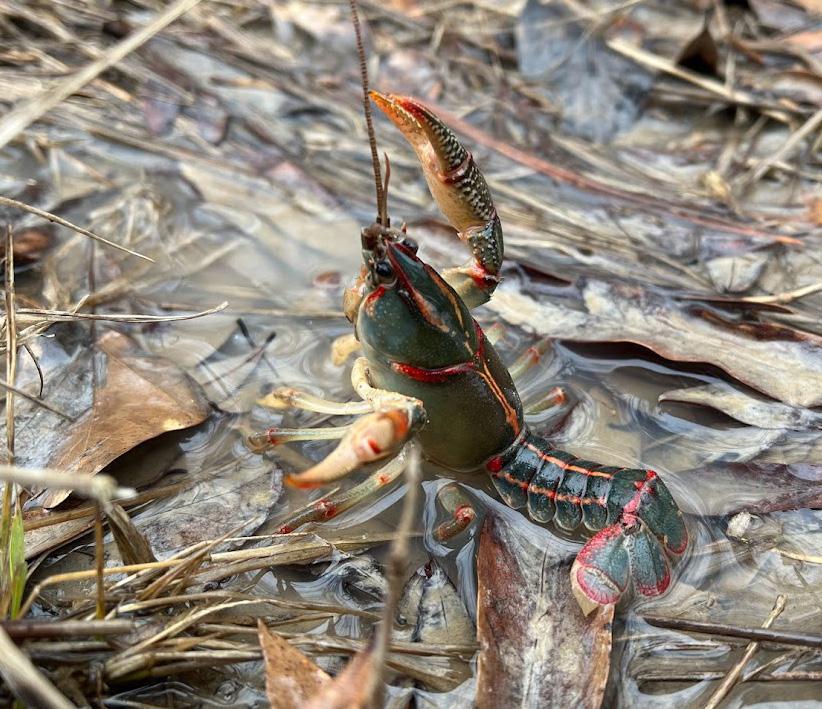
Researchers sampled MDC-owned conservation areas to examine how these species were responding to land management practices. When examining disking and mowing in Otter Slough and Duck Creek wetlands, they found that burrowing crayfish responded positively to the reduction in vegetation that these practices provided. Although it is unknown why, burrowing crayfish show habitat preferences for reduced canopy cover, and mechanical vegetation management provided excellent habitat for them. The species showed no negative responses to the soil disturbance that accompanied the land management. Further, the burrowing crayfish did not respond to disturbance via prescribed burning at the Sear’s Memorial Wildlife Area in Audrain County. They did, however, congregate around the artificial ponds installed for amphibians in the prairie. These types of land management practices are often implemented to support species of interest, including prairie chickens, white-tailed deer, and waterfowl. It was a great result to discover that burrowing crayfish are also benefitting from the MDC land management.
These studies have sparked interest in how these elusive burrowers may respond to other restoration and agricultural practices. While we often see news of endangered species and the detrimental impacts of humans on the natural world, these initial studies indicated that burrowing crayfish are co-existing and even benefit from some human impacts. The efforts of Missouri’s conservation biologists and managers are not lost on the burrowing crayfish. So, next time you’re walking in your local wetland and see a crayfish chimney, peer down and see if you can spot one of our hidden heroes of wetland productivity!
Caitlin C. Bloomer, Ph.D. Illinois Natural History Survey
SEPTEMBER - 2023 49
Lacunicambarus ludovicianus, the Painted Devil Crayfish, giving an aggressive display.
Outdoor News
(Photo: Caitlin Claire)
Road trip. We didn’t choose the perfect playlist. Or program the GPS. But we did fuel the car that made you realize there are no wrong turns, only new adventures. When the energy you invest in life meets the energy we fuel it with, amazing journeys happen.


50 CONSERVATION FEDERATION


SEPTEMBER - 2023 51
The Land Learning Foundation
Land Learning Foundation (LLF) is an environmental education and conservation organization. We are a 501(c)(3) non-profit dedicated to the protection, preservation, and restoration of Missouri lands, along with the education and training of today’s youth.
Our mission is to foster stewardship through outdoor experience, youth education, and conservation. Our goals are to provide outdoor education experiences for the next generation, preserve land through conservation easements, and in the end, facilitate a stronger connection with the natural environment.
LLF has several programs to accomplish our mission: an In-Lieu Fee mitigation program, holding conservation easements, a small grants program, and an outdoor education and recreation program.

In-Lieu Fee
LLF assists developers and landowners who need Clean Water Act section 404 permits that are required when a project produces unavoidable impacts on Waters of the United States (streams and wetlands). In-Lieu Fee is one type of mitigation used to compensate for unavoidable wetland and stream impacts. Through InLieu Fee advanced credit sales, we ensure projects will meet federal regulatory standards. The Fee is paid by the landowner or developer to buy wetland or stream credits from LLF in-lieu of conducting their own mitigation project or buying credits from a mitigation bank. The Fee represents the expected costs of replacing the lost or degraded stream or wetland and is used to restore wetlands and streams in the same watershed. LLF works with willing landowners to establish stream and wetland mitigation sites. Those mitigation sites require a conservation easement from the landowner to legally protect the land features. All land use activities can continue if the protected feature is not compromised.
52 CONSERVATION FEDERATION
Feature Story
Conservation Easements
A conservation easement is a legal agreement between a landowner and a third party such as LLF. LLF works with landowners to ensure the use of the property protects its conservation values. Landowners will still own their land and can continue use of the property except for uses restricted in the easement. Protections vary from easement to easement. Perpetual conservation easements run with the land and future ownerships will be subject to the protections set out in the conservation easement.
Wetland and Stream Projects
LLF has restored over 52,000 linear feet of streambank and 133 acres of wetland to date. We hold 780+ acres in conservation easements which protect the natural value of the restoration projects. We also work with other mitigation providers, private landowners, and grants to hold conservation easements. Some of our projects are briefly described below.
This area is adjacent to Fiddle Creek and the Missouri River, so it is prone to seasonal flooding. The project involved planting hundreds of trees and hydrophytic vegetation which can withstand extended seasonal floods. The restoration will store floodwater, with the goal of protecting nearby developing land and farms. LLF holds a Conservation Easement on both properties to protect the high-quality wetland in perpetuity.
Sni-A-Bar Creek Wetland Restoration
LLF partnered with a private company in 2018 to hold a conservation easement on 200+ acres in Jackson County, MO. Several wetlands were created and restored near the Sni-A-Bar Creek, along with re-meandering a tributary. Sni-A-Bar Creek is a tributary to the Missouri River. The restored wetlands slow down and filter nutrients, pollutants, and sediment out of water before it enters the creek, offering vital protection of water resources. This strengthens the natural aquatic systems and contributes to clean drinking water. Wetlands also store large amounts of carbon in the soil due to slow decomposition. The large wetlands of this project provide vital habitat for migrating waterfowl, waterbirds, amphibians, and reptiles.
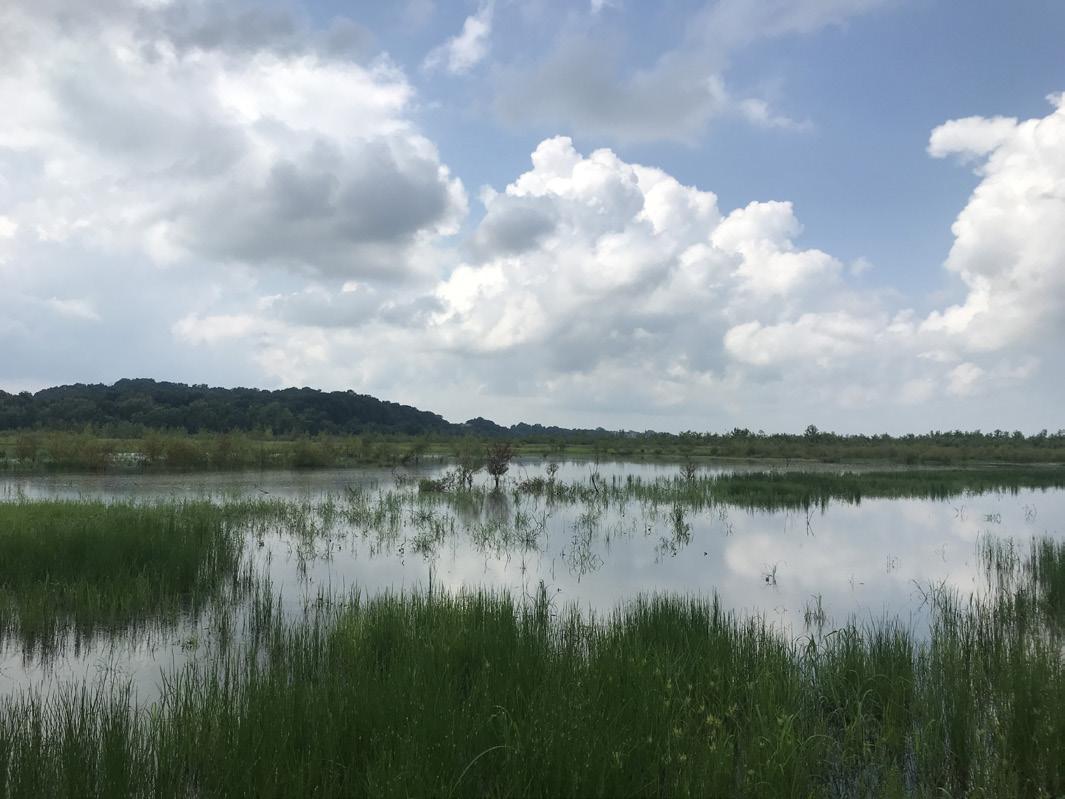
Cuivre River Riparian Mitigation Site
The Cuivre River Riparian Mitigation Site was completed in 2020. Extreme erosion was occurring on the site due to the force of the river on the banks after it passed under the narrow opening of the Highway 61 bridge. LLF stabilized the 25-foot tall banks of the Cuivre River just north of Troy, MO, and restored and preserved about a mile of the Cuivre River. The restored streambank and riparian buffer were placed under a perpetual conservation easement with several landowners, to preserve the river. LLF used rocks of various sizes to create vanes and weirs which will prevent the soil on the banks from washing downriver.
Labadie Bottoms Wetland Restoration
Land Learning partnered with Mitico, LLC who restored a 60-acre wetland tract in Labadie Bottoms in Franklin County, MO in 2013. The emergent and forested wetland in the Labadie Bottoms area provides vital habitat for amphibians and waterfowl who stop by on their migration route. In 2020, a neighboring supplemental 35 acres of wetland was restored and preserved using LLF’s In-Lieu Fee Program.
SEPTEMBER - 2023 53
Left - Youth learning to fish at the Ellisville Elks Lodge Annual Youth Fishing Derby. (Photo: Doug Helmers.)
Feature Story
Right - Wetland restoration at Labadie Bottoms. (Photo: Katie Wiesehan)
In addition, thousands of bare root seedlings have been planted as a 175-foot buffer back from the edge of the river. In three different areas along the river, common and swamp milkweed plugs were planted. The milkweed plugs were funded through the Risberg Grant, which LLF received from the Conservation Federation of Missouri. LLF also placed willow stakes along the stream bank and spread native seed on the slopes.
Nearly 100 adults and kids participated in this event on a beautiful day in Lincoln County, MO. Family Field Day was held on a farm that is in a conservation land easement trust. The land manager has been restoring the site to improve wildlife habitat for deer, turkey, and quail. Attendees were able to take a tour of the farm and hear about the successes and challenges of the restoration during a wagon ride. They learned about invasive species, their effects on the ecosystem, and control mechanisms.
Small Grants
The Land Learning Foundation began a new process of grant giving in 2020.
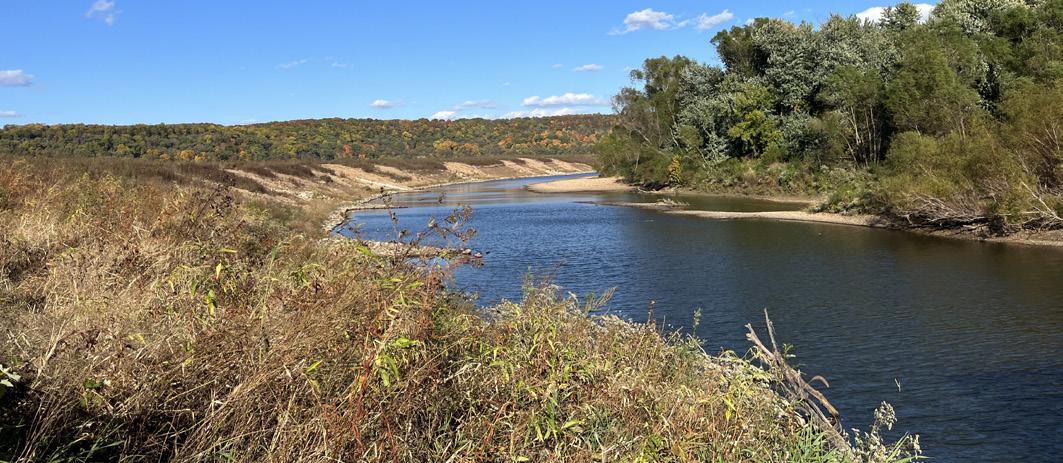
LLF can provide grant funding which is targeted at programs that give opportunities to people to get outside. The project must conform to LLF's mission of outdoor education and conservation. The program may cater to any age range and be of any scale. The geographic range of Missouri and the Midwest will take priority. Funding typically does not exceed $3,000.
Last year, for example, LLF sponsored the Ellisville Elks Lodge Annual Youth Fishing Derby. Volunteers from the Elks Lodge taught fishing basics and how to bait a hook to the 110 participants and LLF provided a fishing pole and tackle box for the youth to take home after the event. In addition, LLF can provide native grasses and forbs to schools for planting pollinator gardens for outdoor classrooms.
Outdoor Education
LLF provides people of all ages with opportunities to connect with the natural world through interactive outdoor education programs and participation in habitat restoration projects and outdoor sporting activities. As part of Land Learning Foundation’s mission to bring education opportunities to people of all ages, LLF hosted the Exploring Nature Family Field Day in September 2022.
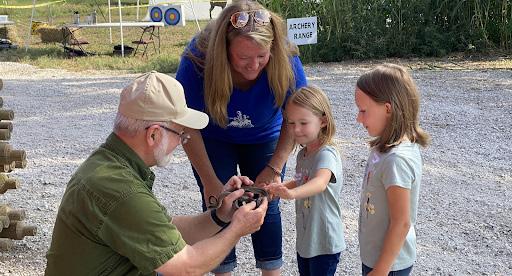
LLF and partners demonstrated the steps and benefits of planting food plots and native grass/wildflower habitats, as well as plans for improvements on the farm. The day included hands-on opportunities to learn gun and archery safety and shooting skills. Partners presented talks on the benefits of prescribed fire, composting, and soil health which included demonstrations with a Rainfall Simulator. The Critter Corner allowed attendees to learn about and get up close and personal with a Prairie Kingsnake, frogs, toads, butterflies, bees and some very friendly baby goats. Through the participation of 19 partnering public and private conservation organizations, LLF was able to share our passion for the outdoors by providing information on the opportunities and resources available for kids of all ages.
For more information on the Land Learning Foundation go to www.LandLearning.org or call Katie Wiesehan at 314-650-9596.
54 CONSERVATION FEDERATION
Feature Story
Doug Helmers, Board President & Katie Wiesehan, Natural Resource Specialist/Deputy Director
Left - Streambank restoration on the Cuivre River. Rock structures encourage sediment deposition which stabilizes the strambank. (Photo: Katie Wiesehan)
Right - Bruce Schuette with the Missouri Prairie Foundation showing off a prairie kingsnake at the LLF Family Field Day event. (Photo: Doug Helmers)
Birders and Wetlands: A Data-driven Love Story

As conservation enthusiasts, we know that wetlands are important. They are our most productive natural community, supporting the lives of countless species of biotic and abiotic life, including essential bacteria, microbes, plants, insects, birds, mammals, reptiles and amphibians, fish, among many others. Missouri hosts about 340 species of bird in the state, give or take 10-20 rarities each year. Did you know that over 300 species of bird have been recorded on our largest Missouri wetlands throughout the year? That’s a major percentage of the birds that occur in Missouri, and those rare birds I mentioned are usually found in wetlands.
We know these statistics thanks to an online, publicly accessible database of bird observations known as eBird (eBird.org). eBird helps us monitor not only bird populations, but the activity of birdwatchers, or birders, a rapidly growing user group on our public lands. And it appears that in addition to wetlands supporting essential ecological systems, they’re also supporting the state’s birdwatching activity.
SEPTEMBER - 2023 55 Feature Story
The prairie warbler's song is a thin, rising "zee-zee-zee-zee-zee-zee." The call is a "tchup." (Photo: Noppadol Paothong)
eBird.org
A lot has changed since the Cornell Laboratory of Ornithology introduced eBird in 2002 for casual birders and professional ornithologists alike to submit their bird sightings. Originally focused on North America, eBird has since expanded to provide coverage across the globe as of 2010. Because you can view other birders’ bird records across the globe online in real-timerealtime, eBird can help plan birding trips, find rare species, and keep track of one’s birding lists. However, recent advances and the mind-blowing quantity of data that eBirders are submitting each year have enabled much more sophisticated use and analysis of eBird data that are contributing to science and conservation.
Over 1.4 billion bird records
The eBird numbers are just incredible. Since its inception, 896,119 registered eBirders across the globe have submitted 81,943,013 birding checklists. In 2021, eBird surpassed over one billion bird records logged – it stands today at a cumulative 1.48 billion records. This makes eBird the largest community-science effort ever and grows by the minute.
• The leaderboard of all eBird checklists submitted is led by the U.S. with over 53 million, followed by Canada, India, Australia, and Spain.
• During April and May (the most popular birding months due to spring migration), it’s not uncommon to see over 20,000 eBird checklists submitted by 8:00 AM CST across the globe.
• eBird.org hosts a Live Submission Map where you can view eBird checklists being submitted in realtime on a world map – talk about feeling a part of something bigger!
• These growing trends in eBird are occurring here in Missouri too. The number of eBird checklists submitted in the state have increased over 500% between 2015 and 2021 (Figure 1).
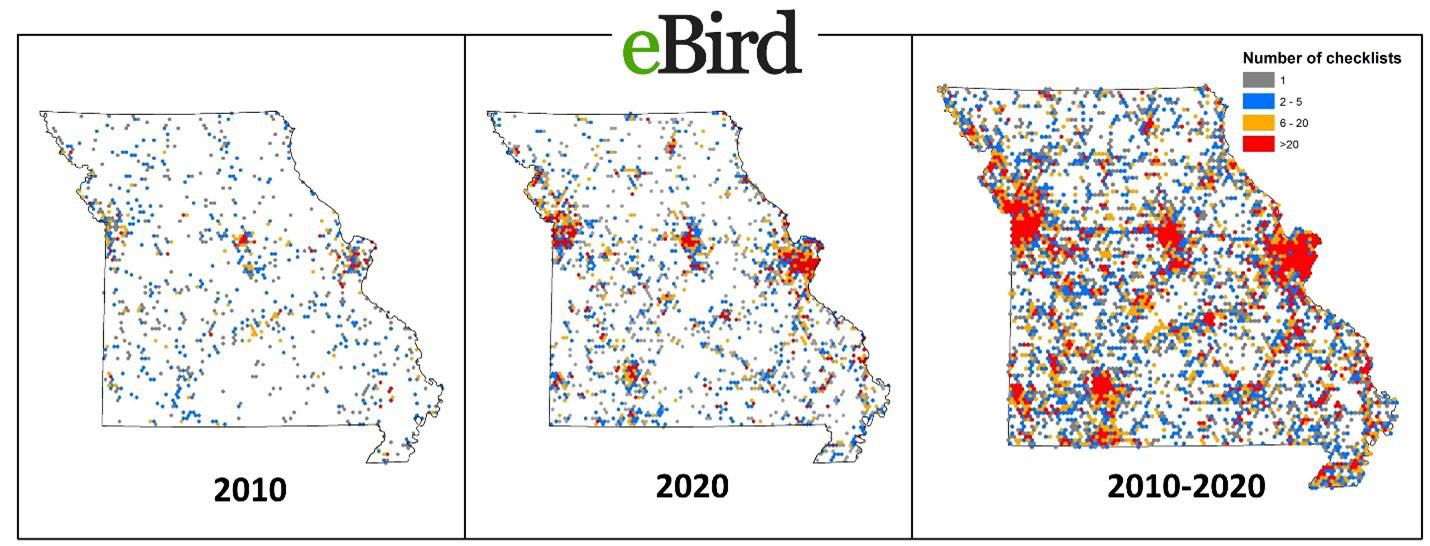
• It took eBird 19 years to reach one billion bird records in 2021, but most of eBird’s growth has been in the last 5-10 years. It’s projected that eBird will reach two billion bird records by 2024.
This consistently growing abundance of data is allowing eBird to build and hone science tools like the newly updated eBird Status and Trends tool, which allows us to visualize bird population trends at population-level, regional, and hemispheric scales (Figure 2). You can view over 2,000 eBird maps on Abundance, Status and Trends at science.ebird.org/status-and-trends.
Birder trends
It’s not only the eBird data on birds that are proving useful, but also data on birders – a rapidly growing community of area users. Popular birding destinations (think of parks, conservation areas, state parks, refuges, and other public green spaces) are designated as eBird Hotspots; when one submits an eBird checklist, they choose a Hotspot indicating where they birded.
The eBird app also calculates the amount of time birding and distance traveled to calculate effort. These measures of effort inform eBird’s analyses to estimate bird abundances and trends, but it also helps us as natural resource managers to learn not only what birds they’re seeing, but which areas birders are visiting, how long they’re spending there, and how far they’re traveling on the area. We don’t have these data on any other user group on our state or federal lands – this provides a big opportunity for state and federal agencies to engage this user group that is using our areas year-round.
Birders use public wetlands year-round
In Missouri, our wetlands are the most visited eBird Hotspots in the state, year-round, by a long shot. The top 10 of 15 eBird Hotspots (by number of species; Figure 4) are wetlands managed by the Missouri Department of Conservation (MDC) or U.S. Fish and Wildlife Service (USFWS); the top 24 of 25 Hotspots are publicly owned wetlands or lakes (eBird.org). And with all eBird data, those numbers continue to grow.
56 CONSERVATION FEDERATION
Left -Number of eBird checklists submitted in Missouri in 2010, 2020, and total checklists from 2010-2020. (Photo: Emily Sinnott)
Story
Right - eBird Trends Map for Prairie Warbler showing population trends across the species’ range. (Photo: Science.ebird.org)
Feature
The number of eBird checklists submitted on the MDC intensively managed wetlands and USFWS National Wildlife Refuge wetlands alone have grown 279% from 2015 to 2021 (Figure 5). We can also look at which month or time of year birders are most active on eBird and for how long. For instance, on Eagle Bluffs Conservation Area, the duration of birding (in hours) in the month of April has increased 250% from 2015-2021.
Birder engagement
Outdoor recreation is constantly changing. How people connect to our natural resources and what they value is important to understand. While hunting and angling have seen steady declines over the years, birding is one of the fastest-growing outdoor activities. Understanding this user group is essential to identifying potential needs and future opportunities. For example, if birders are present on our wetland areas year-round, could we possibly engage this user group more than we have in the past? Are there certain times of year that would be more effective to reach out to birders? Are there groups of people that like to bird, but haven’t ventured out to our public areas for one reason or another? What might help these birders overcome those barriers?
It is also important to remember that eBird is only one helpful dataset that provides insight into birder activity. Not all birders use eBird, so while the numbers are staggering and data is useful, it is still just a modest estimate of the larger wildlife viewing community that enjoys being outside and values our natural resources.

Conservation works
North American birds are declining, and fast. An article in the journal Science in 2019 authored by the top ornithologists in Canada, the U.S. and Mexico quantified a net loss of 2.9 billion North American birds since 1970 (Rosenberg et al. 2019). We’ve lost 29% of North American birds in the last 50 years. But not all birds –in the Science article, trends in bird populations were organized by breeding habitat. The hardest-hit breeding habitat is grassland, which has shown a 53% decline in its bird populations since 1970 (think about that!). Of all the biomes, wetland is the only group that has shown an increase (13%) over the last 50 years. This is due to concerted efforts by wetland conservation groups, waterfowl hunters, and dedicated federal funding to conserve wetland habitat and research for waterfowl. Likewise, trends by species group were also listed in the Science article; while waterfowl numbers are increasing (56%), other wetland-dependent groups like shorebirds and waterbirds have shown population declines by 37% and 21%, respectively.
The effectiveness of wetland conservationists and waterfowl hunters begs the questions: could we engage with birders better? Could birding groups be called to action on wetland-specific work for other groups of species? The simple answer is yes, and yes. In the last few years, I have called on Missouri’s birding groups to help support migration research projects in the state and on the wintering grounds for our declining songbirds, and I am proud to say that these groups have admirably stepped up to support those projects within and beyond our borders.
Other questions that spring to mind are: could birding groups be engaged in other conservation stewardship actions? Could birding festivals or birding competitions help broaden networks of community conservationists? Could a migratory songbird conservation stamp program similar to the federal Duck Stamp establish a financial pipeline for other habitat work on wetlands and other natural communities?
While the answers to these questions are largely unknown, I believe the sky is the limit and I know other birders and conservationists believe that too. As seen through past wetland conservation successes, progress can (and must) be made built upon our passion and love for our natural resources. Luckily, we live in Missouri where conservation partnerships are gospel, so I know we are up to the task.
Sarah Kendrick
Migratory Bird Biologist, U.S. Fish and Wildlife Service
SEPTEMBER - 2023 57
Feature Story
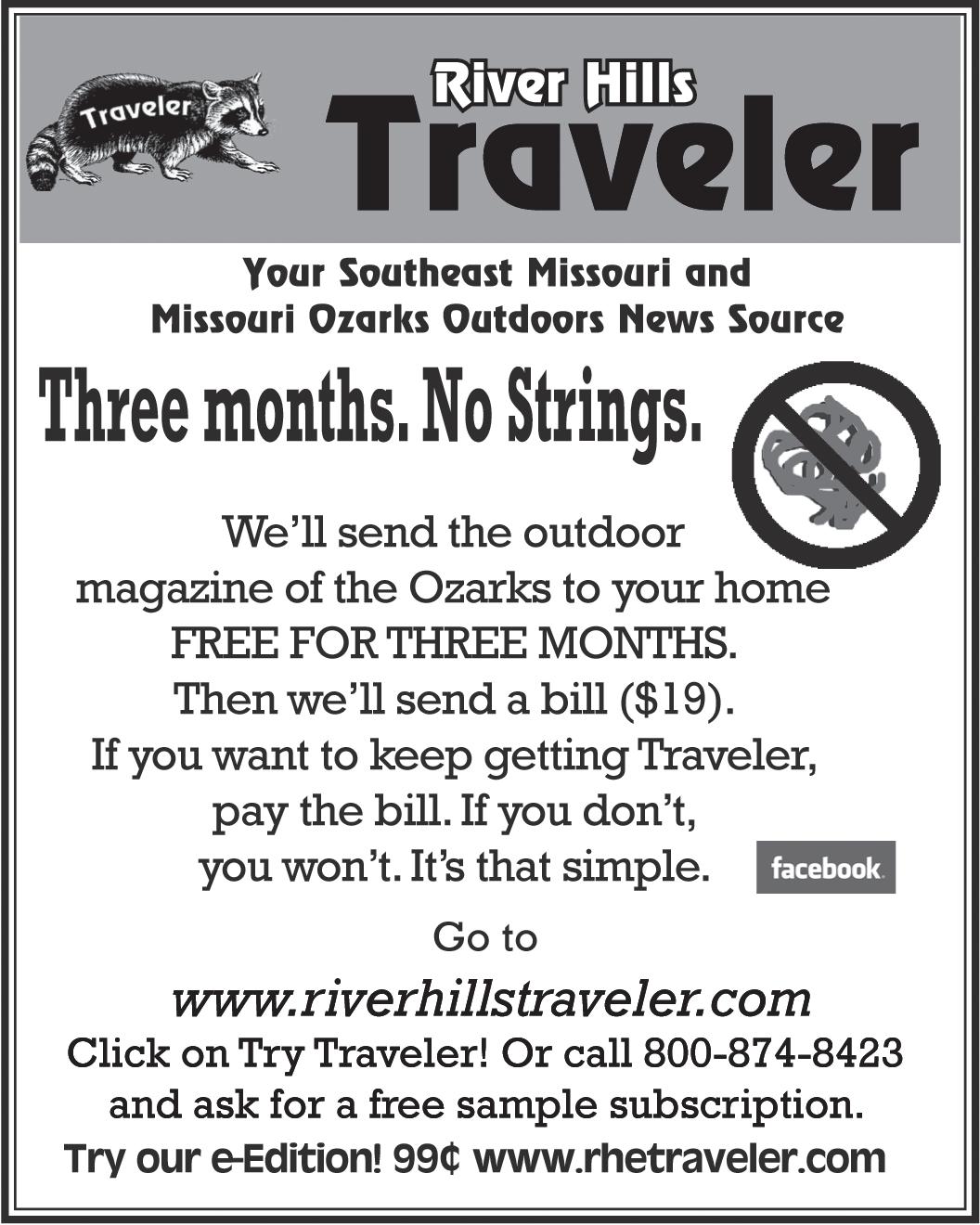


58 CONSERVATION FEDERATION
The original seed source of our plants is from wild populations found growing in Missouri. Our plants are as “wild” as we can possibly keep them.
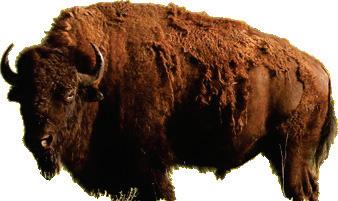




3 Flowers, Grasses, Trees, Shrubs, Vines, sedges, pond plants.
3 Plants for full sun, full shade and anywhere in between..
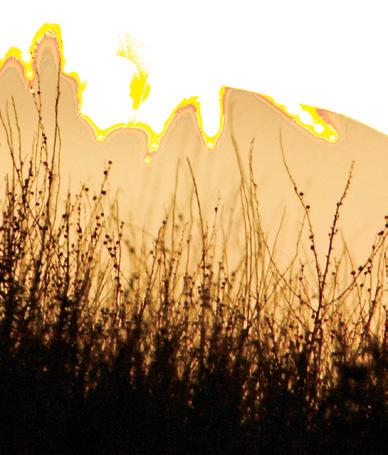
3 Seed, seed mixes, and custom blends.
3 Expert advice.

SEPTEMBER - 2023 59 • Superior mast production • Greater survivability
Faster growth Bucks’ Unlimited Oaktm is a trademark owned by the University of Missouri (“MU”) for a tree developed at MU with the support of Forrest Keeling Nursery. Forrest Keeling Nursery is the exclusive licensee for this product. Wildlife are wild about... 800 - FKN -2401 • (573) 898-5571 • forrestkeeling.com Quaker Windows & Doors Freeburg and Eldon, MO quakerwindows.com THE FABRIC OF MISSOURI
•
Missouri Wildflowers Nursery 9814
www.mowildflowers.net mowldflrs@socket.net 573-496-3492
Pleasant Hill Rd Jefferson City MO 65109
Native Aquatic Gardening
Native gardening has arguably been the most important garden trend of the 21st century, but it is unrealistic to call it a "new" style. Humanity's first gardens were native gardens, with proto-farmers learning to grow the useful species in their immediate environments. It wasn't long before humans began carrying their favorite plants with them as they traveled, both for dietary consistency and to hold on to some of the beauty of their homelands as they made new homes in new places.
Over the centuries, gardening became an industry and this simplified and homogenized the plants we tend to grow. Both amateur and professional gardeners utilized the products offered by the global garden trade, a collection of plants that became characteristic of gardening in specific styles, and often requiring heavy fertilization and pesticides to survive. Gardening left the realm of ecology to become chemistry. This went on for many centuries, but eventually, gardeners gradually began returning to native species.
Garden design pioneers like Beth Chatto, Piet Oudolf, and Chris Baines encouraged gardeners to be more ecologically conscious with their planting and to appreciate the aesthetics of “wild gardening,” in which one emulates the beauty of natural plant communities, rather than pursuing structured garden plots and arrangements. Meanwhile, concern about climate change, the loss of species, and other forms of humanmediated environmental damage have led gardeners to the intersection of aesthetic design and conservation. These transformations resulted in the popularization of native gardening, a return to ancient practices filtered through the lens of a globalized gardening aesthetic.
The commercialization of native gardening meant native plants became more readily available, and even those with little interest in conservation have seen the benefits.
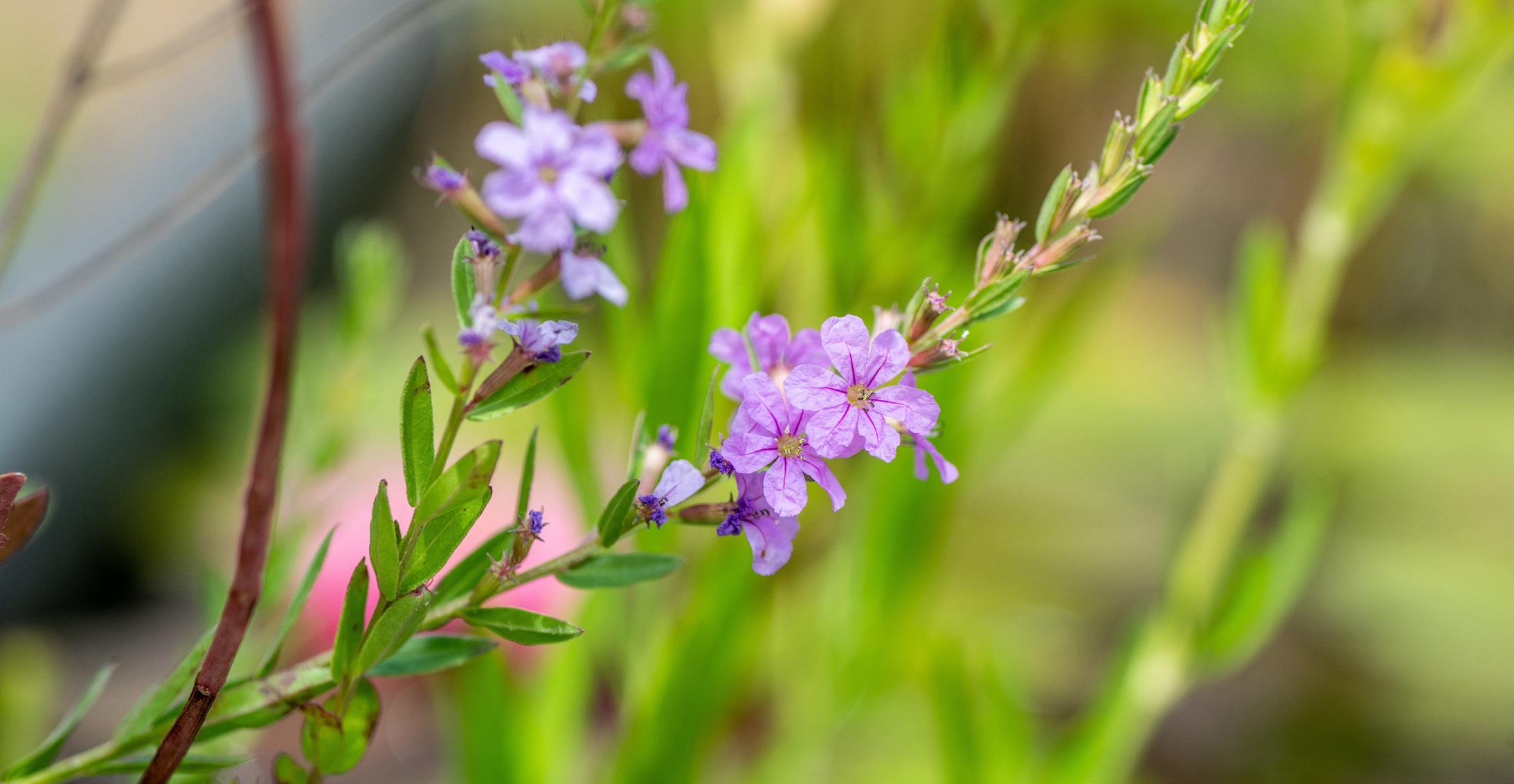
60 CONSERVATION FEDERATION Feature Story
Natives tend to be more disease resistant, need less (if any) watering, require only seasonal maintenance, and yet still provide all the color and architectural drama of the most cherished garden-industry hybrids. These plants evolved to live in these environments and are thus more resistant to their ecosystem's unique challenges.
Practical utilitarian value and headier environmental considerations have therefore combined to push native gardening into the mainstream, and this has created new opportunities for conservation, and for gardeners to encourage biodiversity in our human-engineered environments.
Over the centuries, we've also learned that the connections between botanical and animal species are incredibly intimate and complex. For instance, the two species of Yucca that are believed to be native to Missouri, Yucca glauca and Yucca arkansana, are both absolutely dependent on the yucca moth, Tegeticula. The plants cannot make seeds without the Yucca moth’s pollination, and the Yucca moth cannot produce larvae without Yucca seeds for them to eat. This intimate connection, known as “reciprocal obligate mutualism,” means that these two species must be conserved together, and there are many other examples of relationships like this all around us.
While many of our native insects utilize garden exotics, studies have shown that many species need or at least prefer the particular chemicals and nutrients found only in native species. For those interested in utilizing gardens as a haven for native species—native gardening with an eye toward increasing botanical diversity is the key. This doesn’t just mean packing in as many different species as possible, but strategically selecting plants to provide as long a blooming season as possible (from spring to autumn), and encouraging wildlife by selecting plants from a range of families.
Nurseries have helped gardeners looking to encourage wildlife by offering and marketing plants for important pollinators like the monarch butterfly, and this kind of strategy gets us closer to making our collective gardens a benefit to wildlife, rather than simply an ornament. It is possible to capitalize on this momentum by encouraging gardeners to consider plants known to benefit other groups of interest to conservation. Convergently, this also encourages gardeners to seek out species that appreciate the conditions with which they are working.
When imagining the garden as a collection of ecosystem types, gardeners will select moisture loving plants for clay and wet soils, woodland plants for rich loam or shade, and glade plants for nutrient-poor, gritty soils. By planting according to existing conditions, gardeners create ecological zones within the garden that attract different species. The gardener's appellation, "right plant, right place," can therefore also apply to attracting and supporting wildlife.
Many of our essential native pollinators are tiny bees and wasps, and there are ways to encourage these smaller hymenopterans into our gardens, such as by including native species from the Apiaceae and Onagraceae families. Likewise, plants like Oenothera macrocarpa, a night blooming Onagracid, might be offered to encourage moths and evening pollinators. There is one realm of native gardening, however, that has been largely overlooked; the integration of native aquatic and semi-aquatic species. Marginal and wetland species, like Ludwigia alternifolia, Thalia Dealbata, and Lythrum alatum, should also be part of this effort as these species not only support essential pollinators but can also provide aquatic habitats for insects, amphibians, and fish.

SEPTEMBER - 2023 61
Left - Thalia dealbata - The otherworldly beauty of Thalia flowers. (Photo: Adrienne Legault)
Right - Ludwigia alternifolia - Ludwigia alternifolia's flowers attract numerous small bees and wasps into the garden.
(Photo: Adrienne Legault)
Feature Story
Feature Story
Humans have also been building ponds and water gardens since before recorded history, often diverting water for irrigation to serve their communities in ways other than growing food. Any water that one uses in a garden, even a shallow dish, will attract and ultimately act as a breeding ground for wildlife. This wildlife benefits the rest of the garden, with a deeper more diverse population of pollinators and plant predators, who then become food for other creatures. Ancient people used water gardens in this way, and modern gardeners are doing the same, creating bogs, ponds, and container gardens to interact with and observe these species living their lives.
Missouri, which has even been dubbed the "pond state," has long been a haven for water gardeners, with hundreds of thousands of private ponds and resources enough to support a community of pond makers and keepers. The pond industry, locally and around the country, has expanded as globalization reduced the barriers to entry with an influx of cheaper pond and water gardening equipment. Online commerce has fostered a network of pond plant specialists and served as a fertile ground for communities of enthusiasts who share their interests and plants with each other.
There are several native Missouri wetland species that have become popular in the pond plant trade, like Juncus effusus, Acorus calamus, Pontederia cordata, and Typha latifolia. A few natives have even gained global interest, like our native cardinal flower, Lobelia cardinalis, which is sold worldwide as a marginal pond plant and has recently gained popularity as an aquarium plant, where it is grown fully submerged and displays very different characteristics.
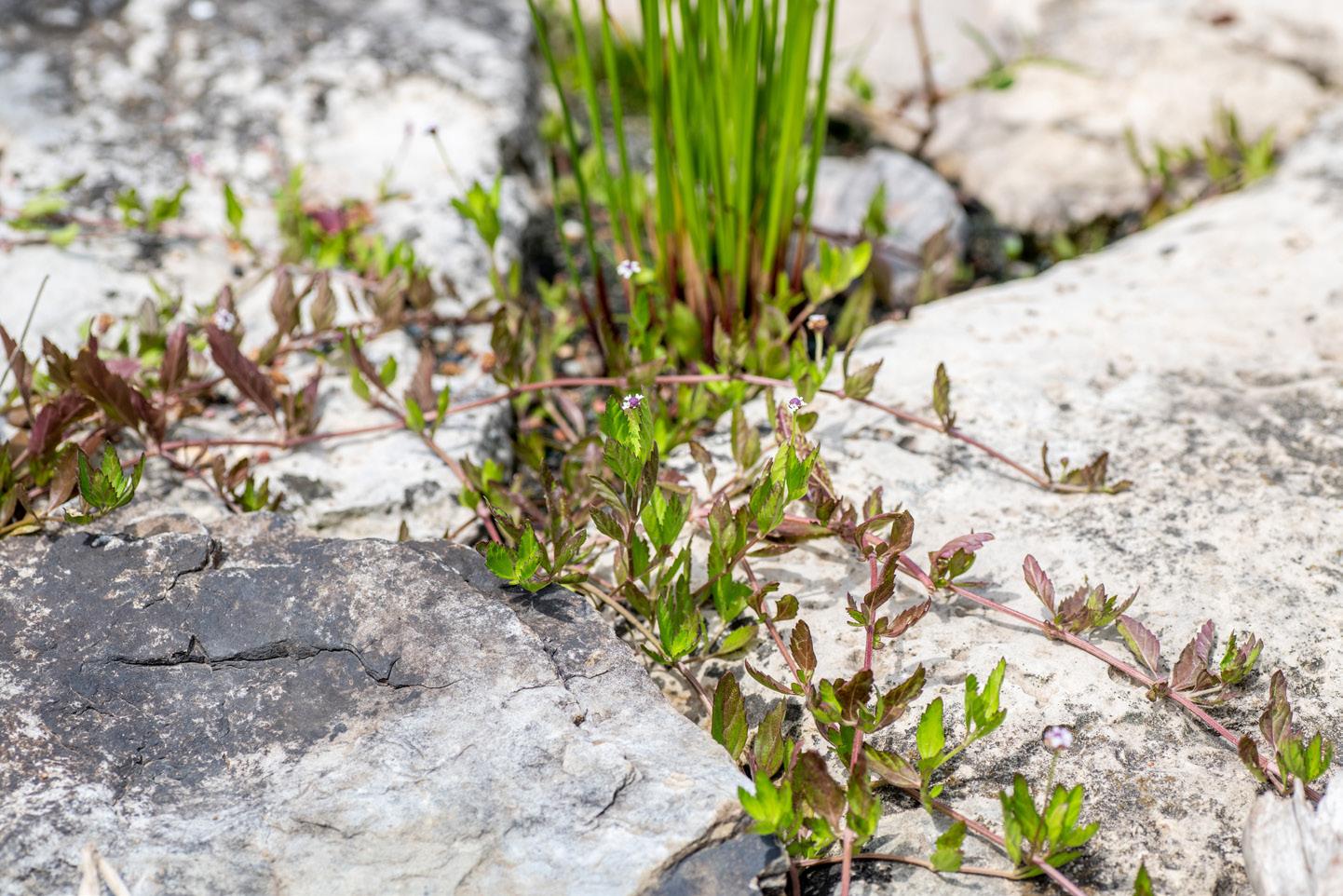
Pond plant suppliers also sell exotic species from the tropics, like Eichhornia crassipes., the South American "water hyacinth," or Pistia stratioides., the African "water lettuce.” These species are useful for shade and filtration, but exotic horticulture always carries some risks. In some regions, these species have escaped captivity to wreak havoc on native ecosystems.
This is one of the dangers of the international plant trade, and the history of gardening is also the history of humanity introducing species to their local forests and fields and only realizing much later how these aggressive exotics could become a hazard to the ecosystems they cherished.
The pond plant industry overlaps with another botanical industry and subculture focused on producing and cultivating plants for use in aquariums, terrariums, vivariums, and a whole slew of other "ariums." These are all types of indoor gardening, artistically replicating features of the natural world that include plant communities along with small captive animals. While most of the plants utilized in the “arium” hobbies are exotic, some of the most popular, like Ludwigia palustris and Bacopa rotundifolia, are not only native to the U.S., but also to Missouri.
While the popularization of these species is a benefit for native gardeners, maximizing the conservation value of our gardens will require increasing the diversity of the native marginals that we grow. For the last year, I have been working with a small group of aquatic plant growers, the Aquatic Horticulture Enthusiasts of Missouri (AHEM), to study the potential of various native species for different types of aquaculture. Our goal is to cultivate as many species as possible, focusing on lesser-known and underutilized species, and then to share these species with gardeners and nurseries.
62 CONSERVATION FEDERATION
Through local plant and fish stores, and through our connections to the Missouri Aquarium Society, we have also been engaging with hobbyists interested in aquariums, terrariums, vivariums, and other forms of indoor and outdoor gardening that might make use of these wetland species.
In these early stages, we have been concerned, primarily with identifying species not widely available in the hobby. One of the most promising we have found is Phyla lanceolata, commonly known as "frogfruit" or "fogfruit." This lovely little trailing perennial can grow in various conditions but loves the wet, moist soils at the pond's edge or in a marsh. The species is surprisingly adaptable, growing in shallow water, permanently water-logged soil, and drier soils with similar vigor. The flowers have been described as inconspicuous and certainly do not approach the blatant beauty of some exotic ground covers, but the multicolor blooms are still enchanting and are typically swarming with bees as soon as they appear in the garden.

On the more fully aquatic side of the spectrum, we are also growing Didiplis diandra, known as "water hedge" or "water purslane." This type of plant would likely go unnoticed when it appears in the wild, but this is an incredibly variable and adaptable species that can thrive in moderately deep water, but will thrive equally well when used in aquariums, where it forms into thick bushes of rich green foliage. When growing underwater, observed as a specimen rather than through turbid waters, D. diandra is a beautiful plant.
The pointed green leaves have reddish nodes, looking, to me at least, a lot like a tiny aquatic version of the European yew (Taxus baccata) that is grown all around Missouri as a hedge plant.
Our interest has recently entered the realm of Bryology as well, having collected Porella pinnata from private land, growing fully submerged in a running stream.
So far, this Porella species has proven able to adapt to entirely different conditions, from simple, unfiltered aquaria, imitating small pools that might form in wetlands, to river tanks with heavy flow pushing through rocky soils. Porella and other native bryophytes might become a substitute for the many exotic Asian mosses that aquarium keepers typically use and would simultaneously provide pond keepers with an alternative submerged bedding plant, replacing the highly aggressive Anacharis species commonly used as a submerged water cleanser in ponds and tubs. With its dense moss-like structure, Porella pinnata may even substitute for the ubiquitous exotic Asian mosses used in fish-breeding tanks.
The question remains, how does promoting native aquariums and marginal plants serve the goal of conservation? First, aquarists do accidentally, and sometimes even intentionally, introduce species from their gardens to the wild, and native planting reduces the risk of harmful introductions. One must remember that, because of climate change, some invasive species may now or soon be able to survive throughout the winter in Missouri, at least in sheltered gardens. From there it is a small step to the countryside.
Finally, encouraging interest in native planting serves broader conservation concerns by encouraging people to appreciate the diversity surrounding them. Our gardening aesthetics have been shaped by industry, media, and an innate attraction to the dramatic and exotic, but conservation depends on cultivating a love for the beauty that is much closer at hand—learning to appreciate not only the showiest and most blatant flowers, but also to appreciate those many plants that are more understated in their appeal, but arguably no less alluring. The world is filled with beautiful plants, but so are our wild bogs, marshes, and wetlands, and this unique aspect of our biodiversity also deserves to be preserved and appreciated.
SEPTEMBER - 2023 63 Feature Story
Micah Issitt
Left - Phyla lanceolata - The creeping tendrils of fogfruit at the border of our urban pond. (Photo: Adrienne Legault)
Top - Phyla lanceolata - The pastel shades of fogfruit flowers, often covered with miniature pollinators and plant predators.
(Photo: Adrienne Legault)


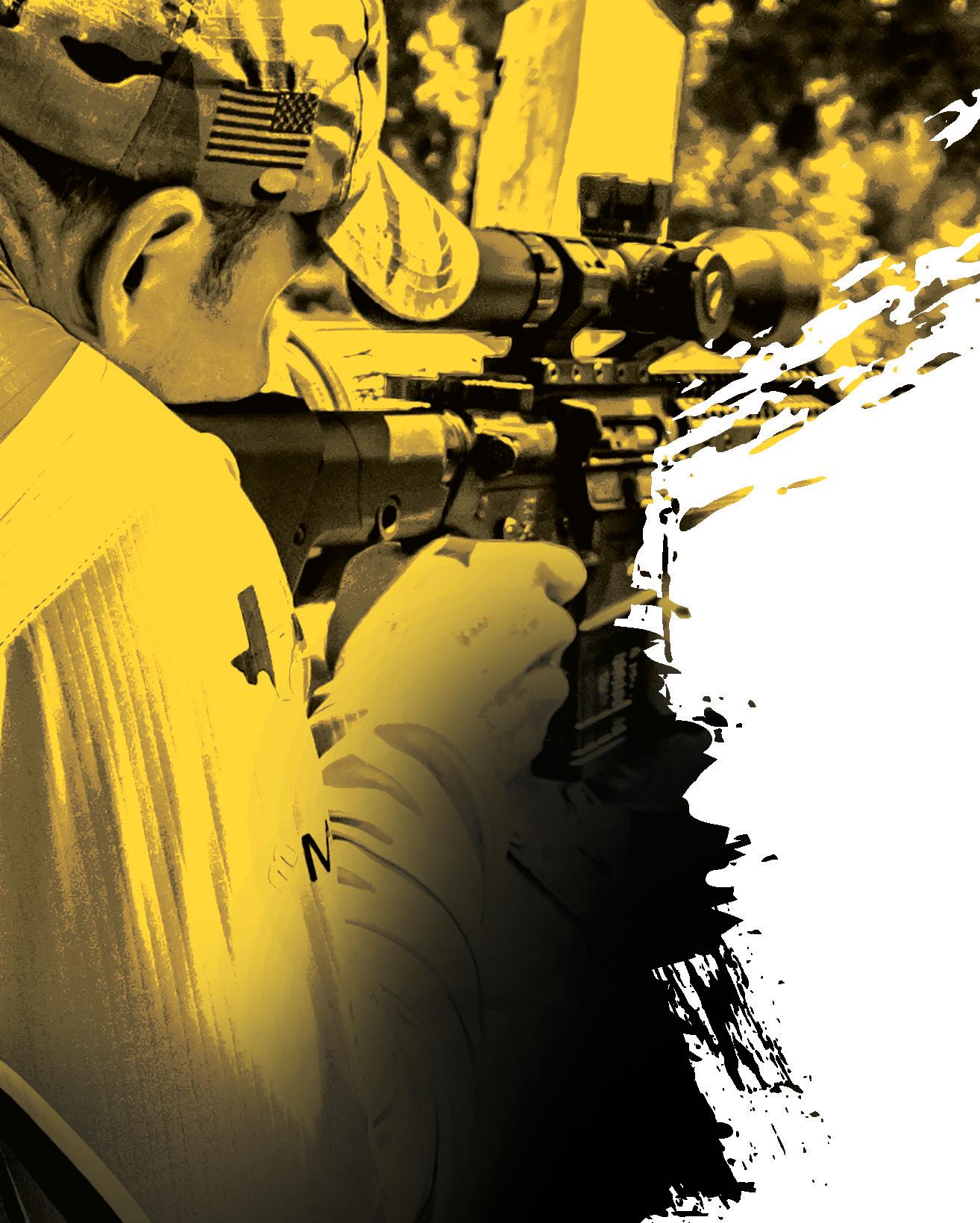
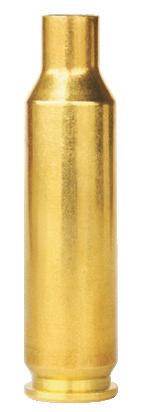

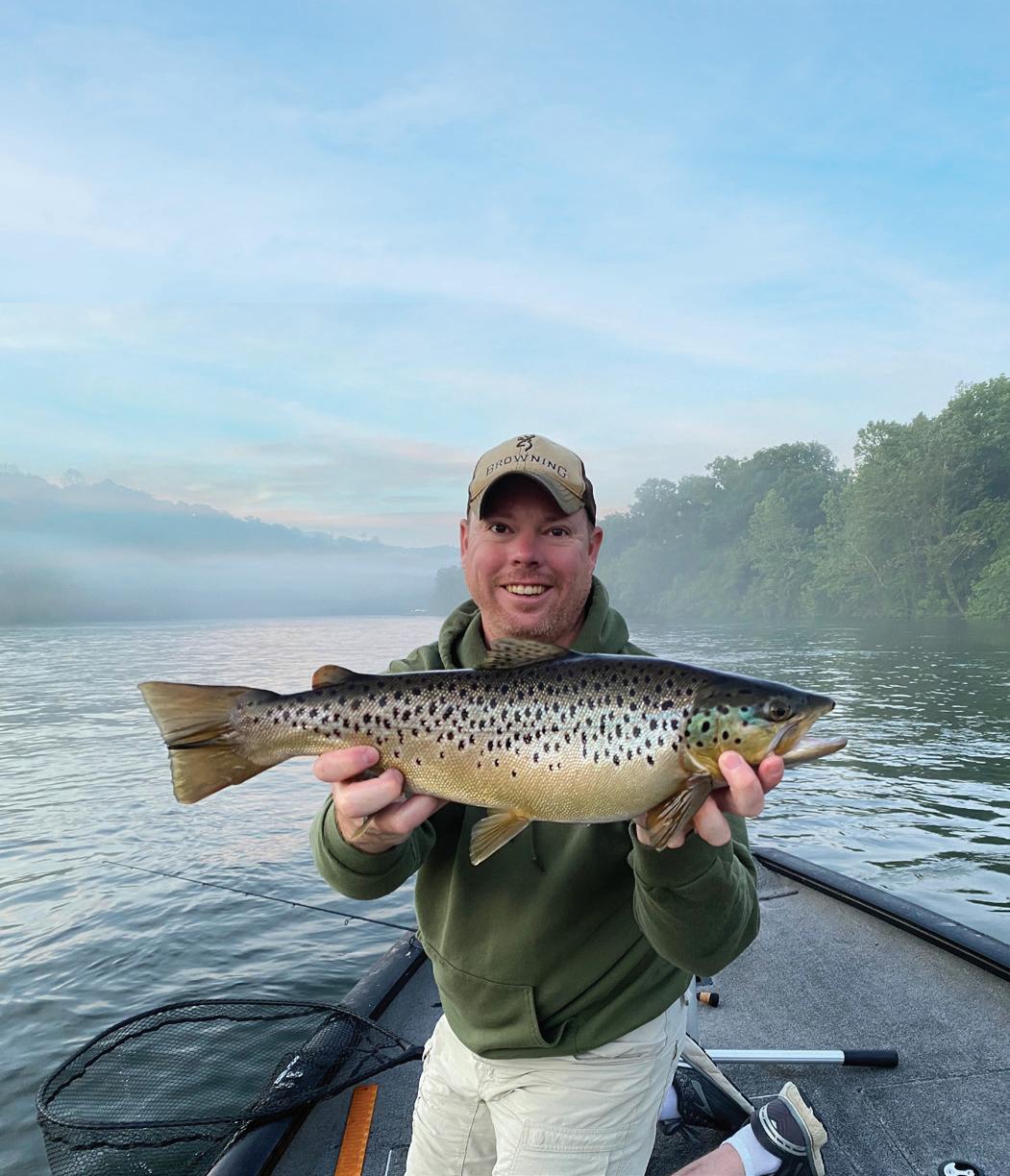

64 CONSERVATION FEDERATION 100% AMERICAN MADE & OWNED STARLINEBRASS.COM | 1 ( 800 ) 280-6660 PURCHASE FROM YOUR FAVORITE RELOADING SUPPLIER OR ORDER FACTORY DIRECT. BRANSON, MISSOURI 417.334.6380 LilleysLanding.com Boat Rentals Fly & Tackle Shop Fishing Guides







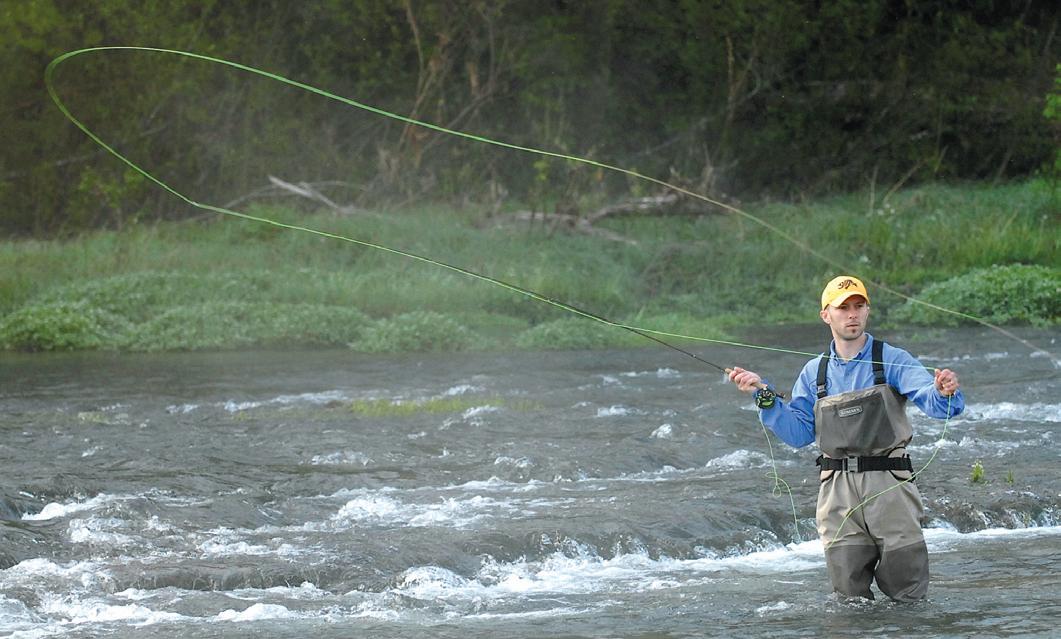





SEPTEMBER - 2023 65 missouriwine.org Proud to support our outdoor heritage Missouri’s Electric Cooperatives ® SMOKEHOUSE.COM 1-800-624-5426 32819 HIGHWAY 87 | CALIFORNIA, MISSOURI SMOKED MEATS — SINCE 1927 — Ad-simple_'22.indd 1 3/7/22 10:43 AM








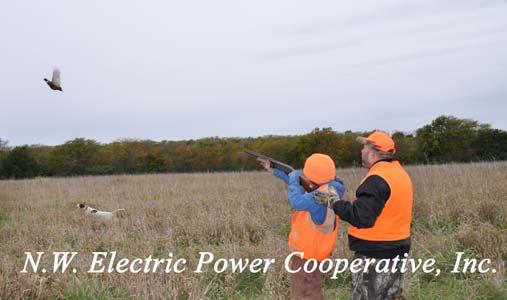









66 CONSERVATION FEDERATION CONSERVATION LEADERSHIP CORPS A program of the Conservation Federation of Missouri www.confedmo.org/clc OZARK BAIT&TACKLE • LIVE BAIT • TACKLE • PERMITS • ARCHERY • GUNS • AMMO VERSAILLES, MO 573-378-2220 VERSAILLES, MO 573-378-2220 L AURIE, MO 573-374-6065 L AURIE, MO 573-374-6065 GRAVOIS MILLS, MO *Storage Only* GRAVOIS MILLS, MO *Storage Only* w w w. e d g a r s s p o r t s . c o m w w w. e d g a r s s p o r t s . c o m 3 0 ’ & 4 0 ’ S t o r a g e U n i t s 3 0 ’ & 4 0 ’ S t o r a g e U n i t s Free Hot Breakfast Free Hot Food & Cold Beverages at 5:30 Kickback Free Wi-Fi Throughout the Hotel 100% Satisfaction Guaranteed DRURYHOTELS.COM 800-DRURYINN CFM MEMBERS RECEIVE RATES DISCOUNTED AT 10 % You’ve got it bagged with legendary Hodgdon powders. Phone 913-362-9455 www.hodgdon.com H170-044538-6_MOWildlifeGuide_Ad.indd 1 6/13/16 4:30 PM

Planning Your Future? Include the Conservation Federation of Missouri in your estate plans. Leave a legacy for the natural resources and traditions you have valued throughout your life. Make CFM a beneficiary of your will, trust, life insurance policy, or retirement plan. Any amount helps preserve Missouri’s resources and natural history for generations to come. What will your legacy be? Call 573-634-2322 to find out more information.
PROUD PARTNER

Bass Pro Shops® is proud to serve the sportsmen and women of Missouri. Since our doors first opened in 1972, we have remained dedicated to the conservation and enjoyment of our resources in the state we call home.


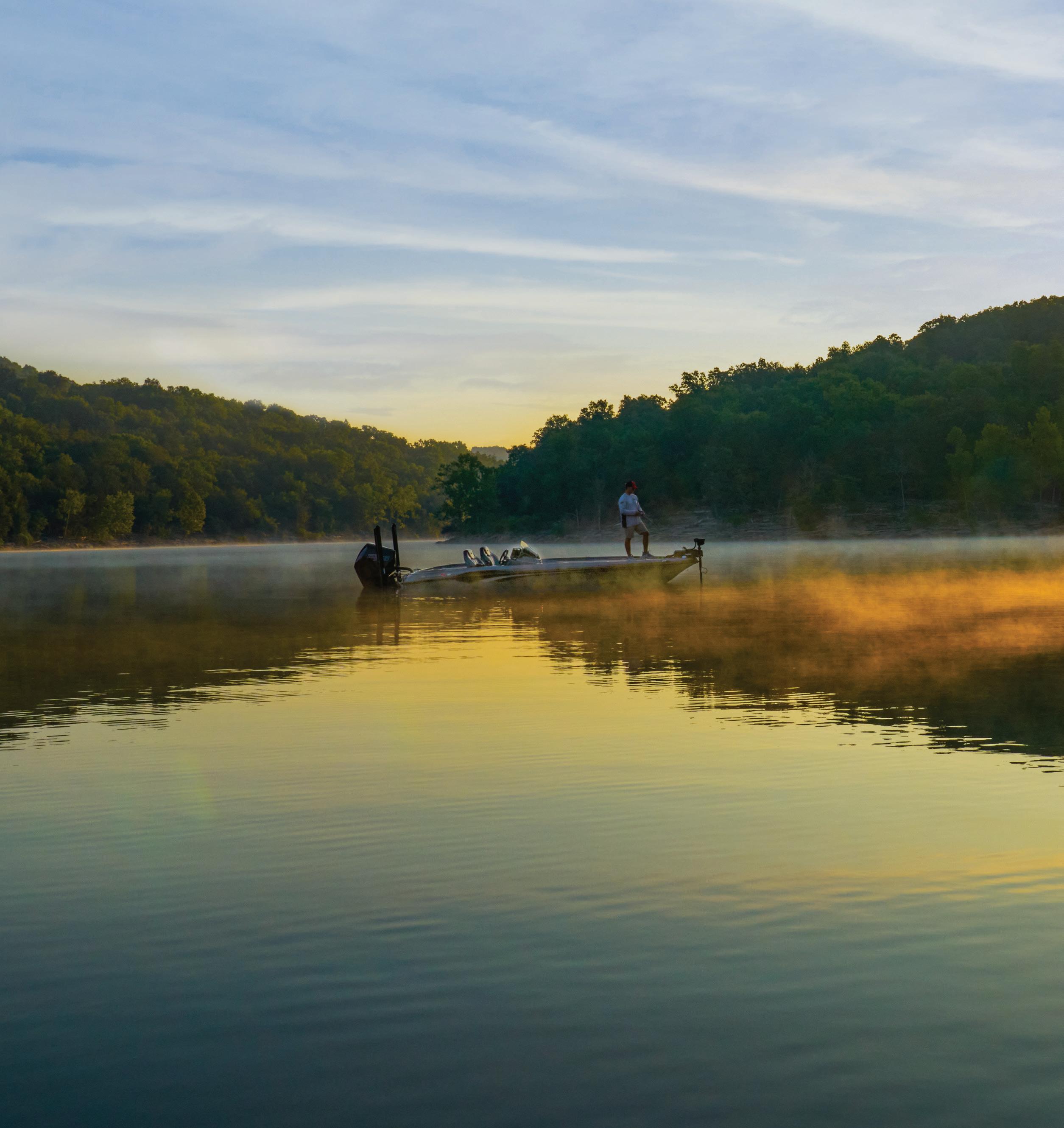
Learn more at basspro.com/conservation
BP231191050


























































































































































































